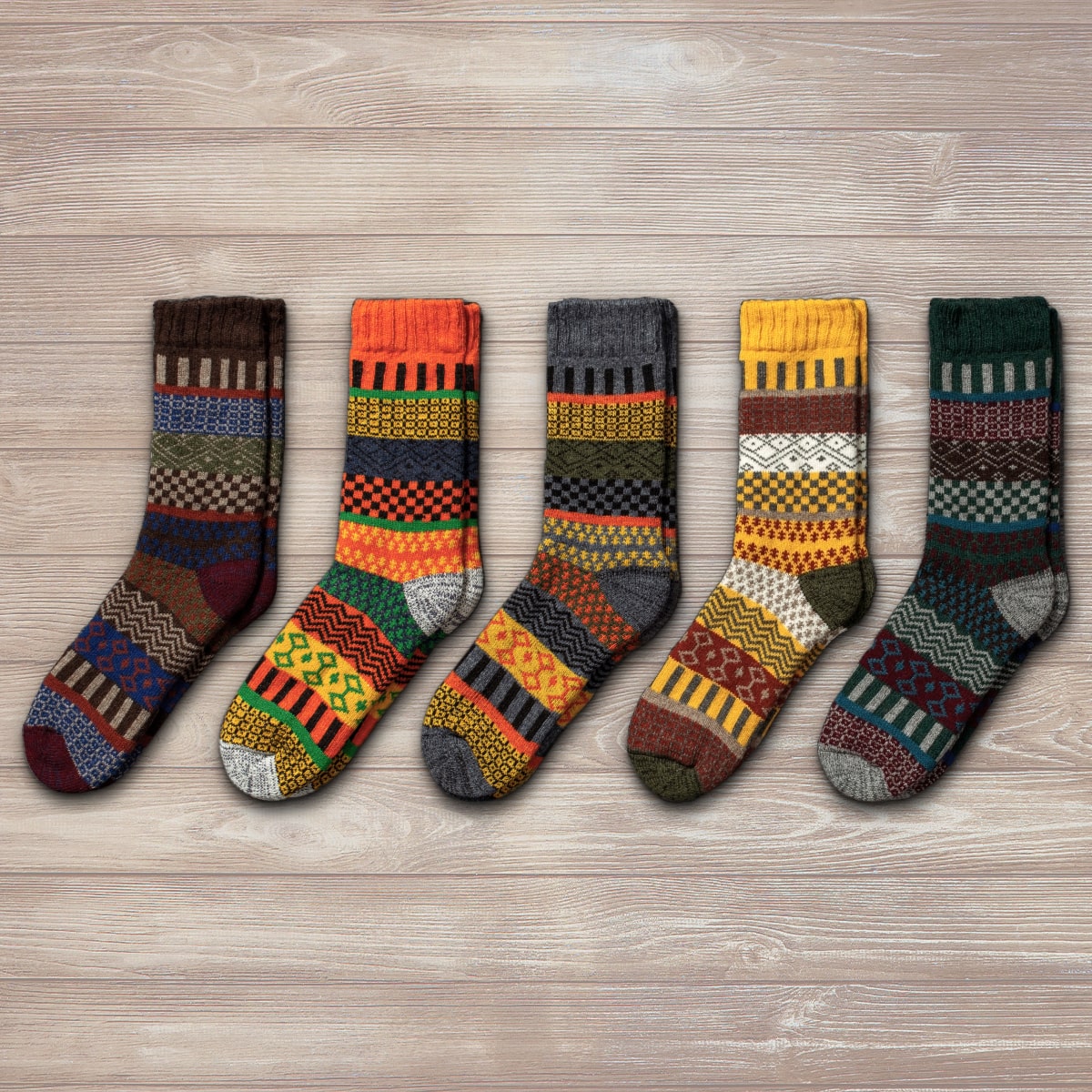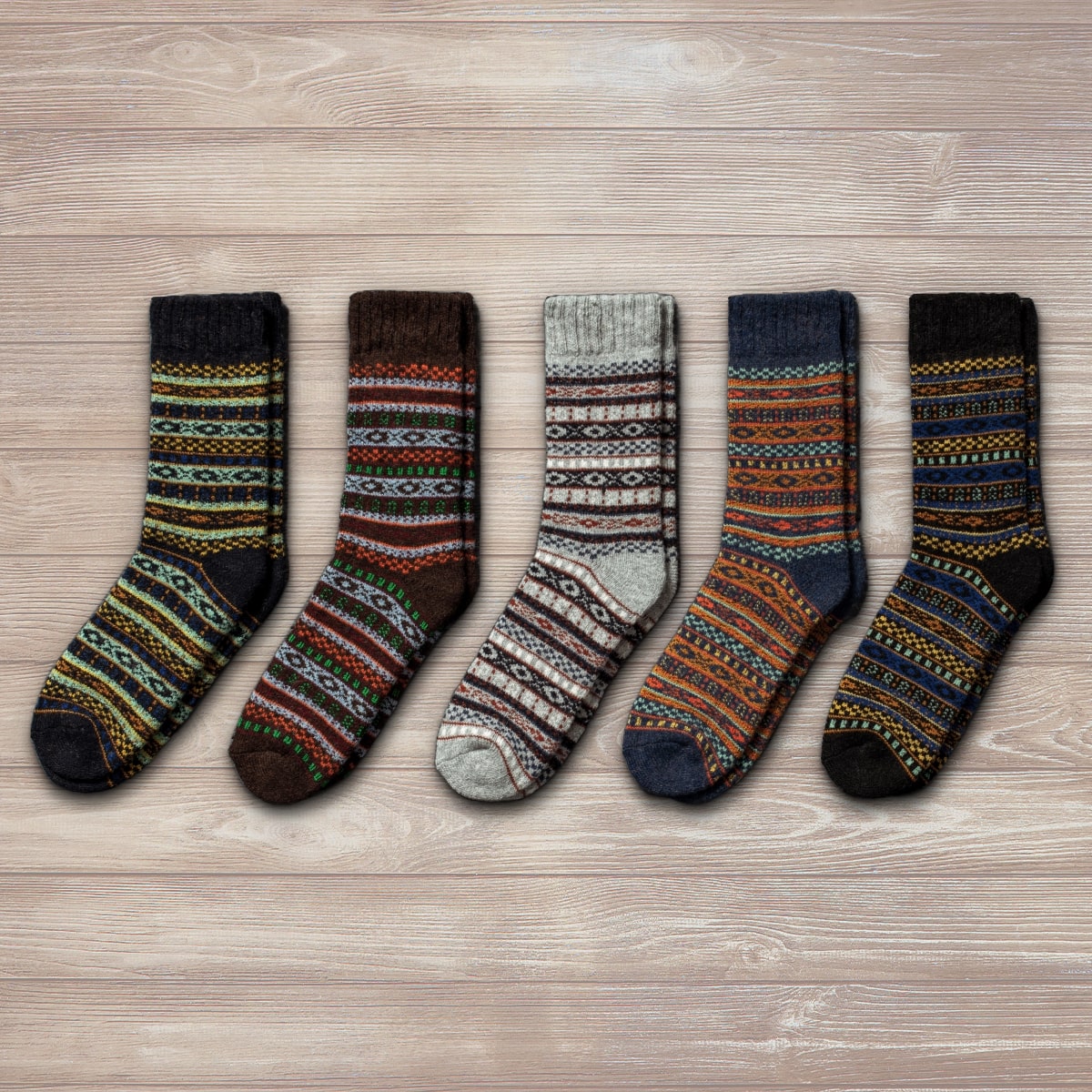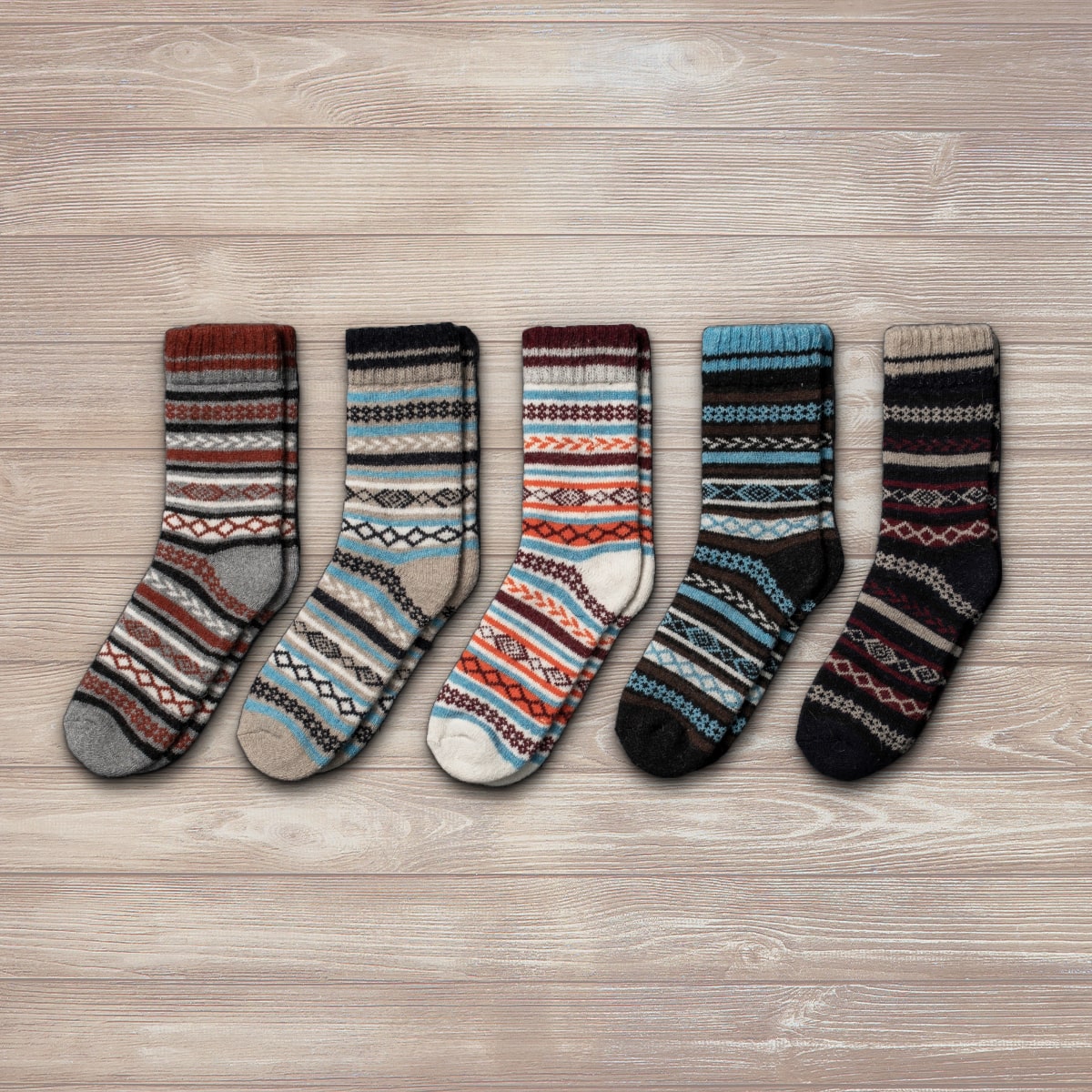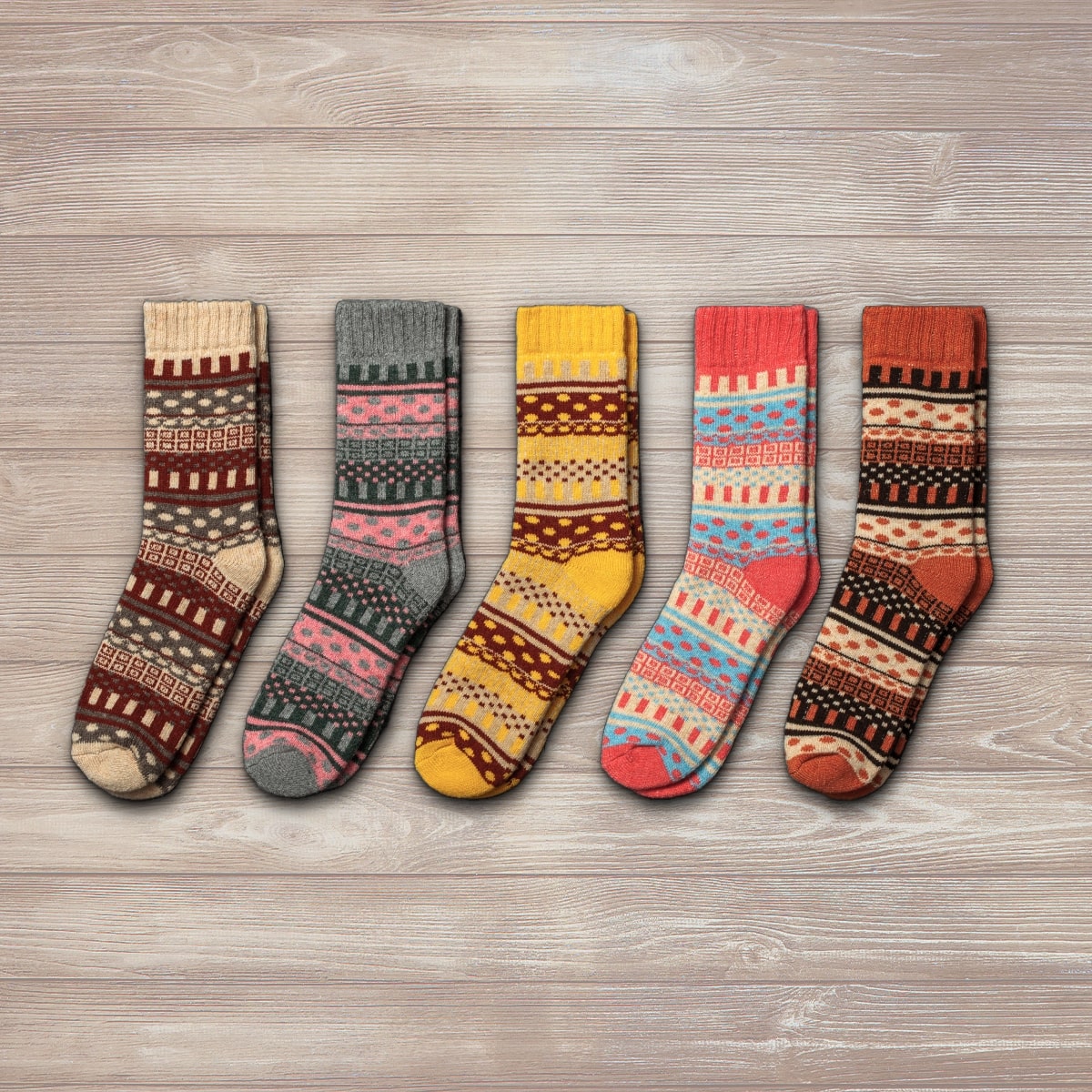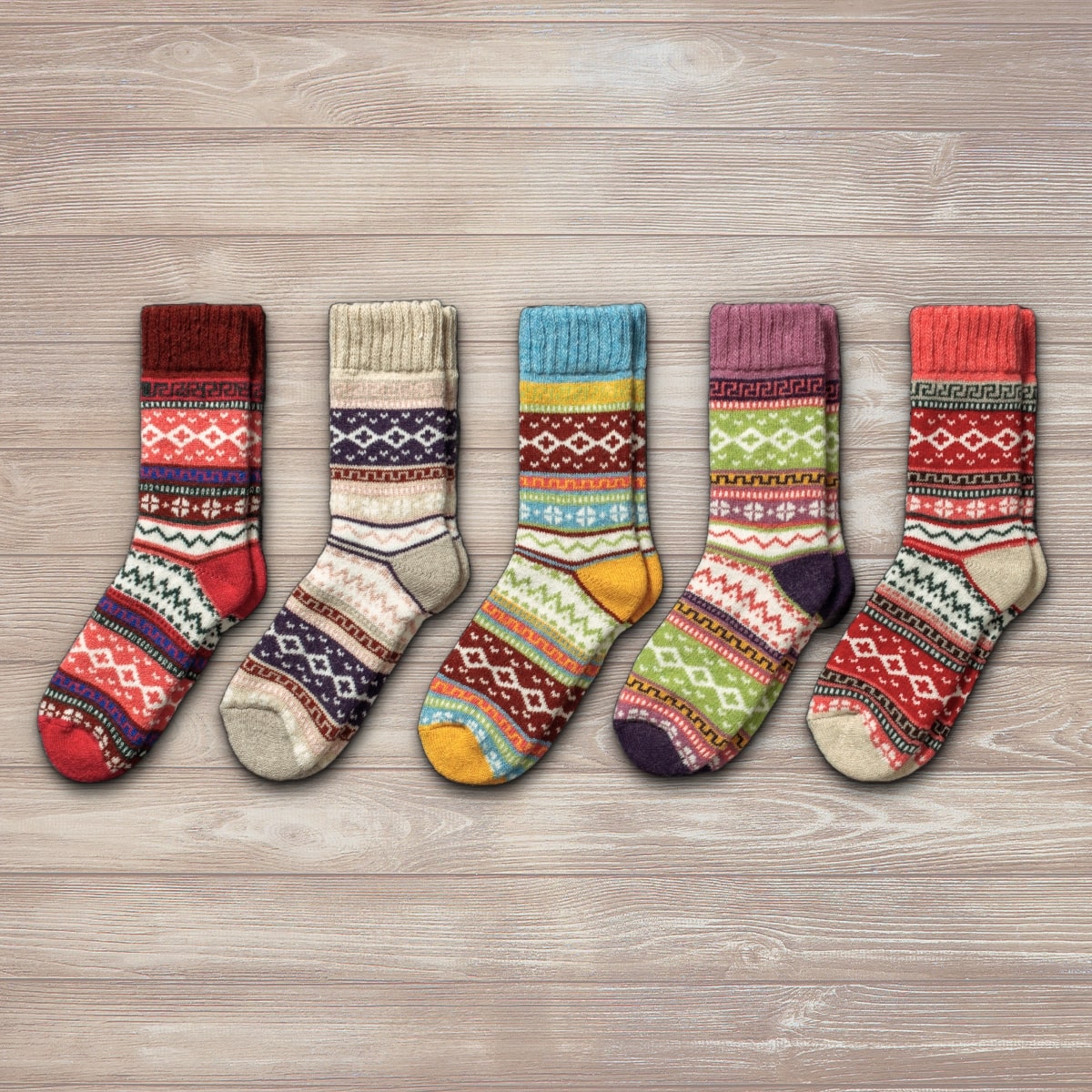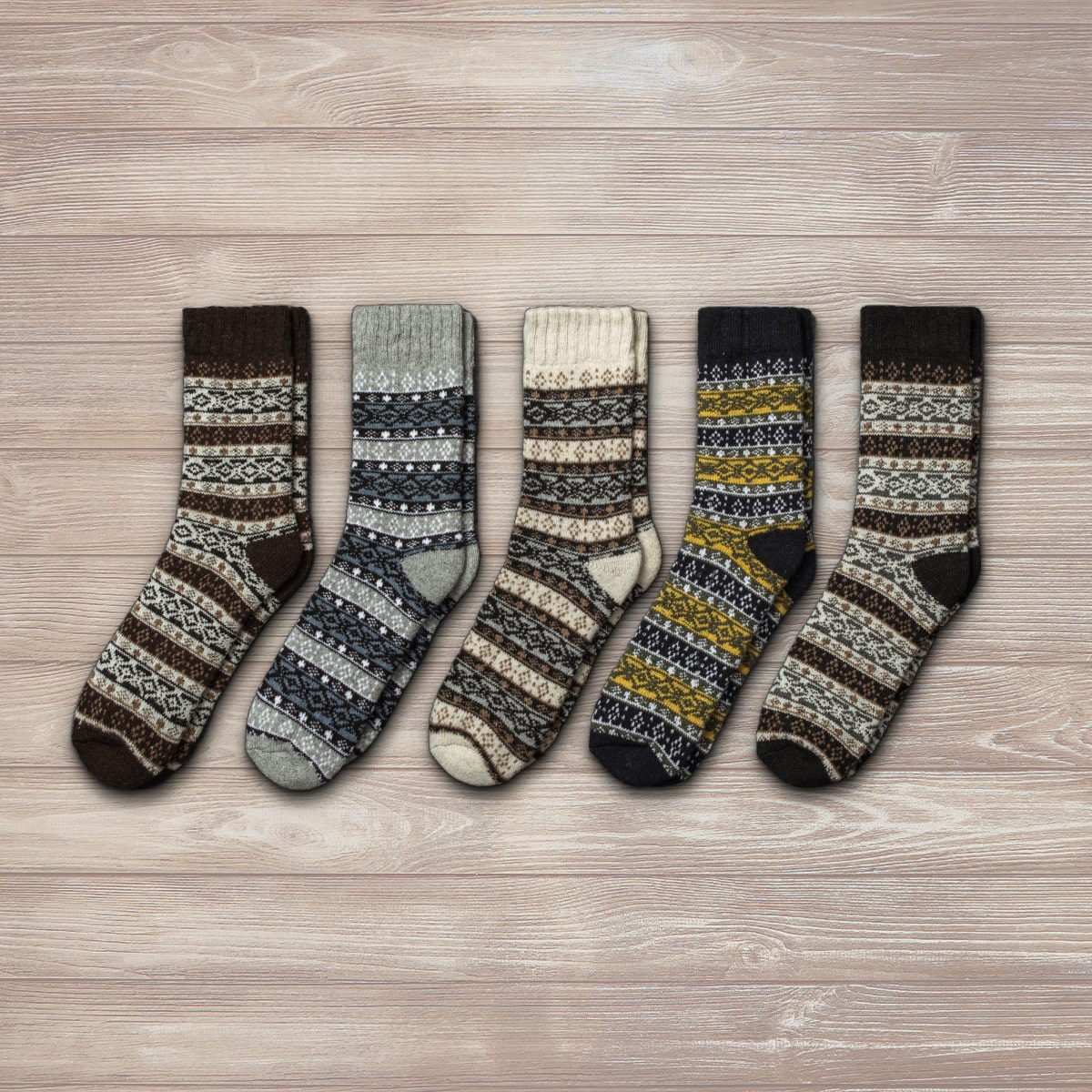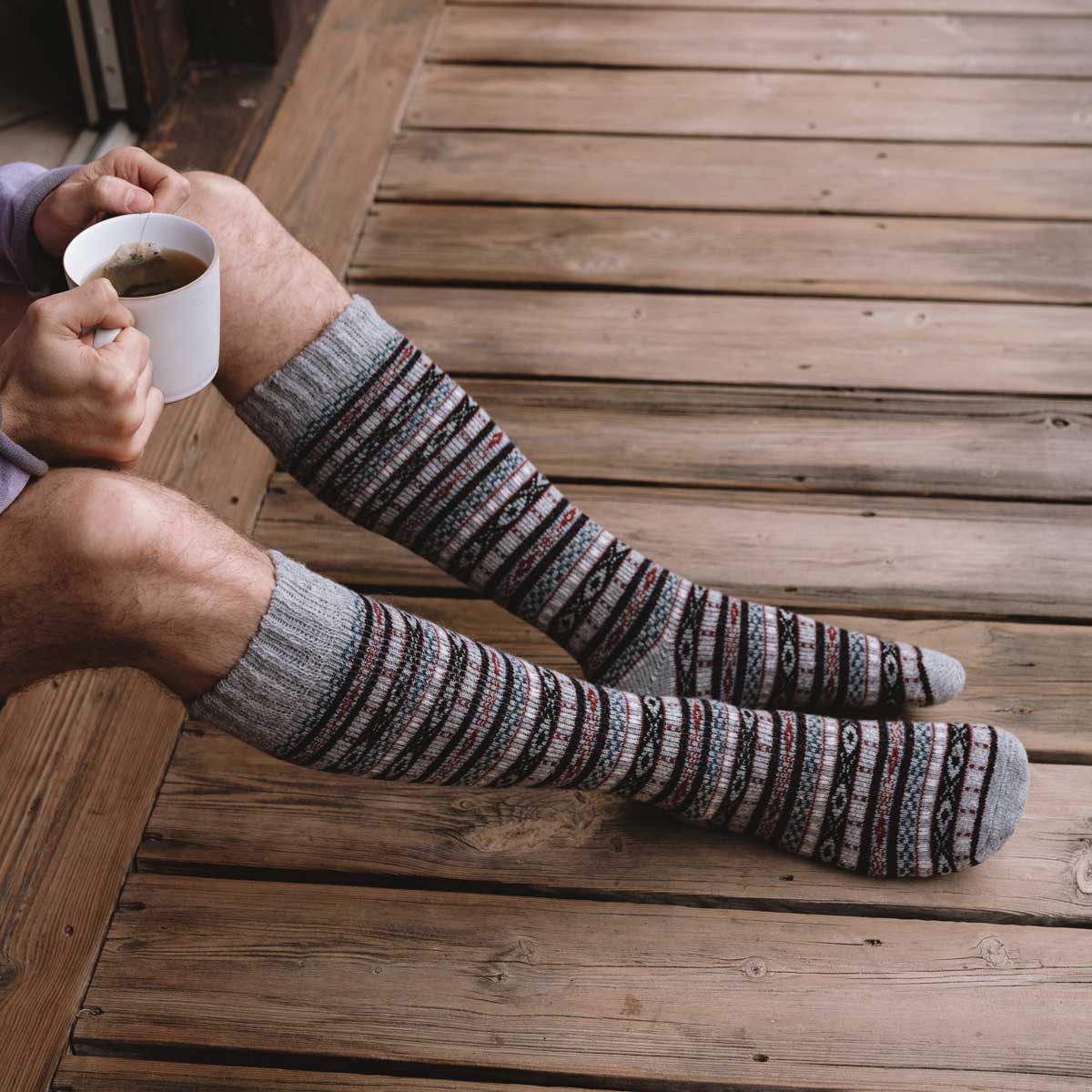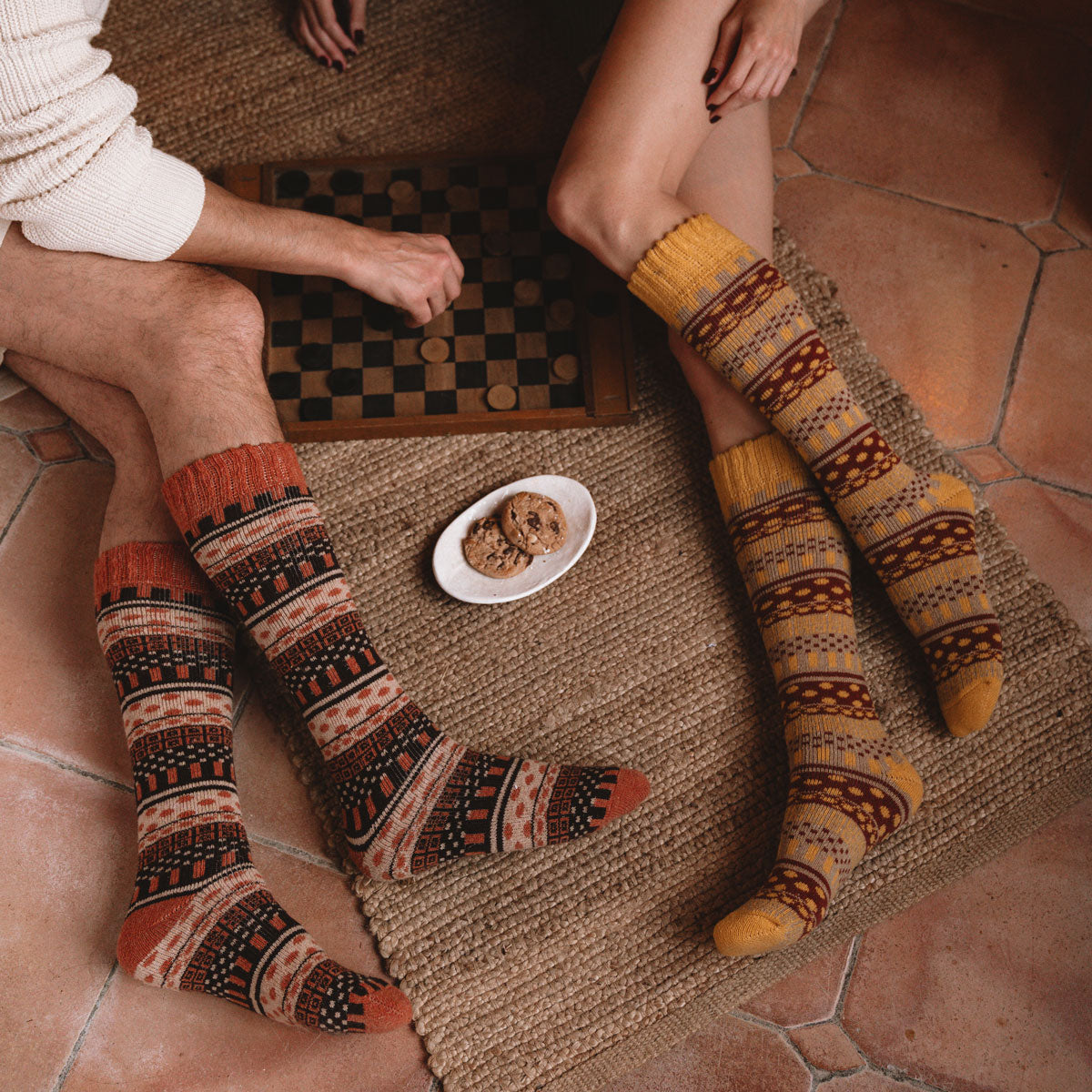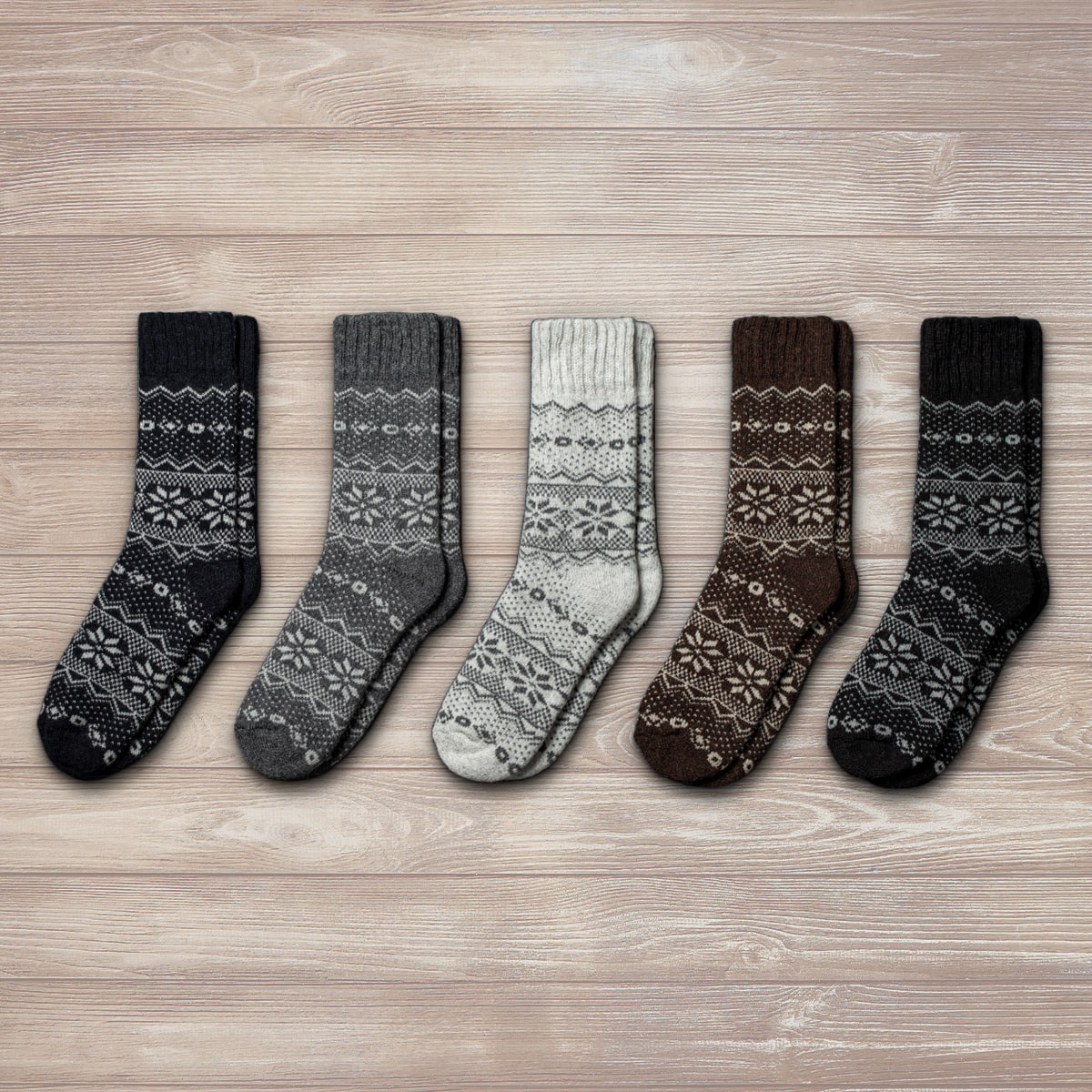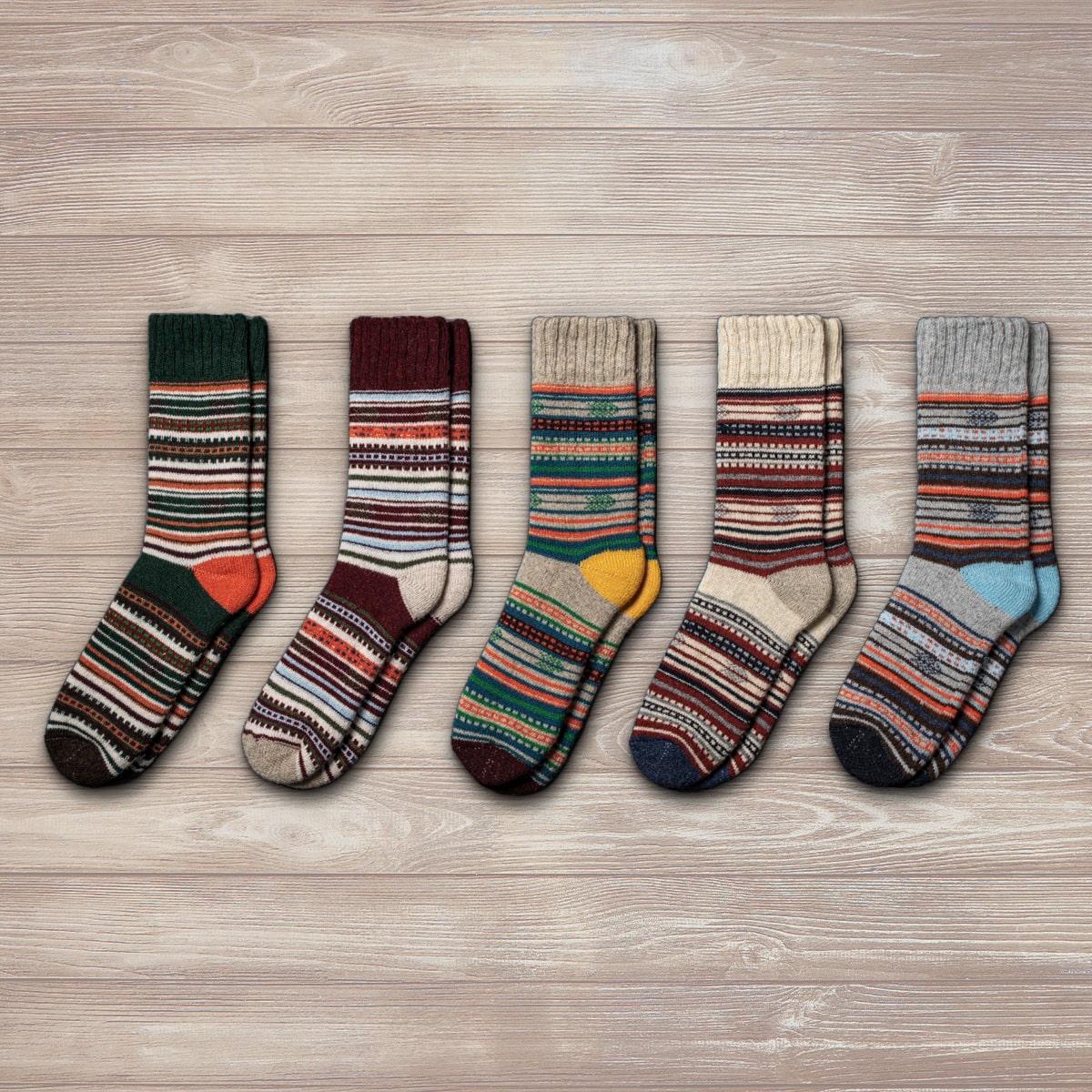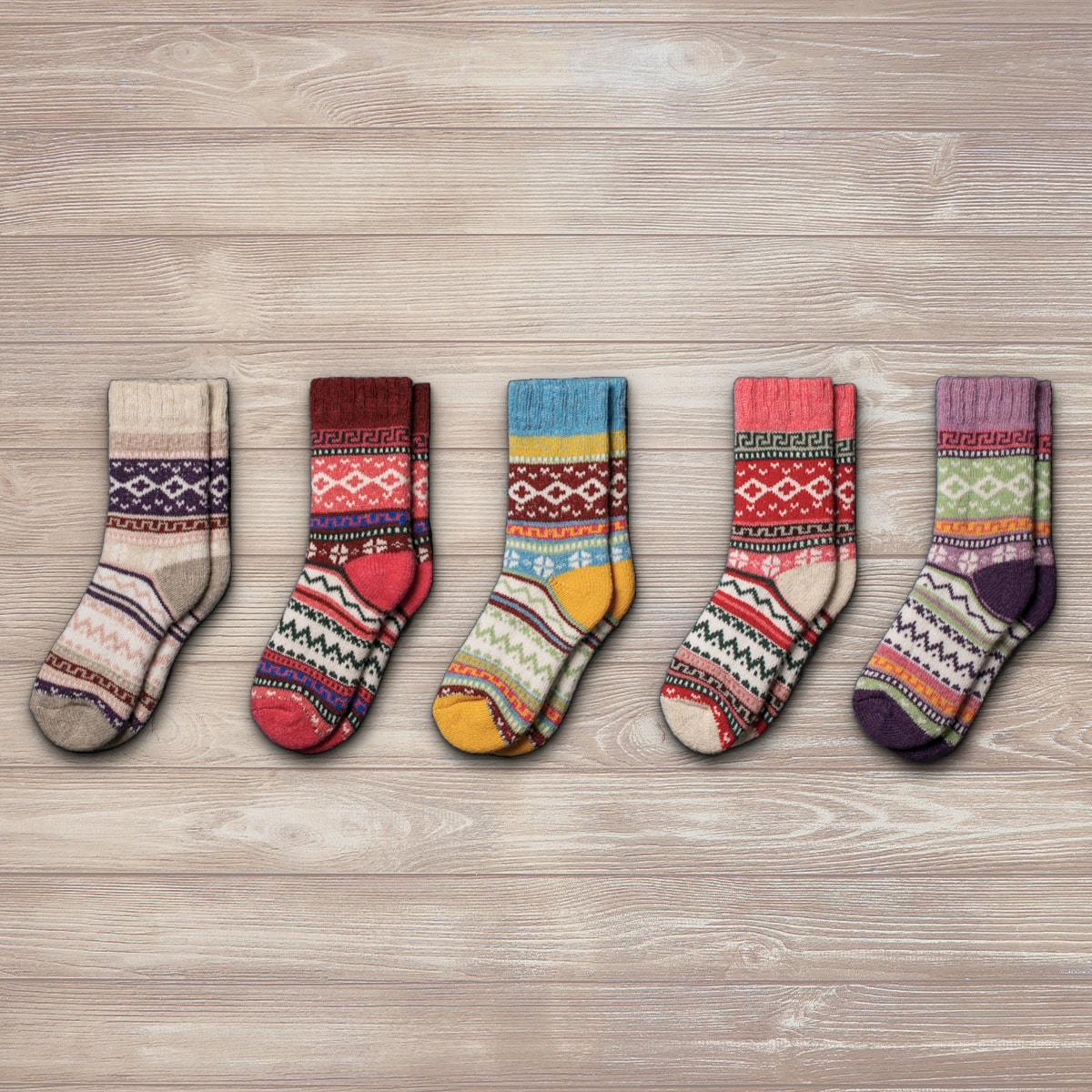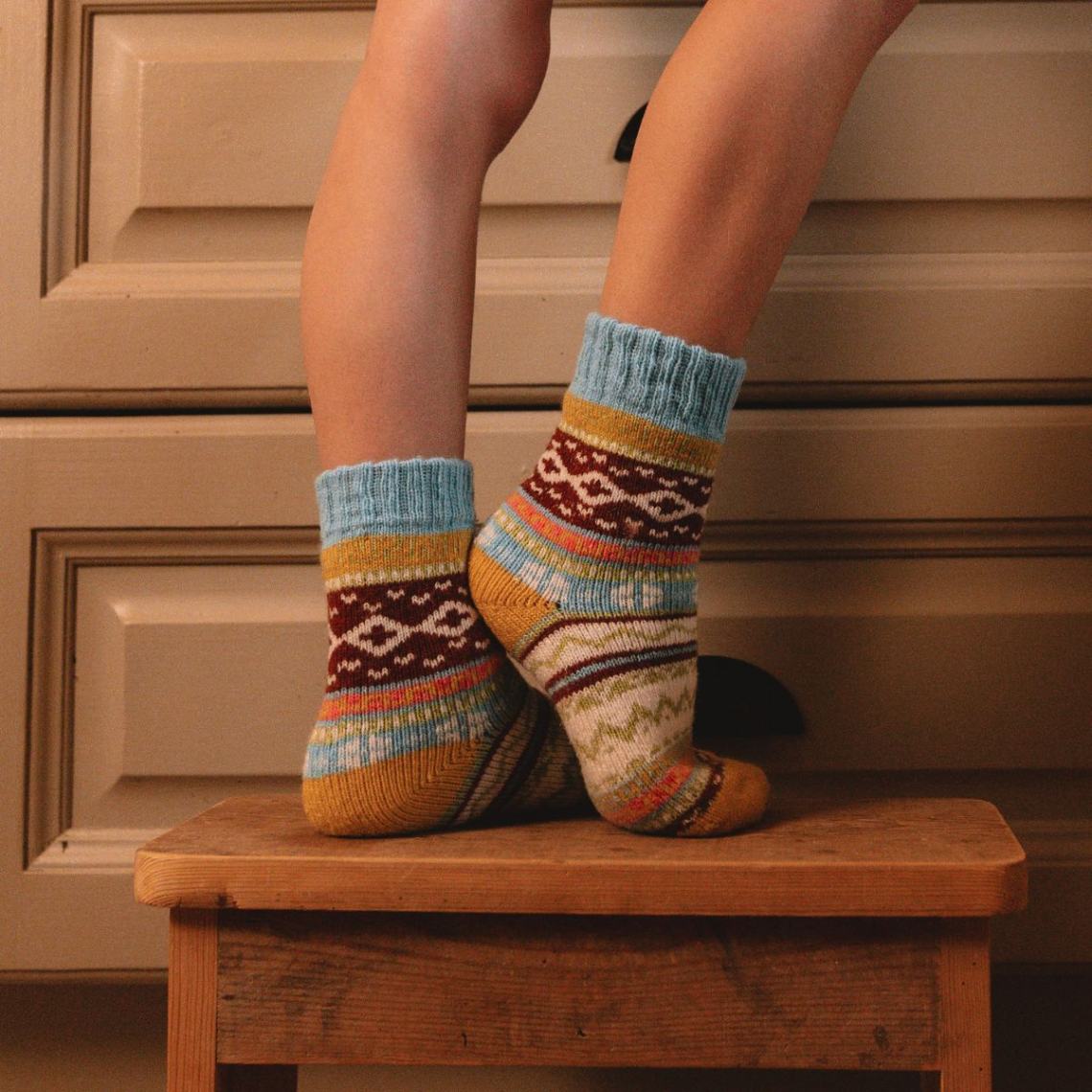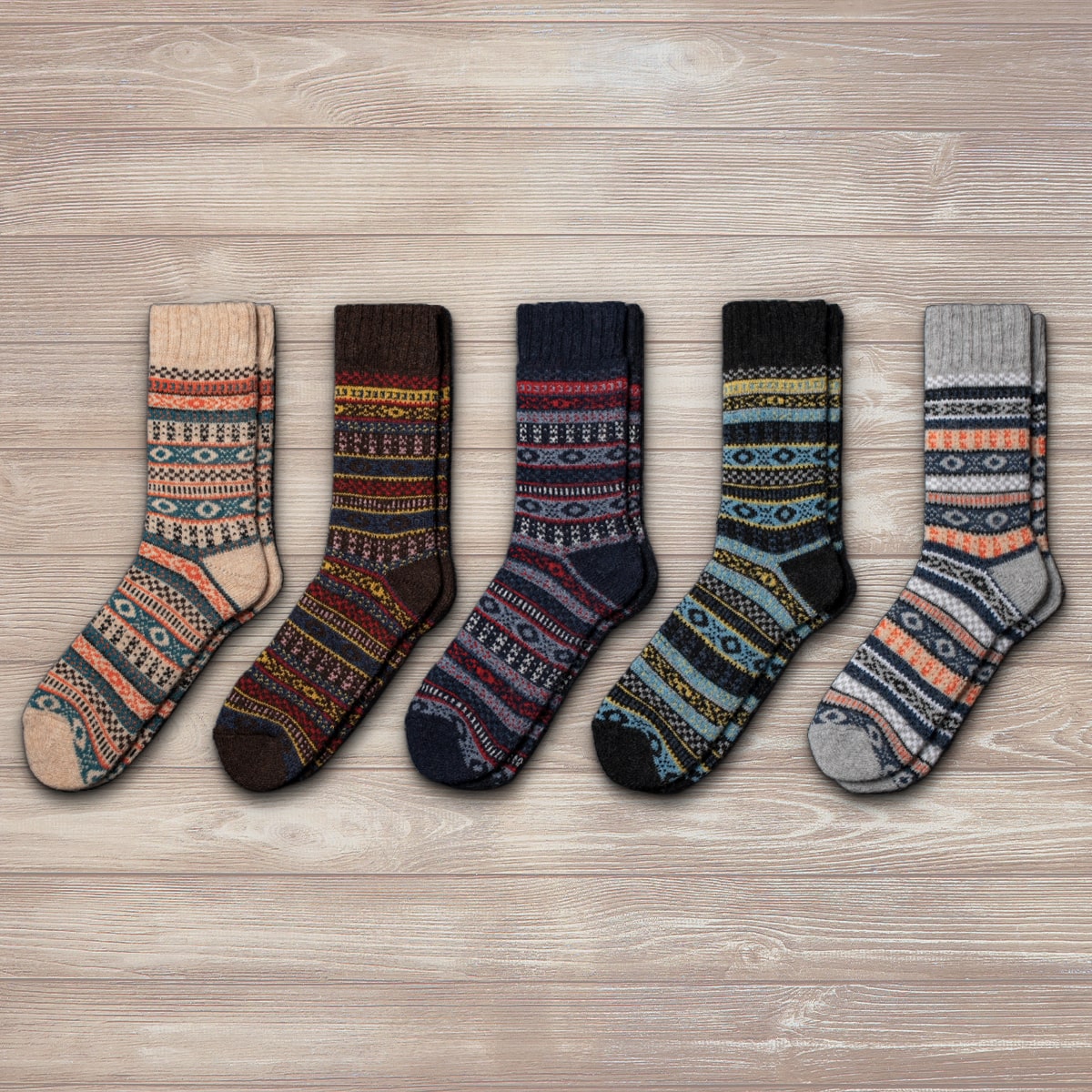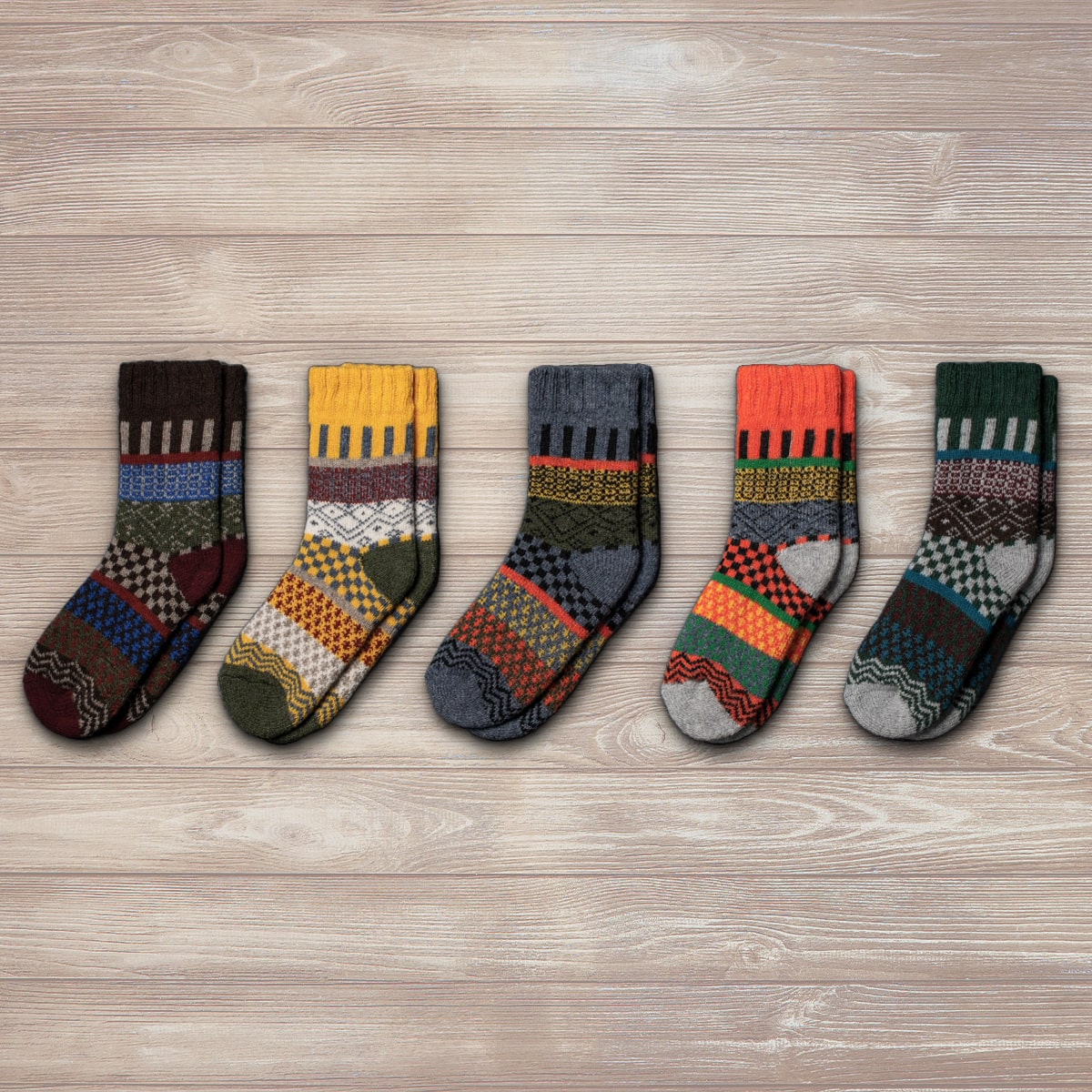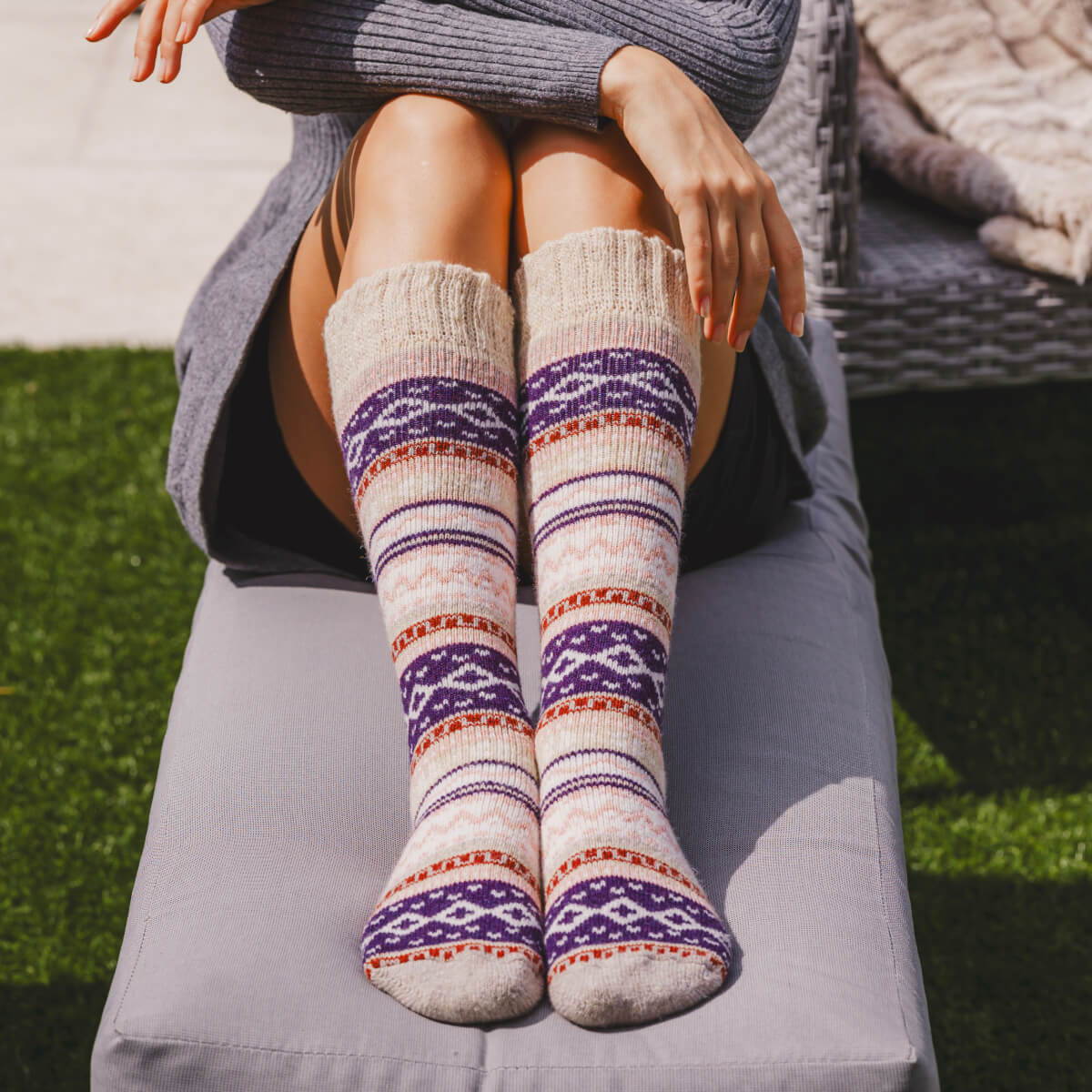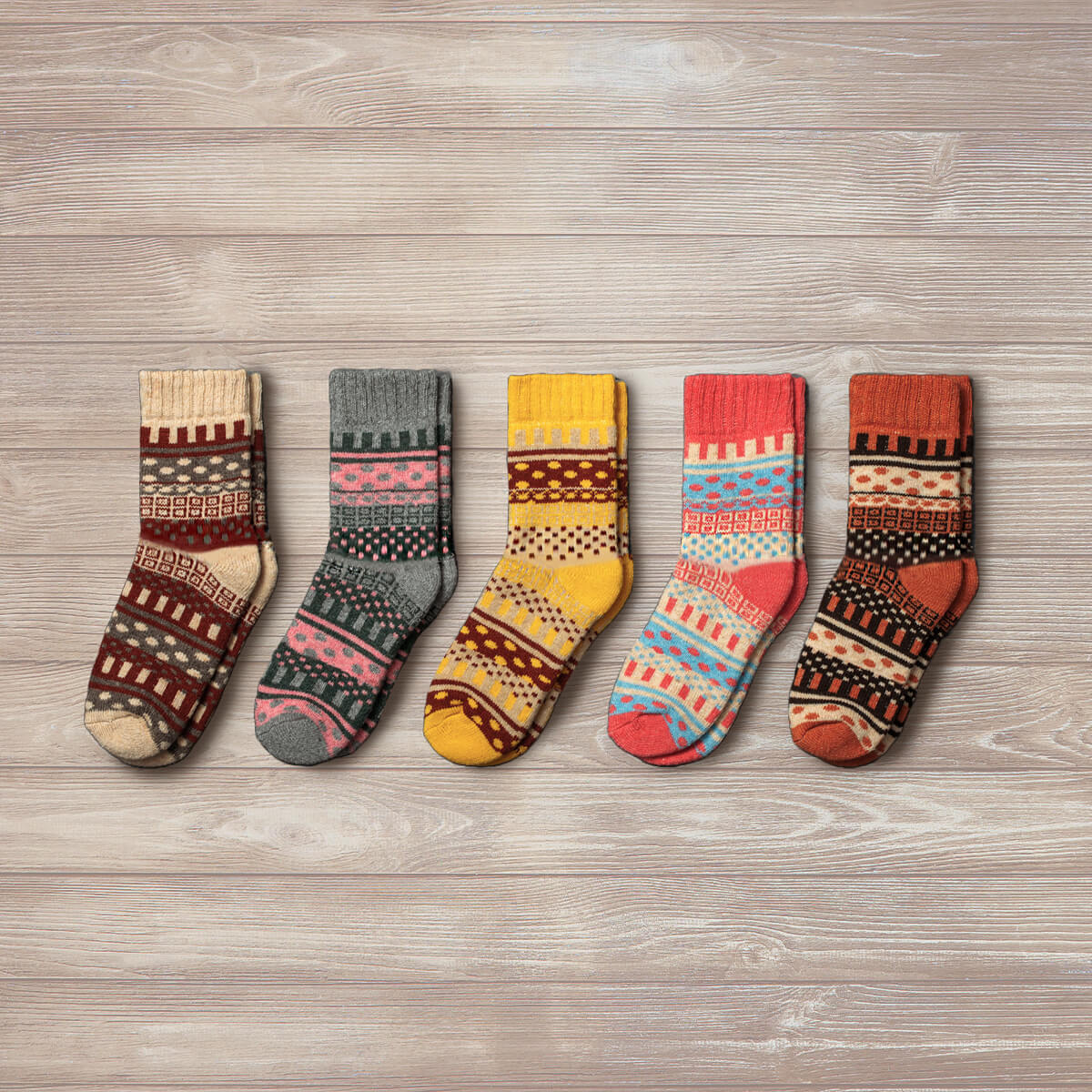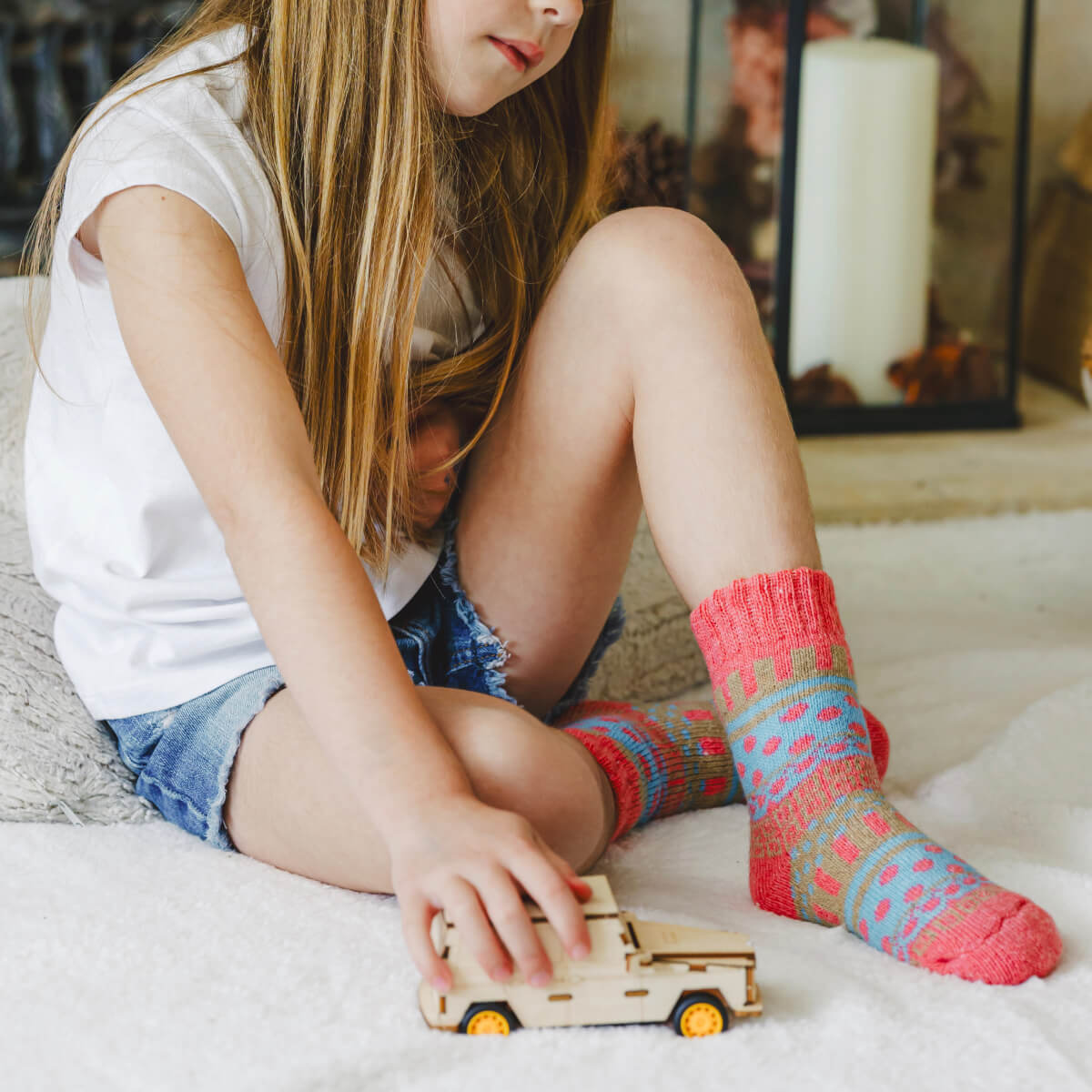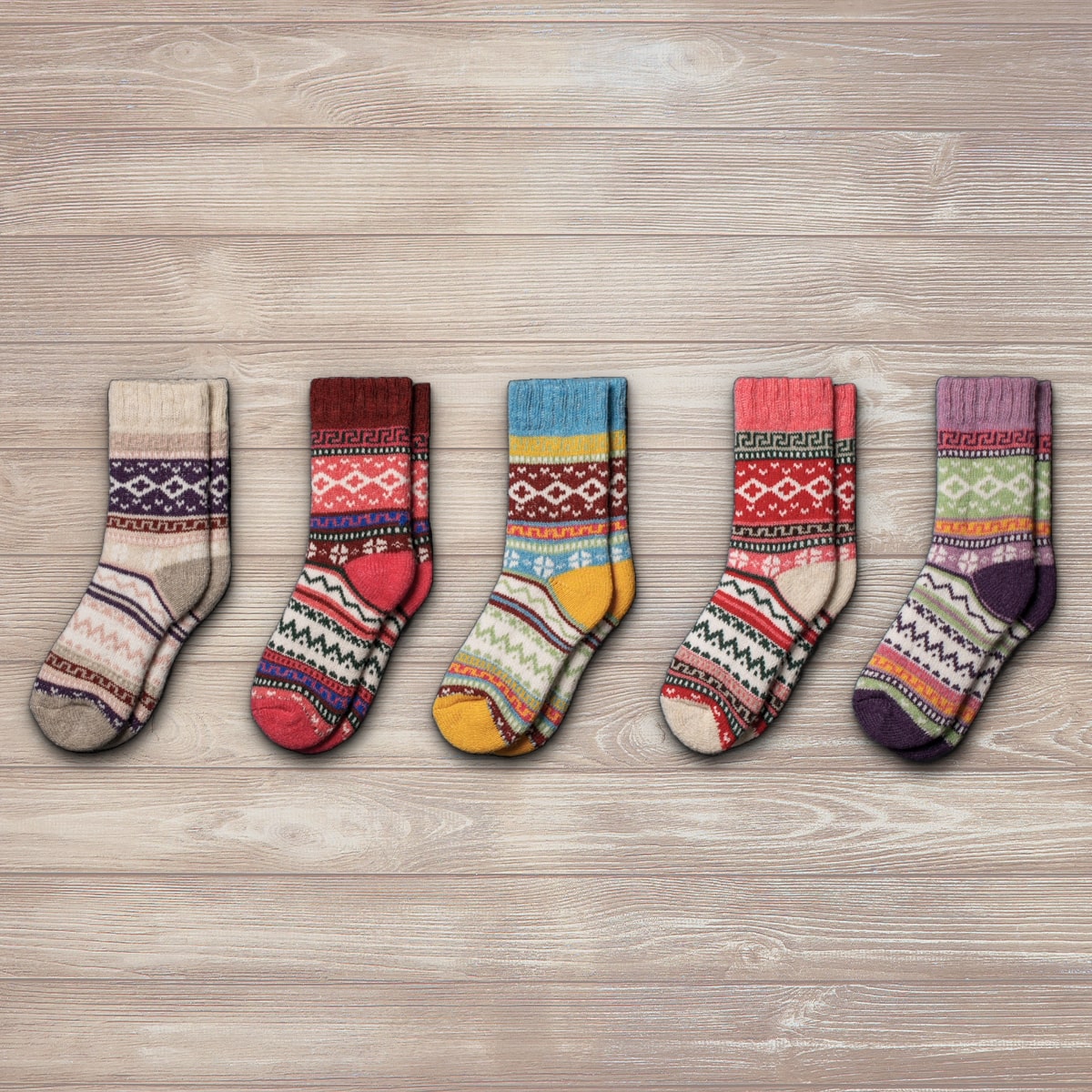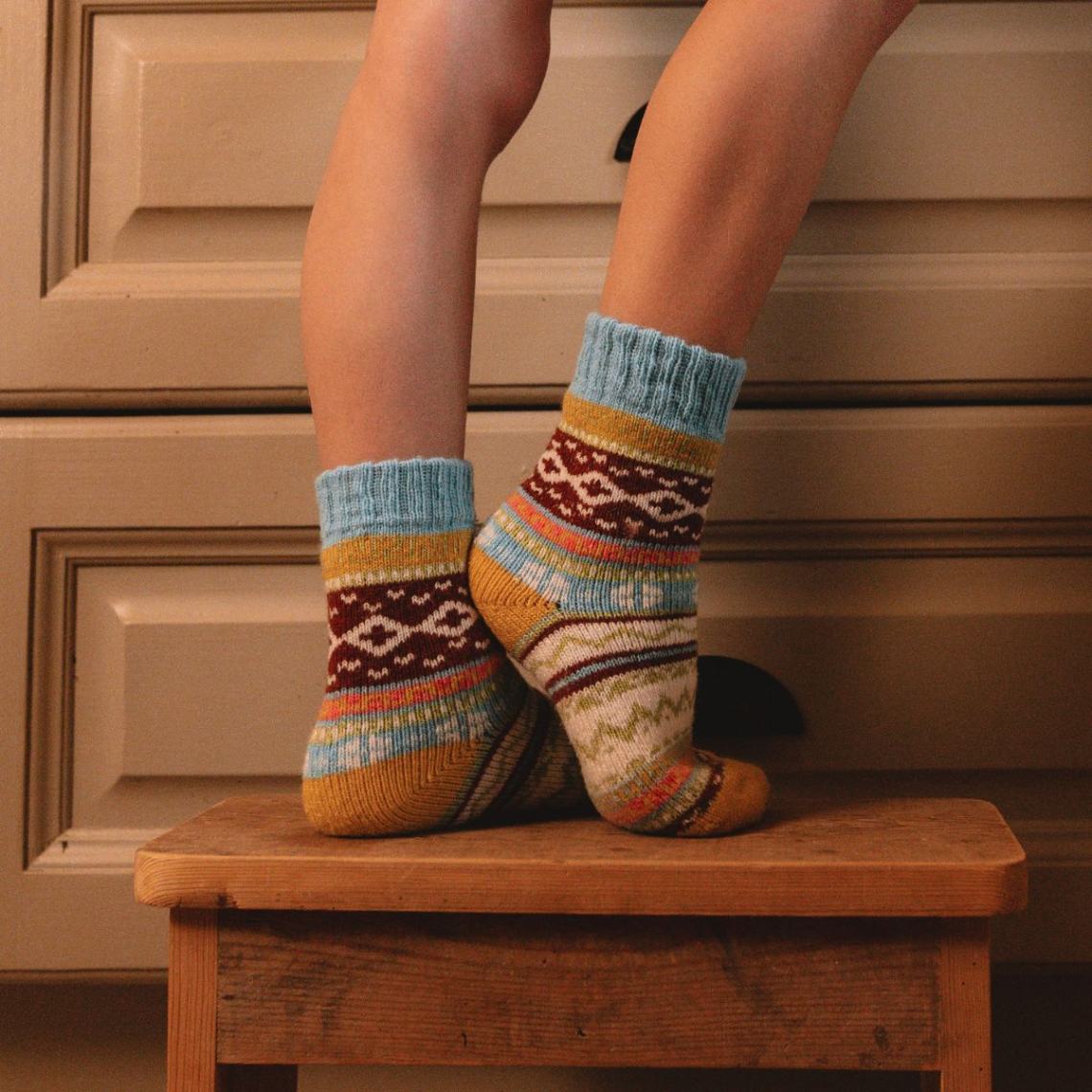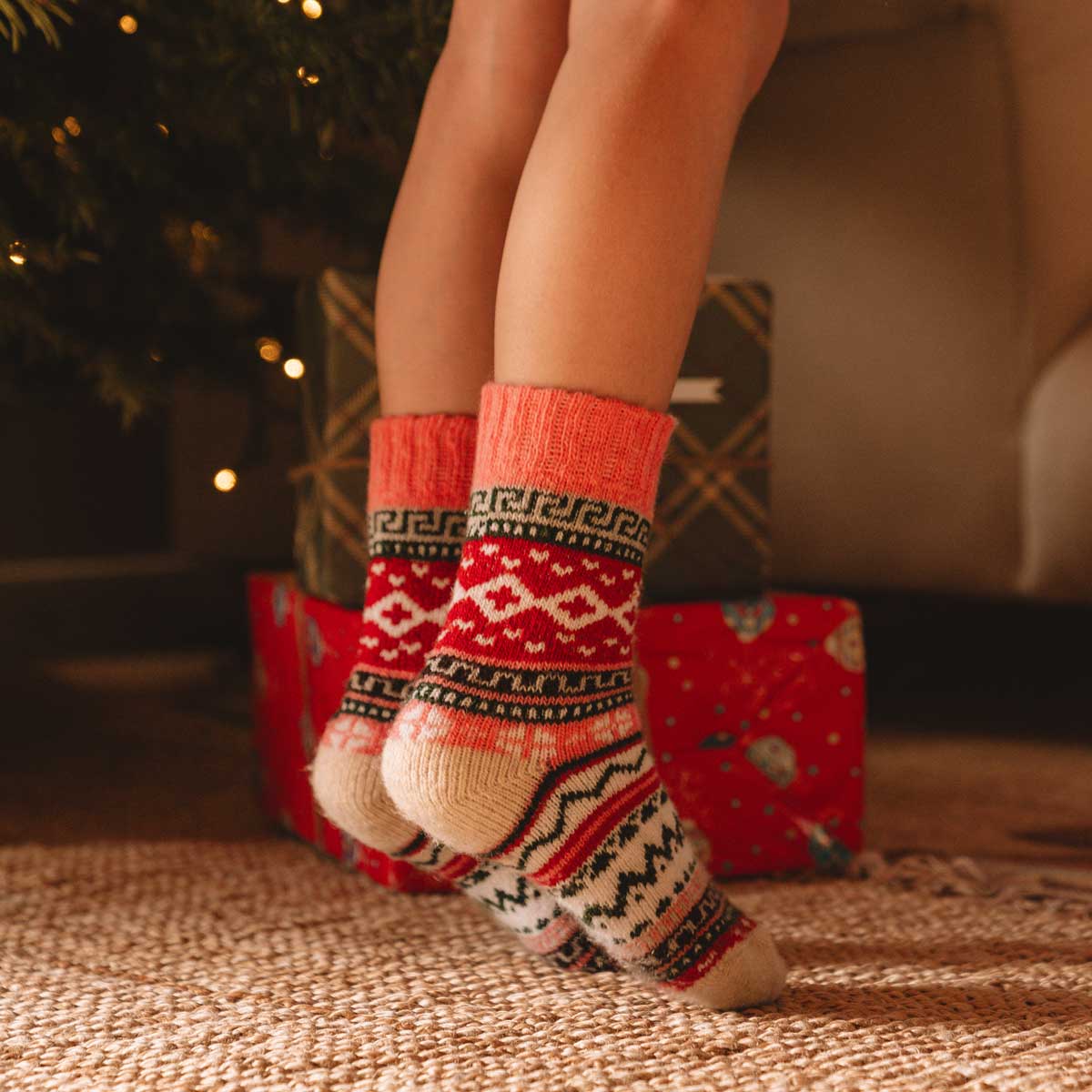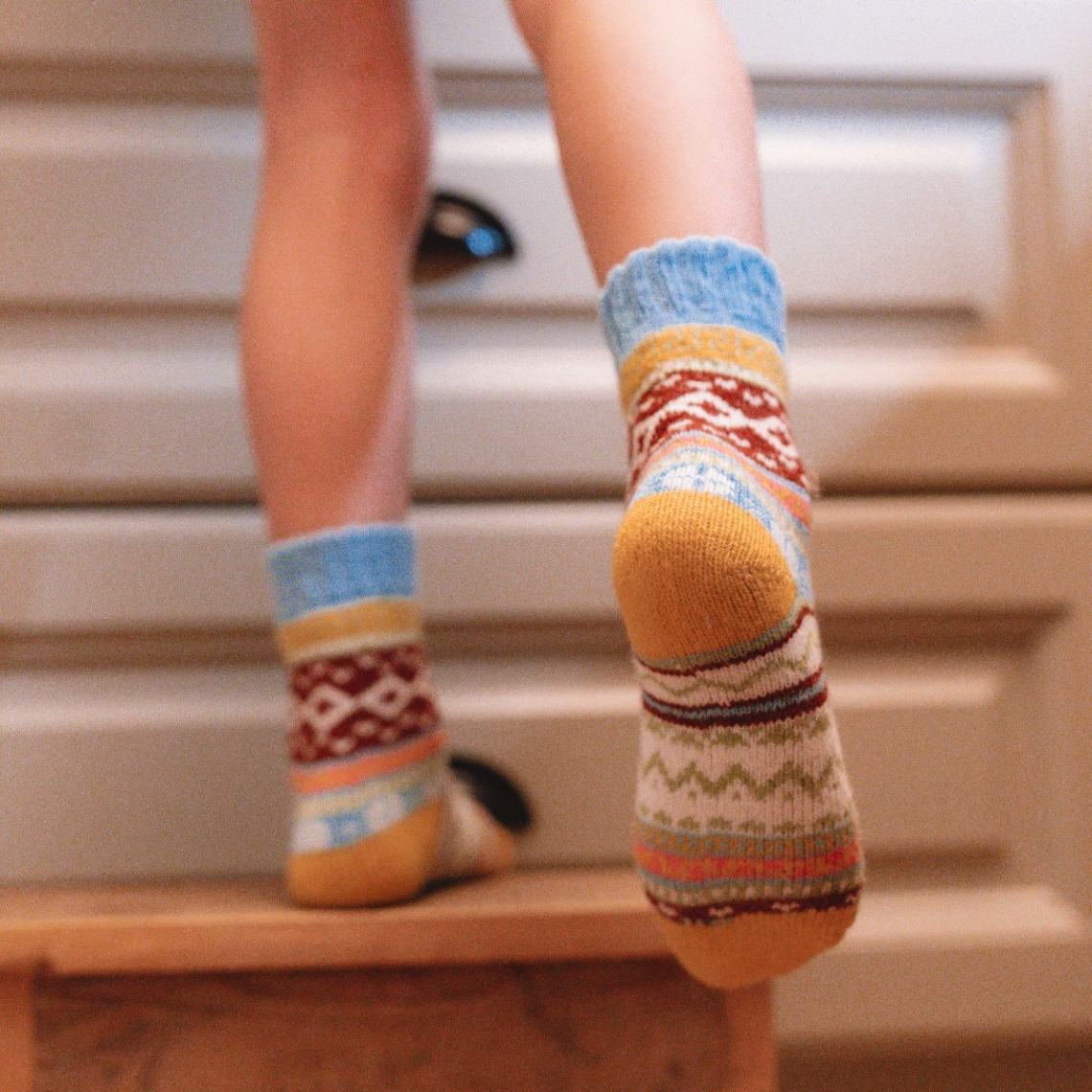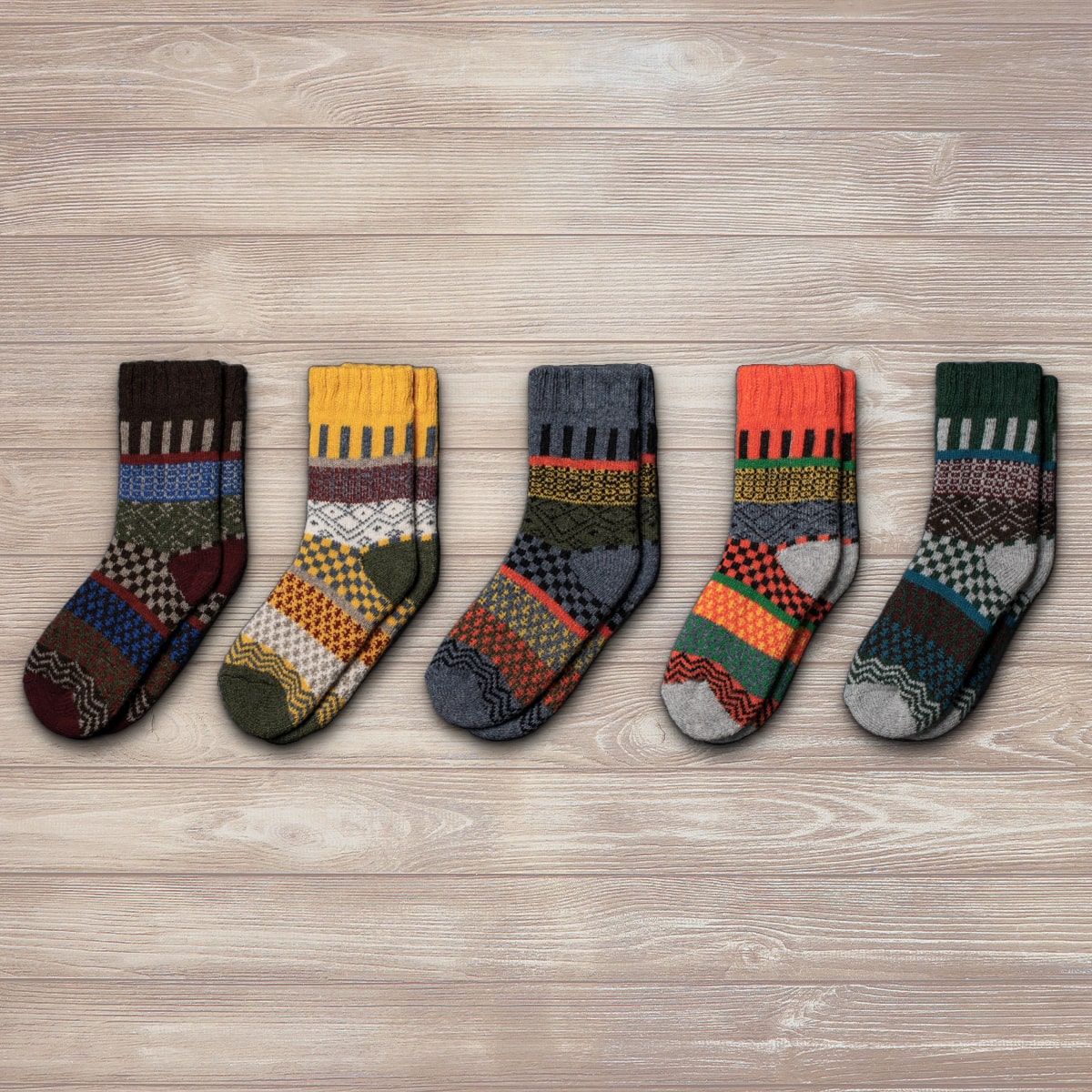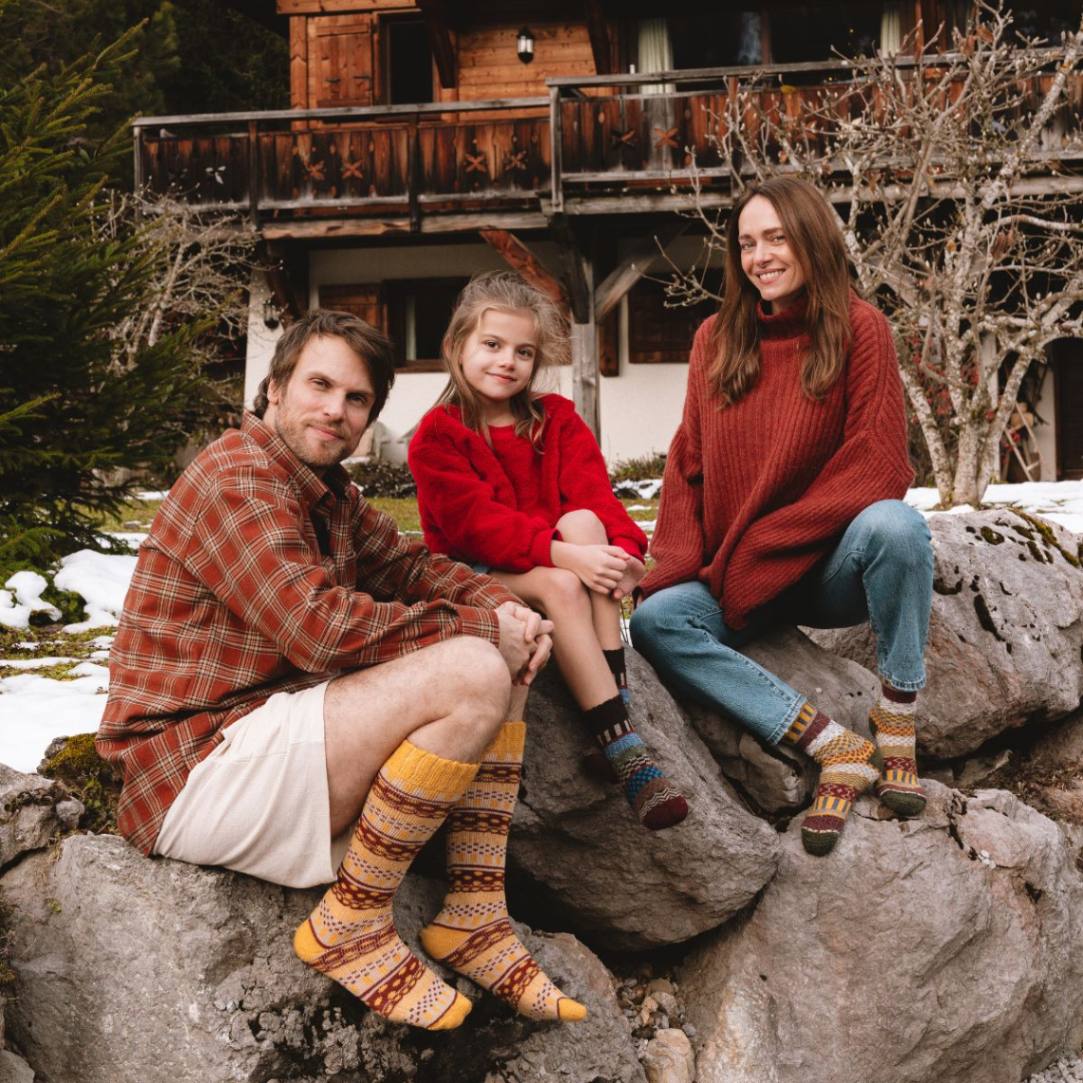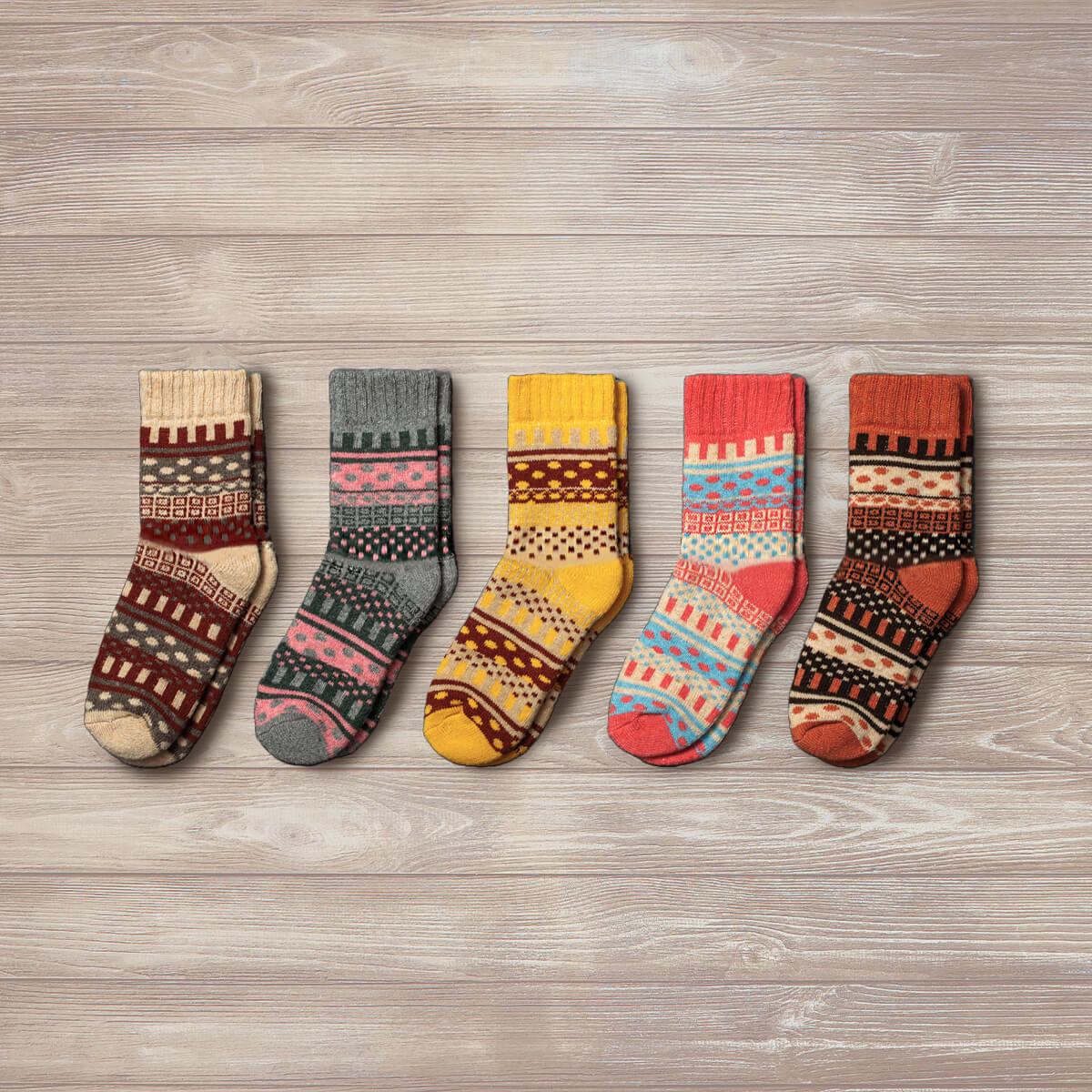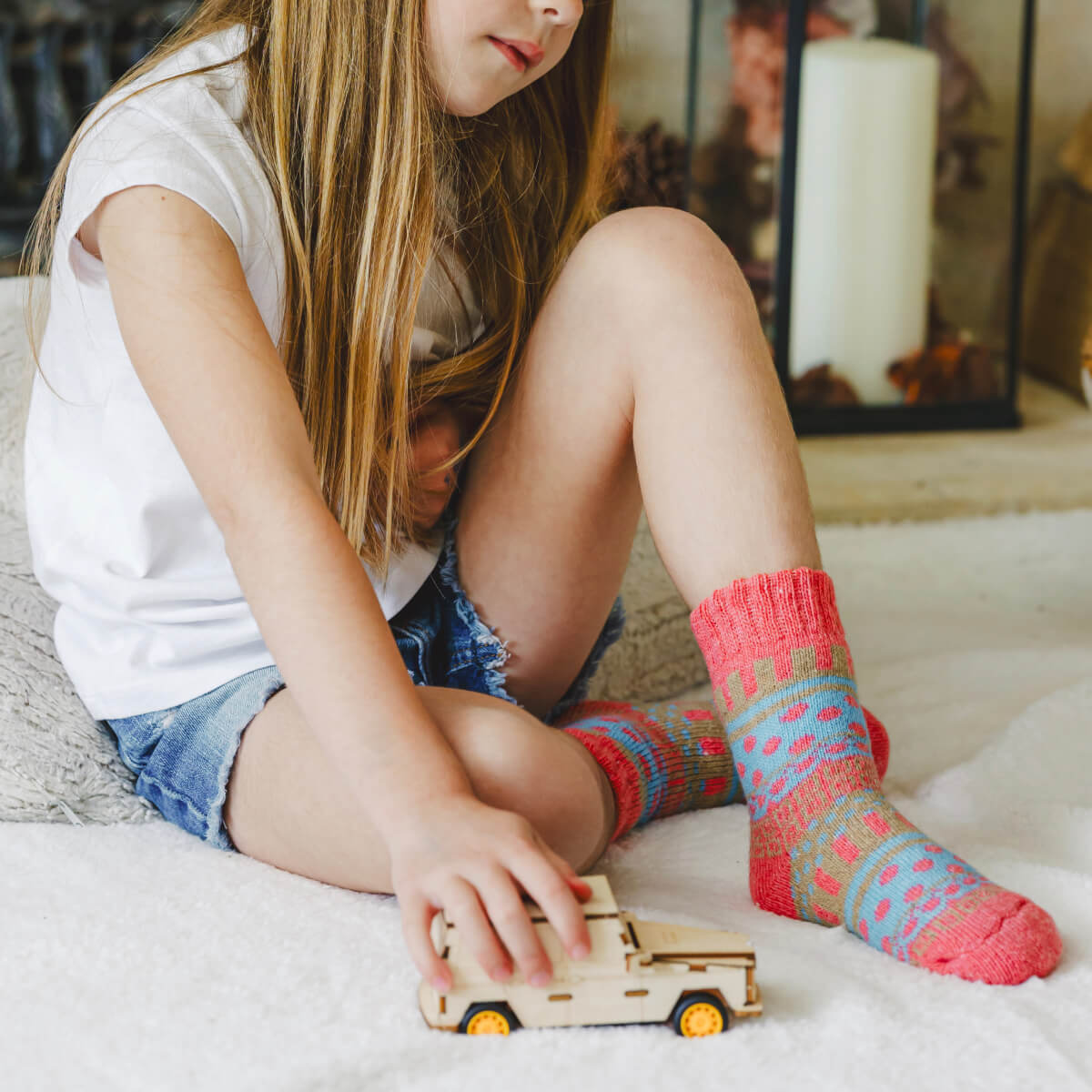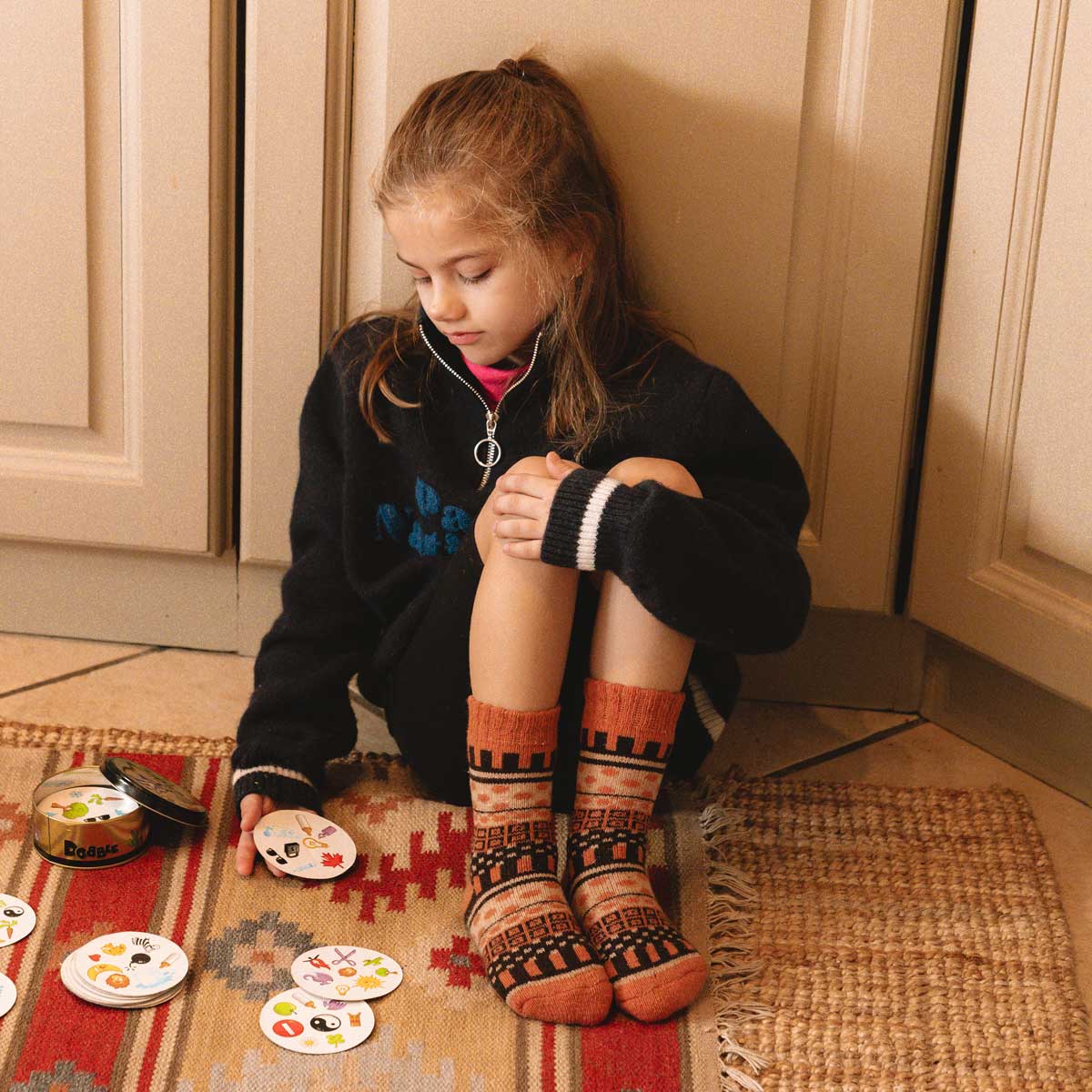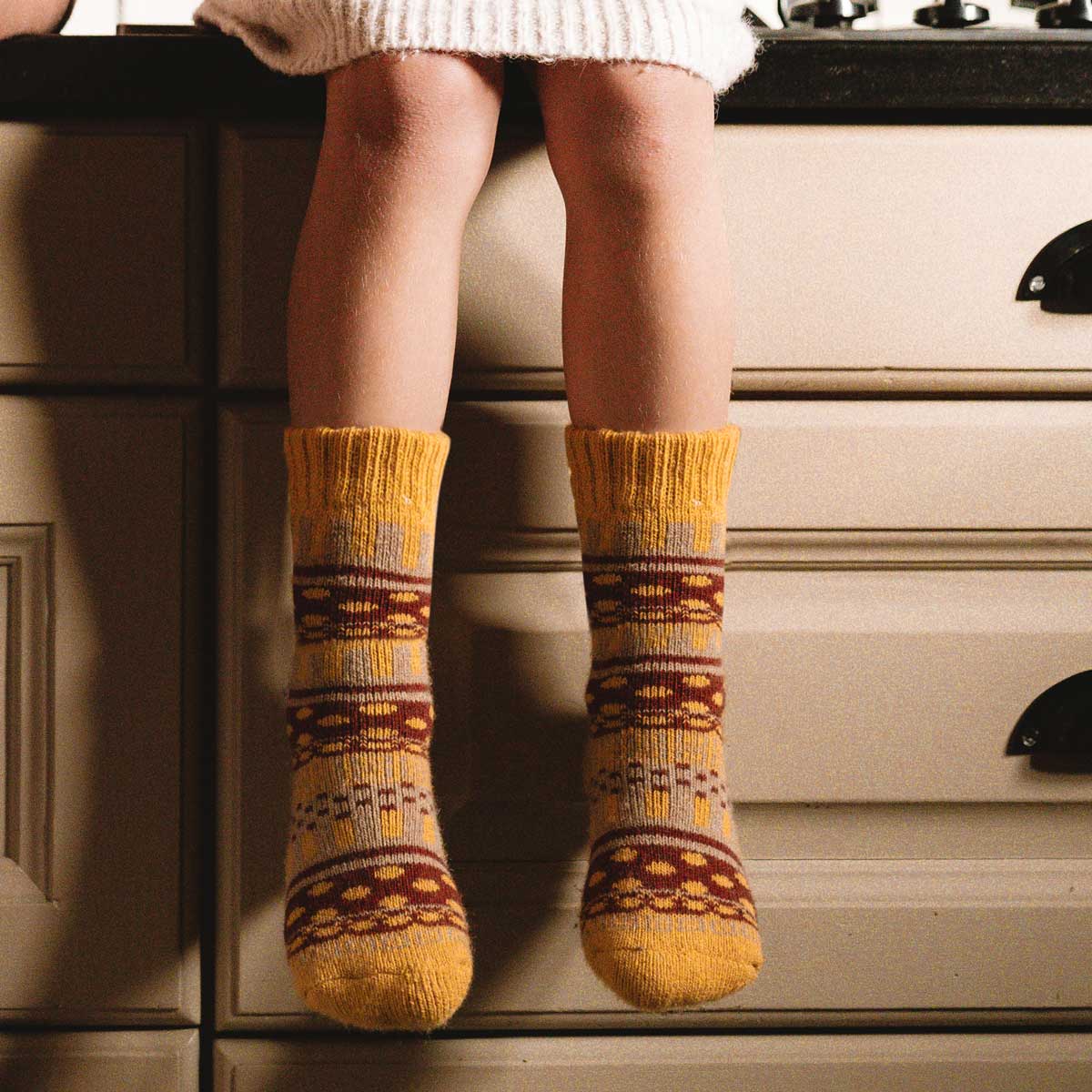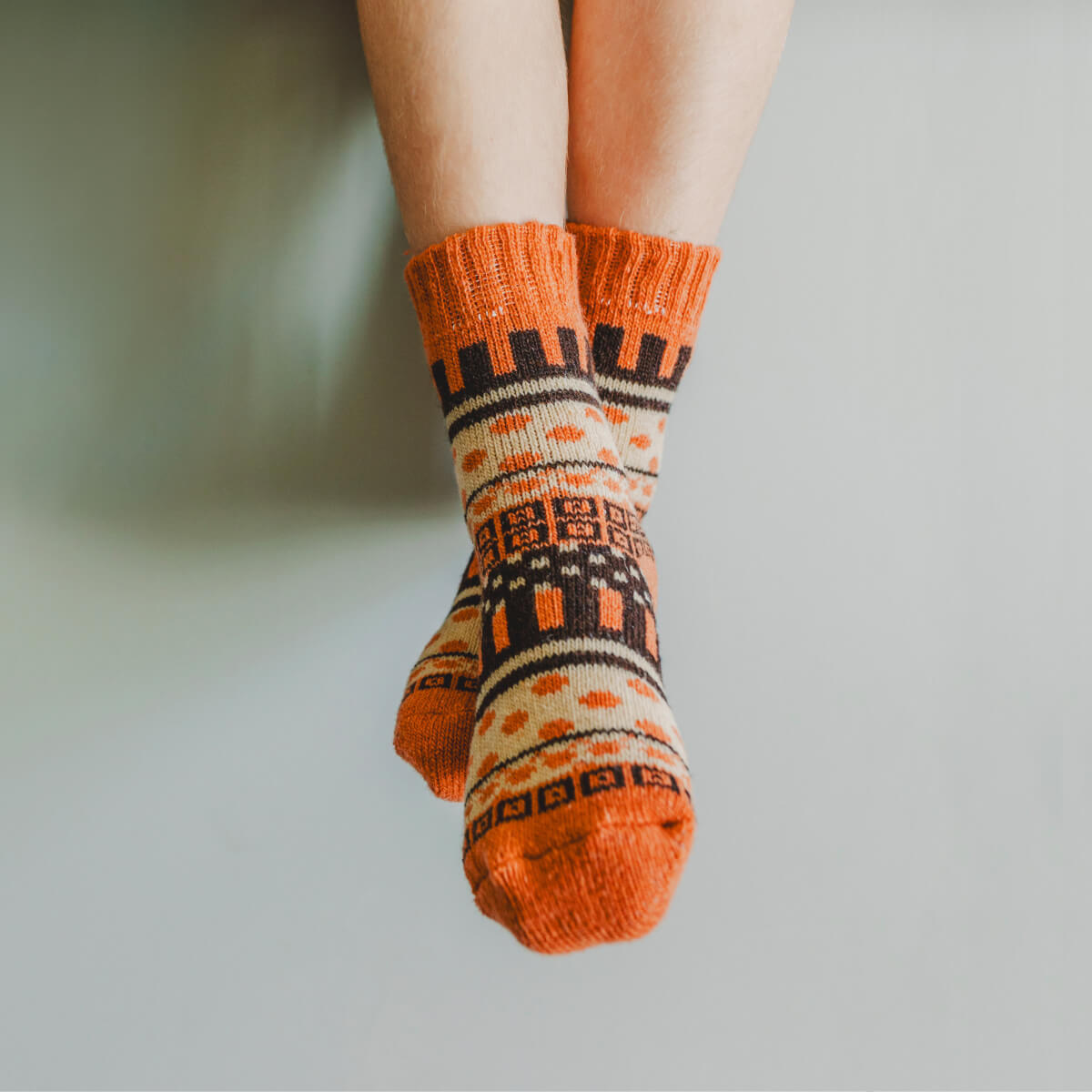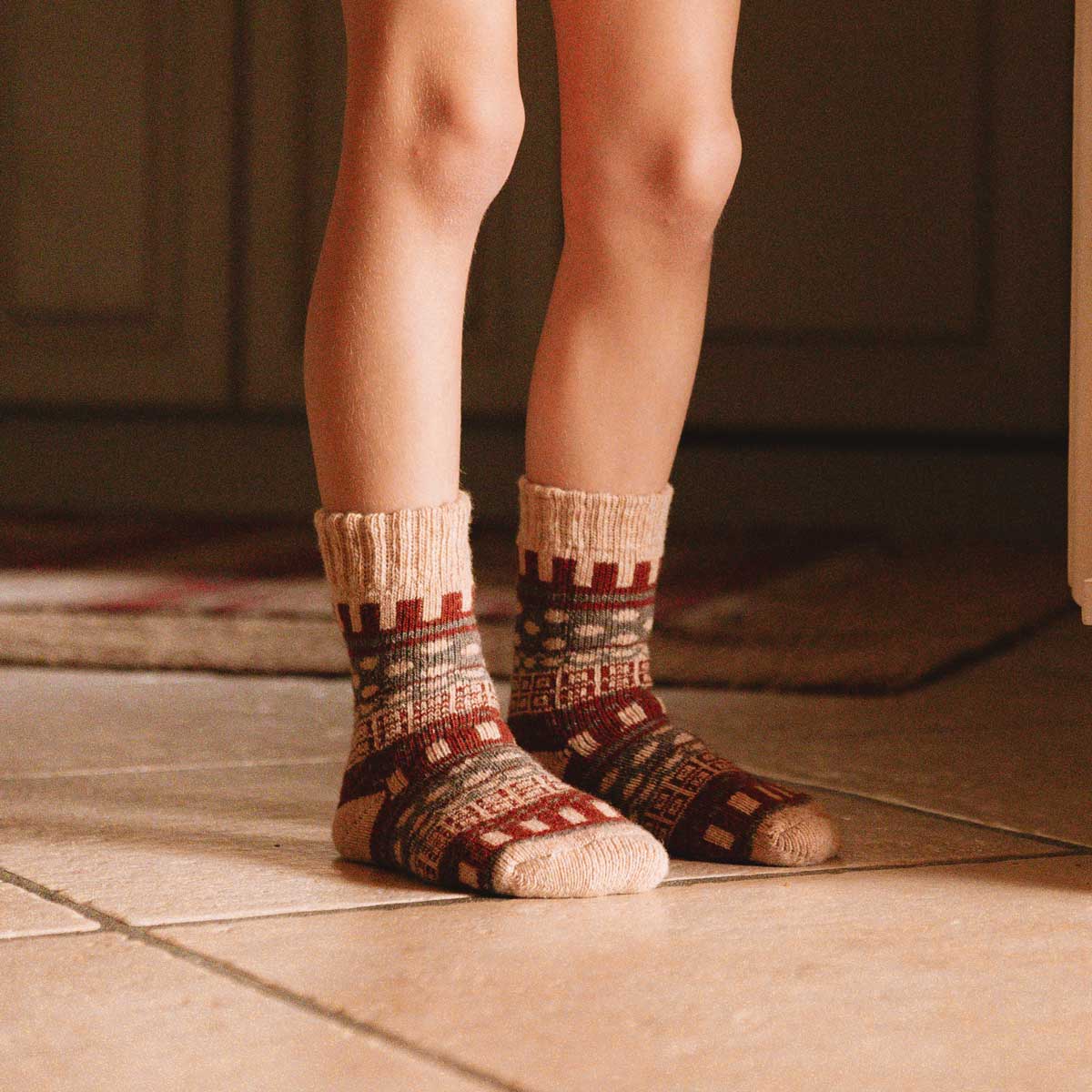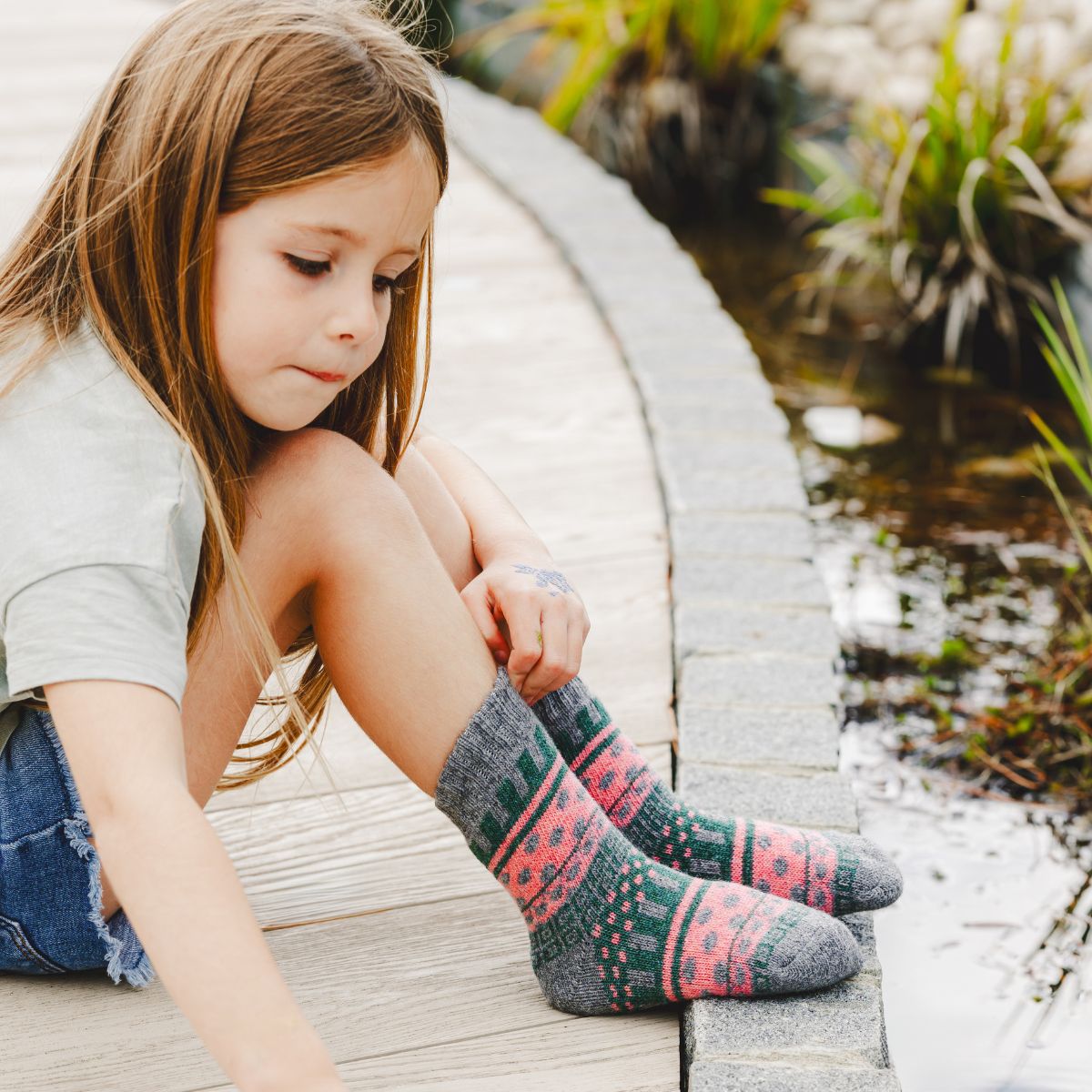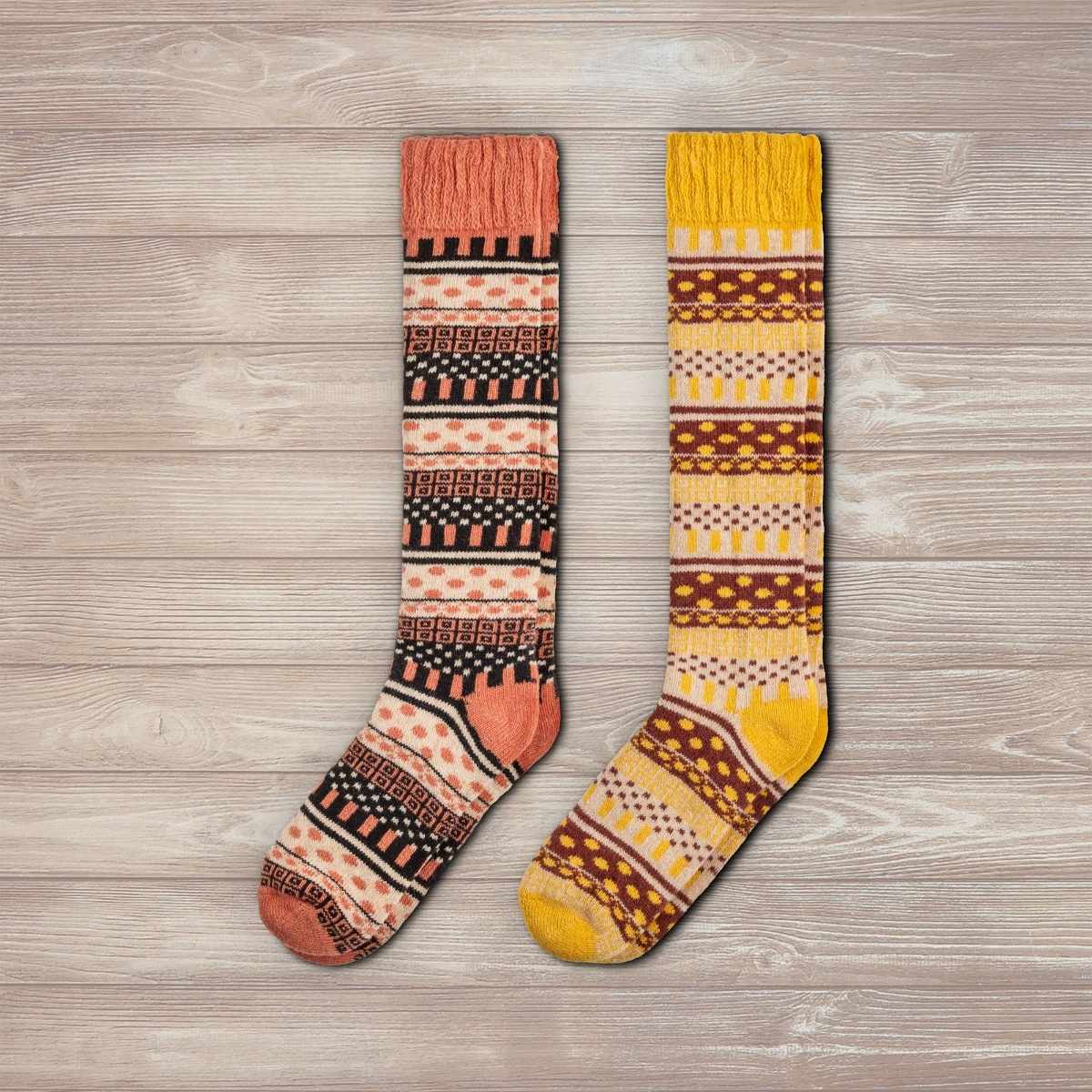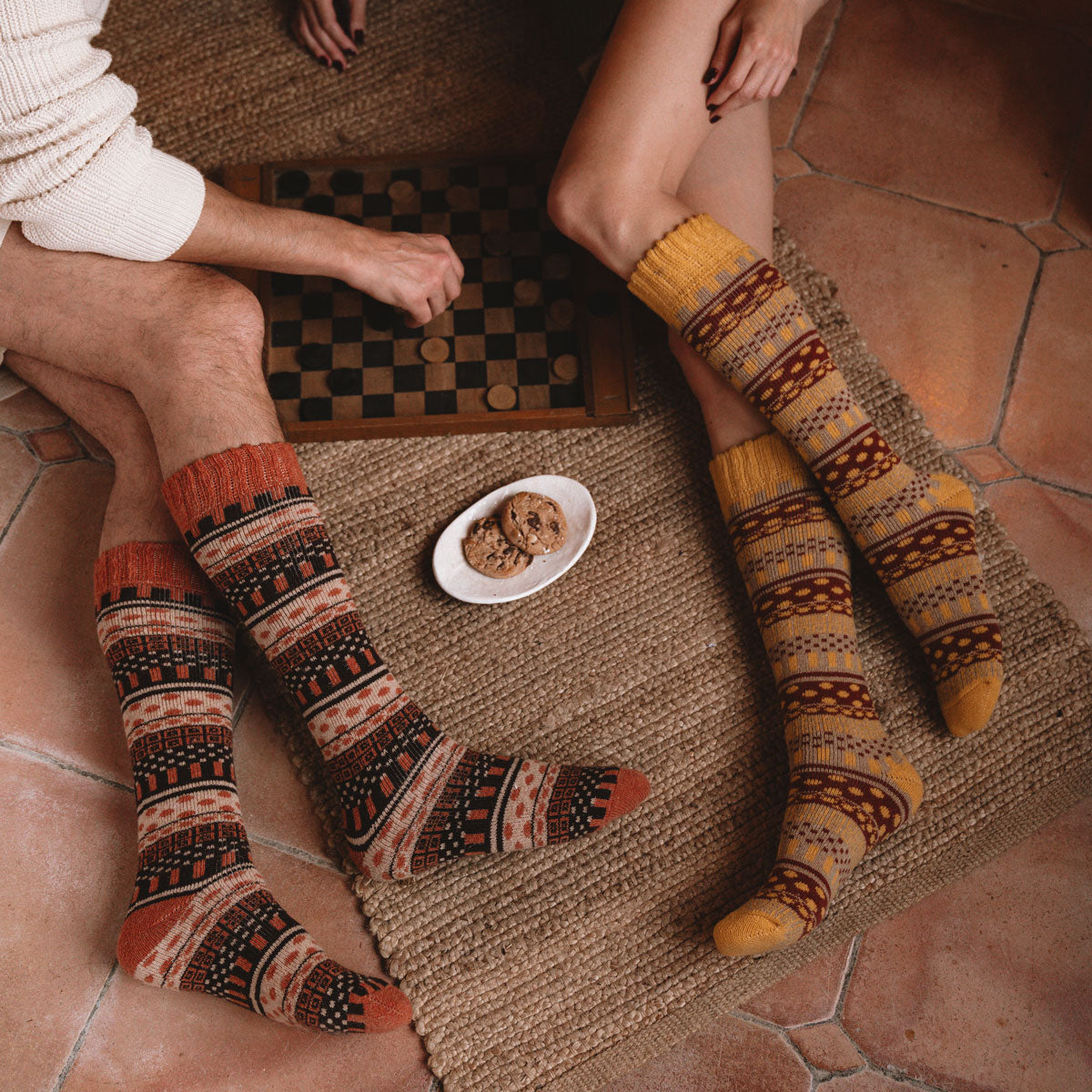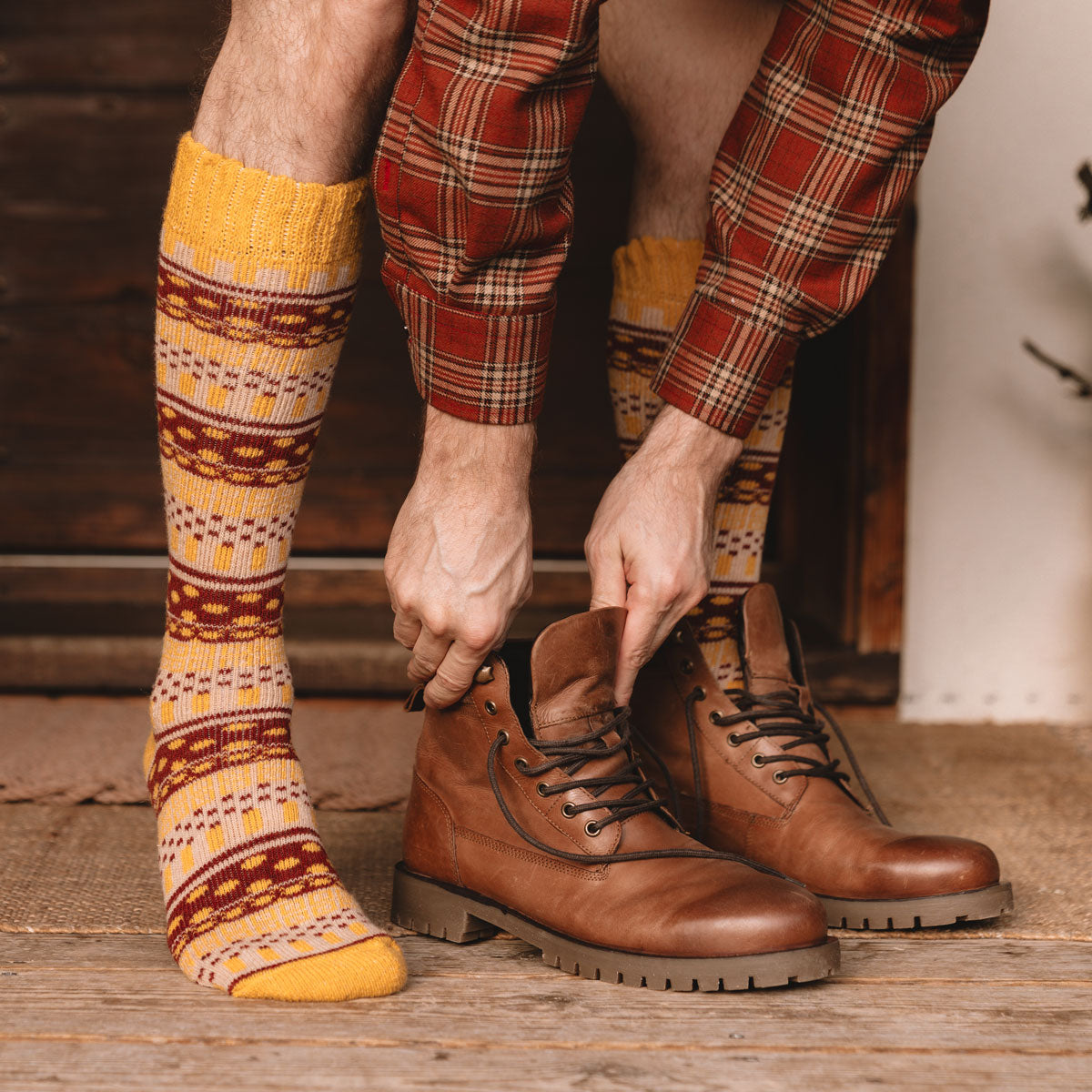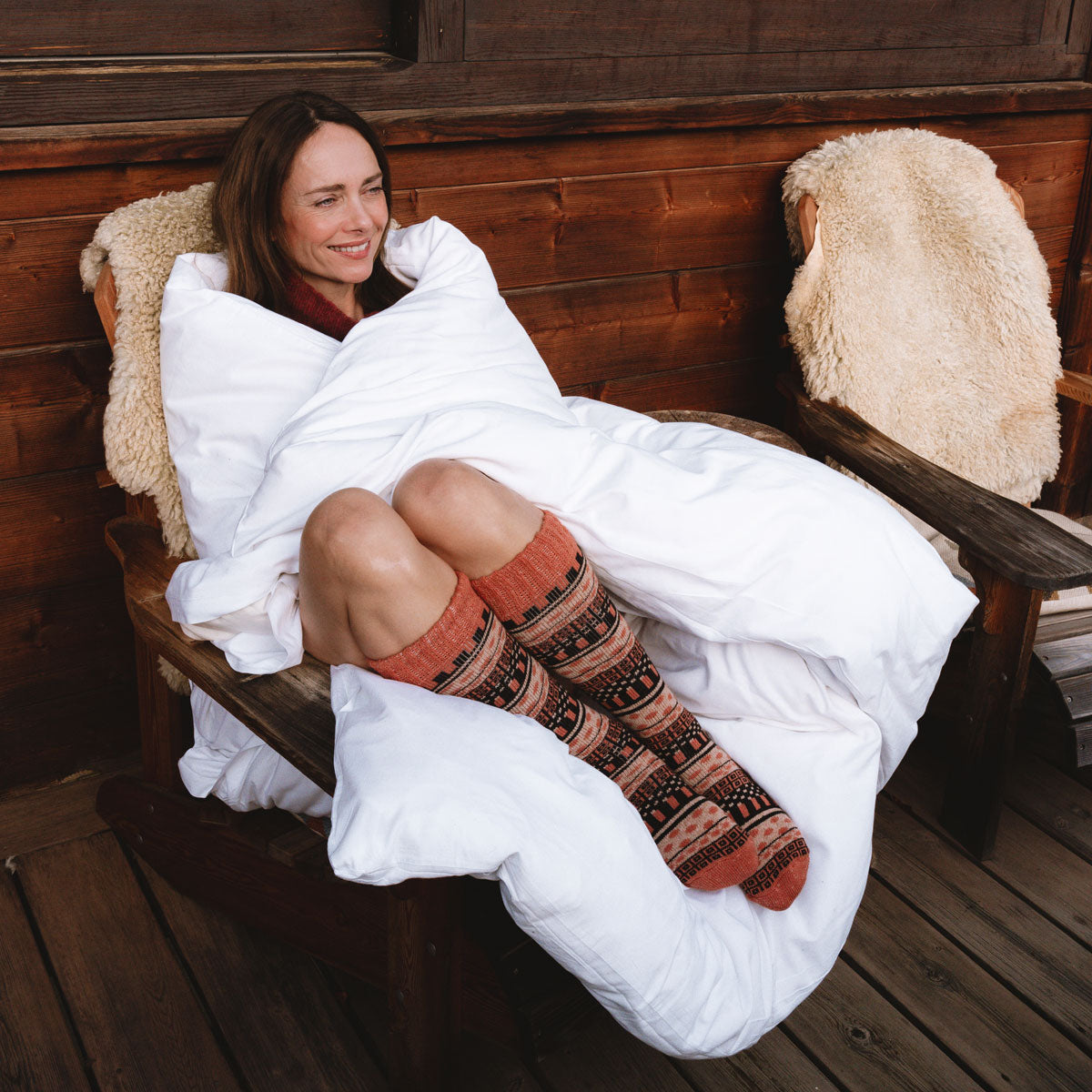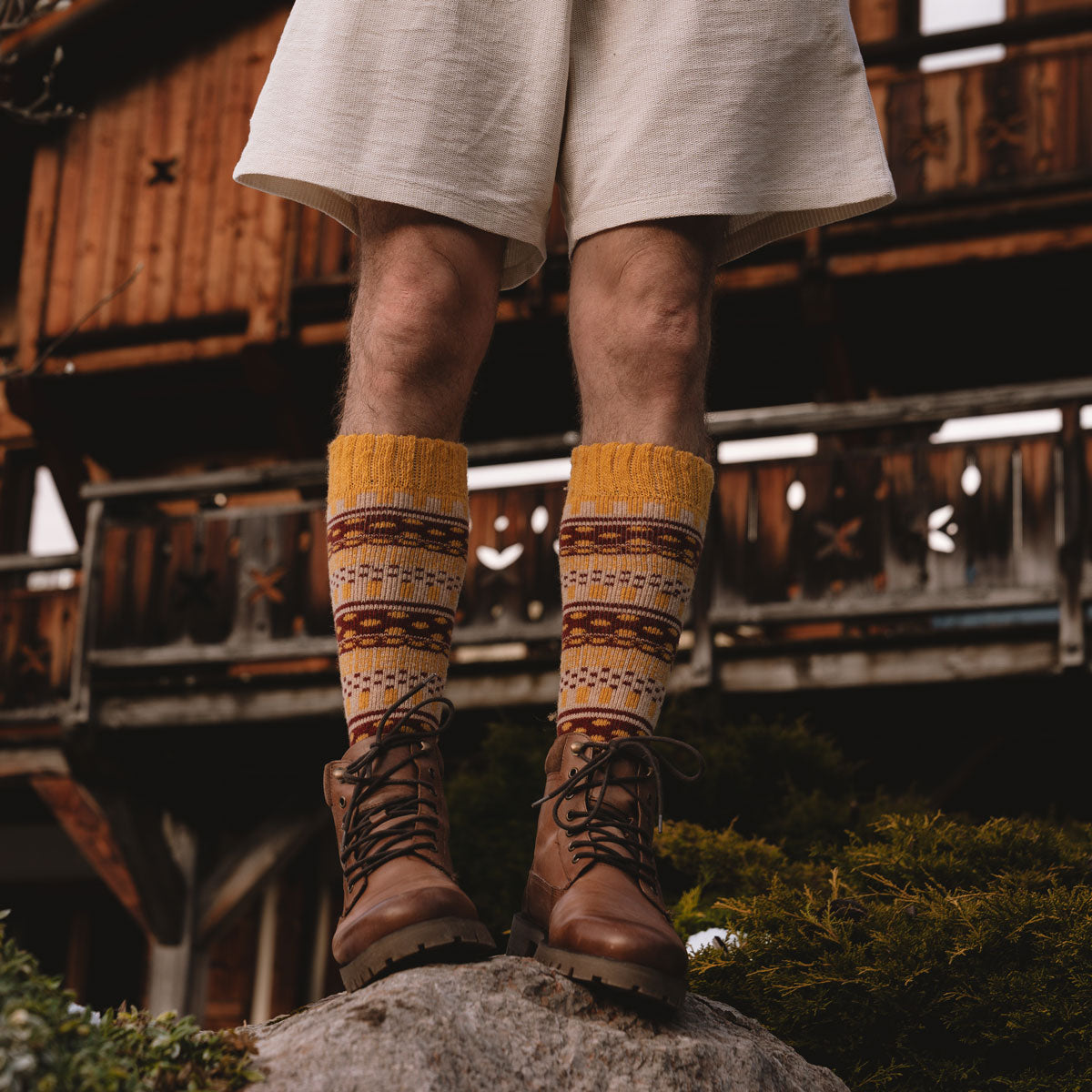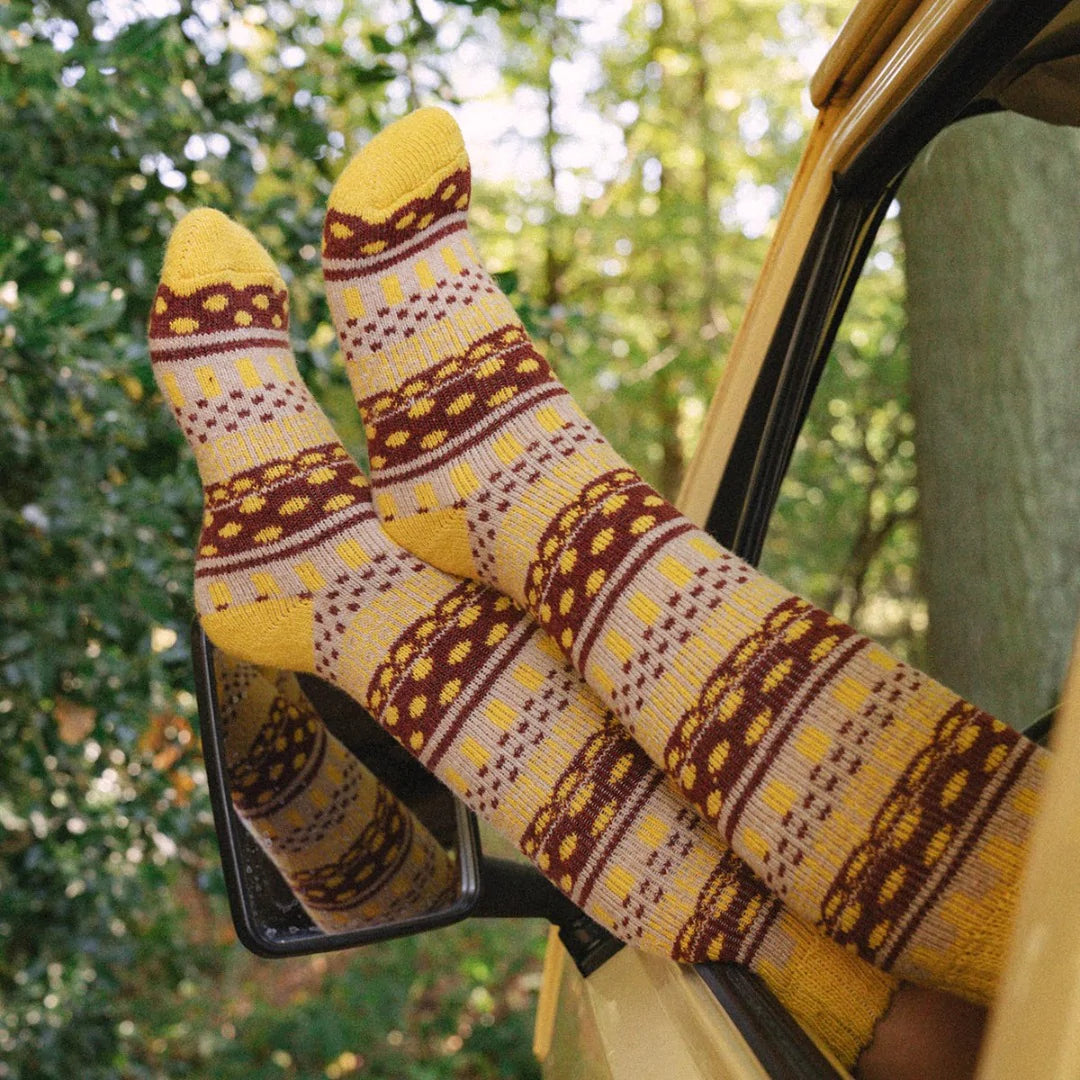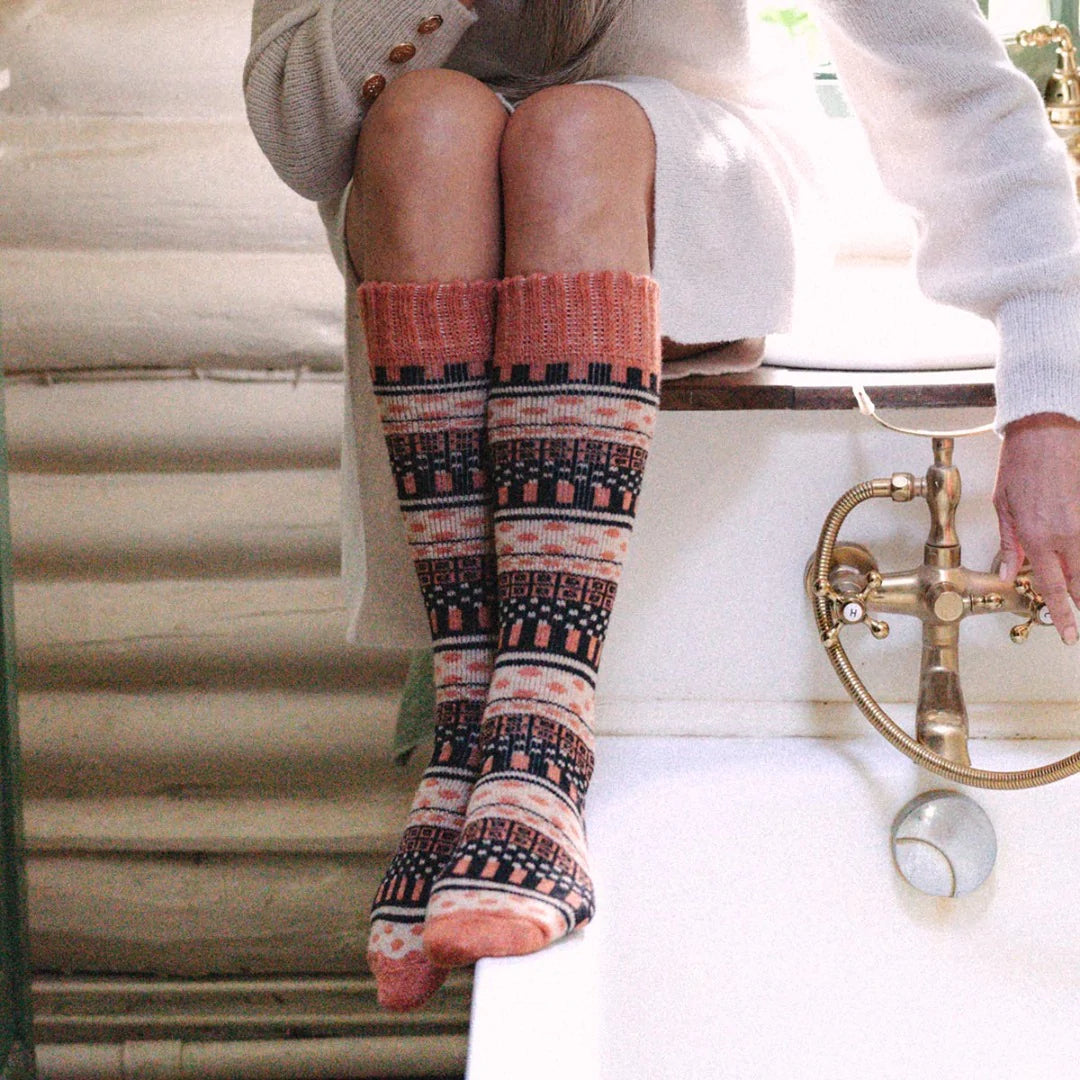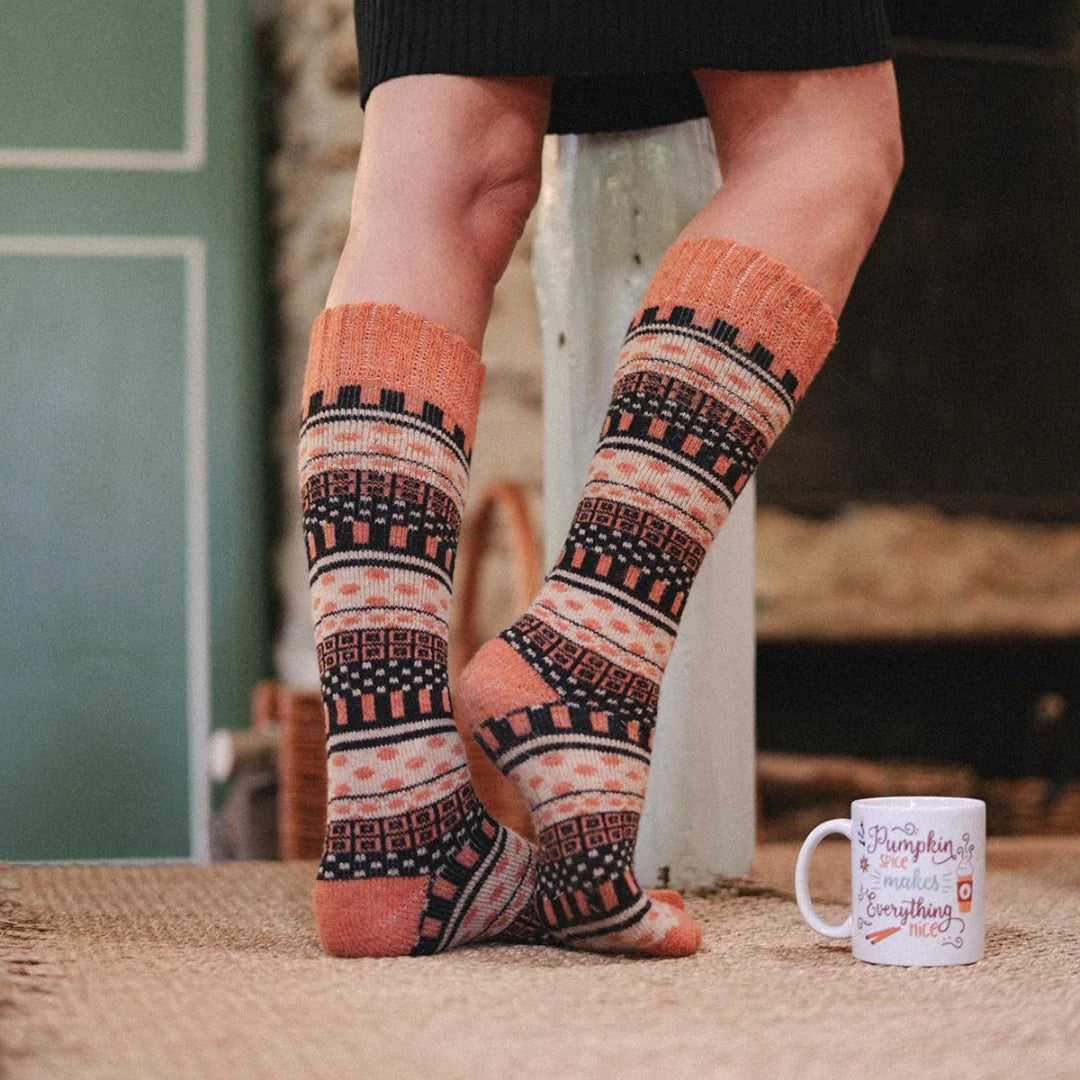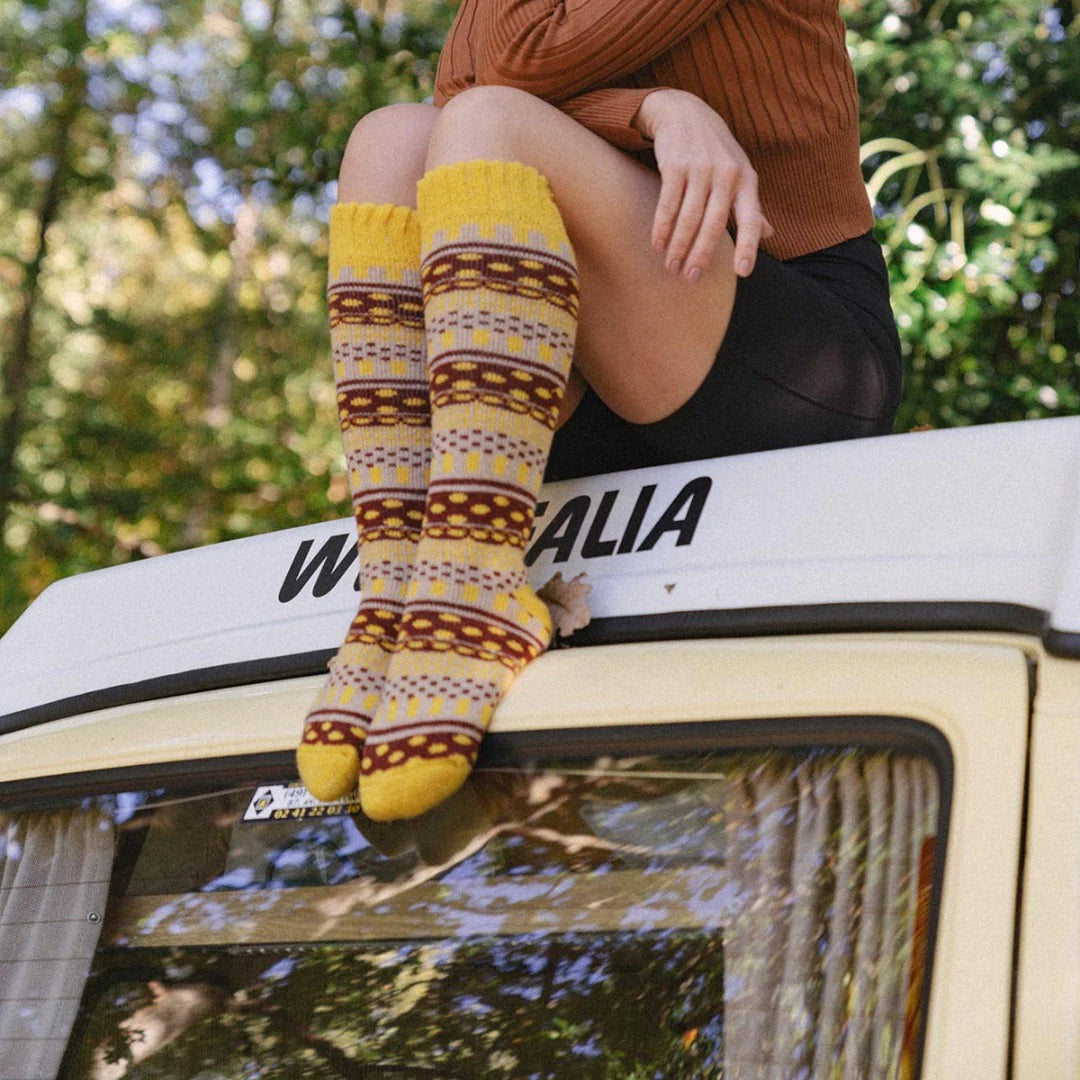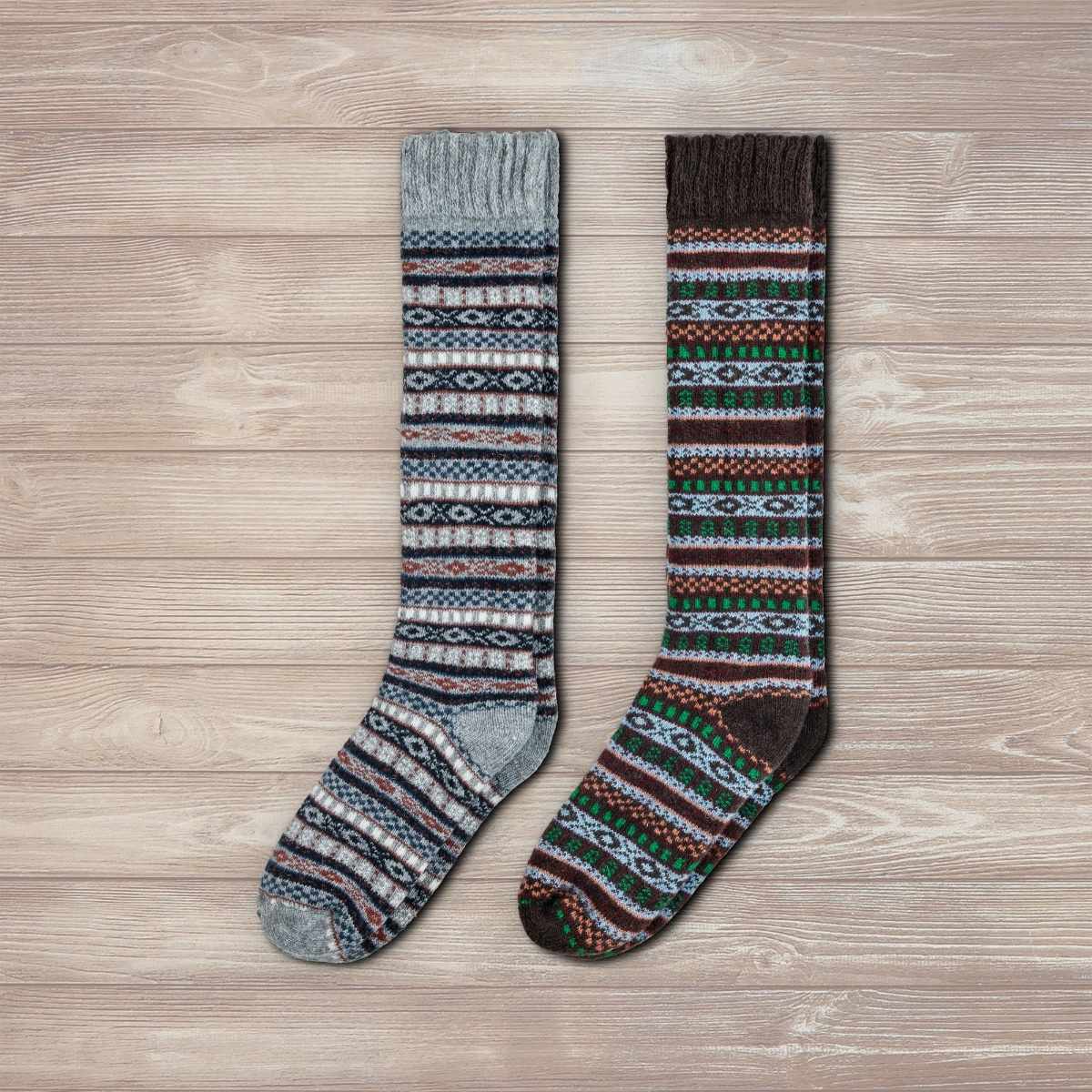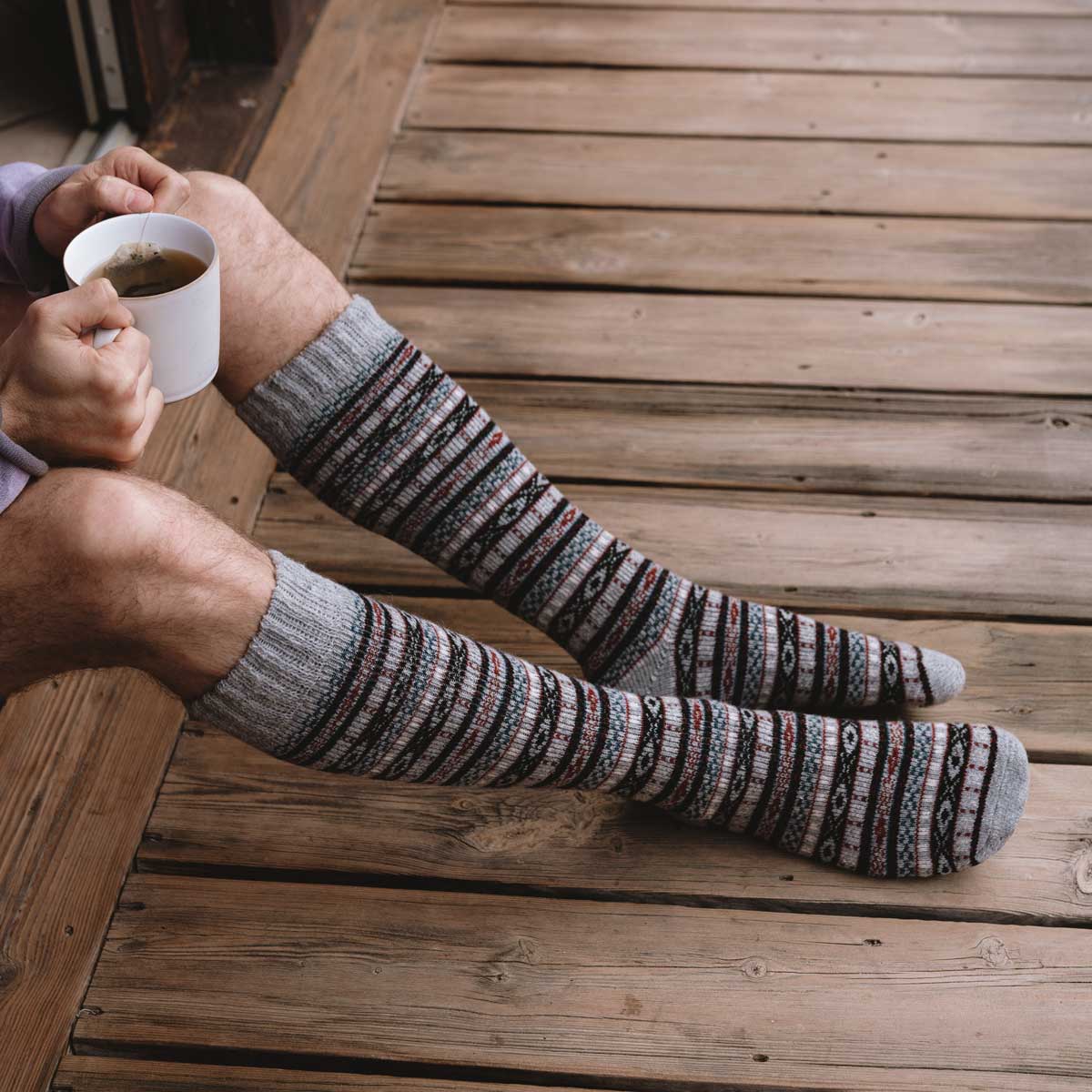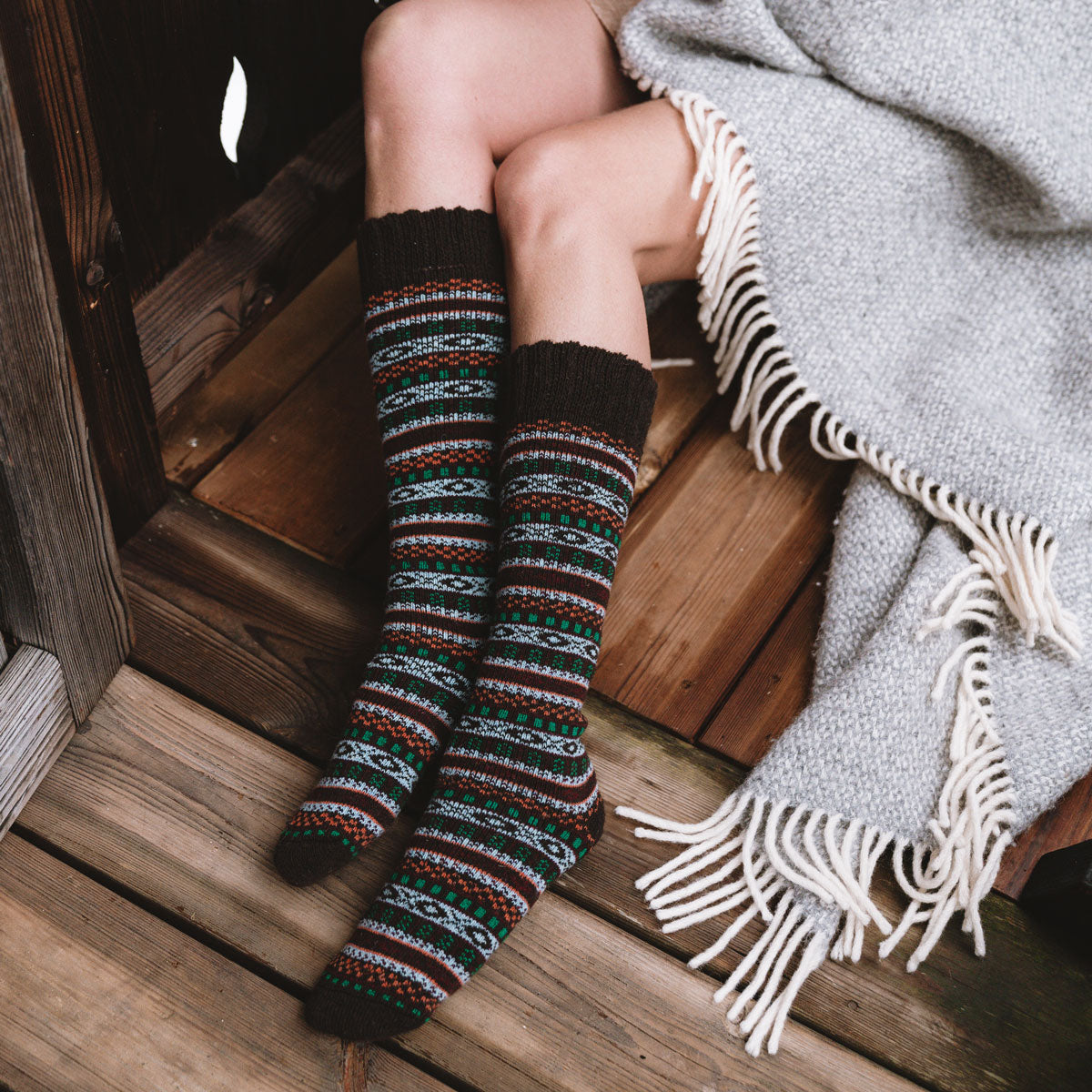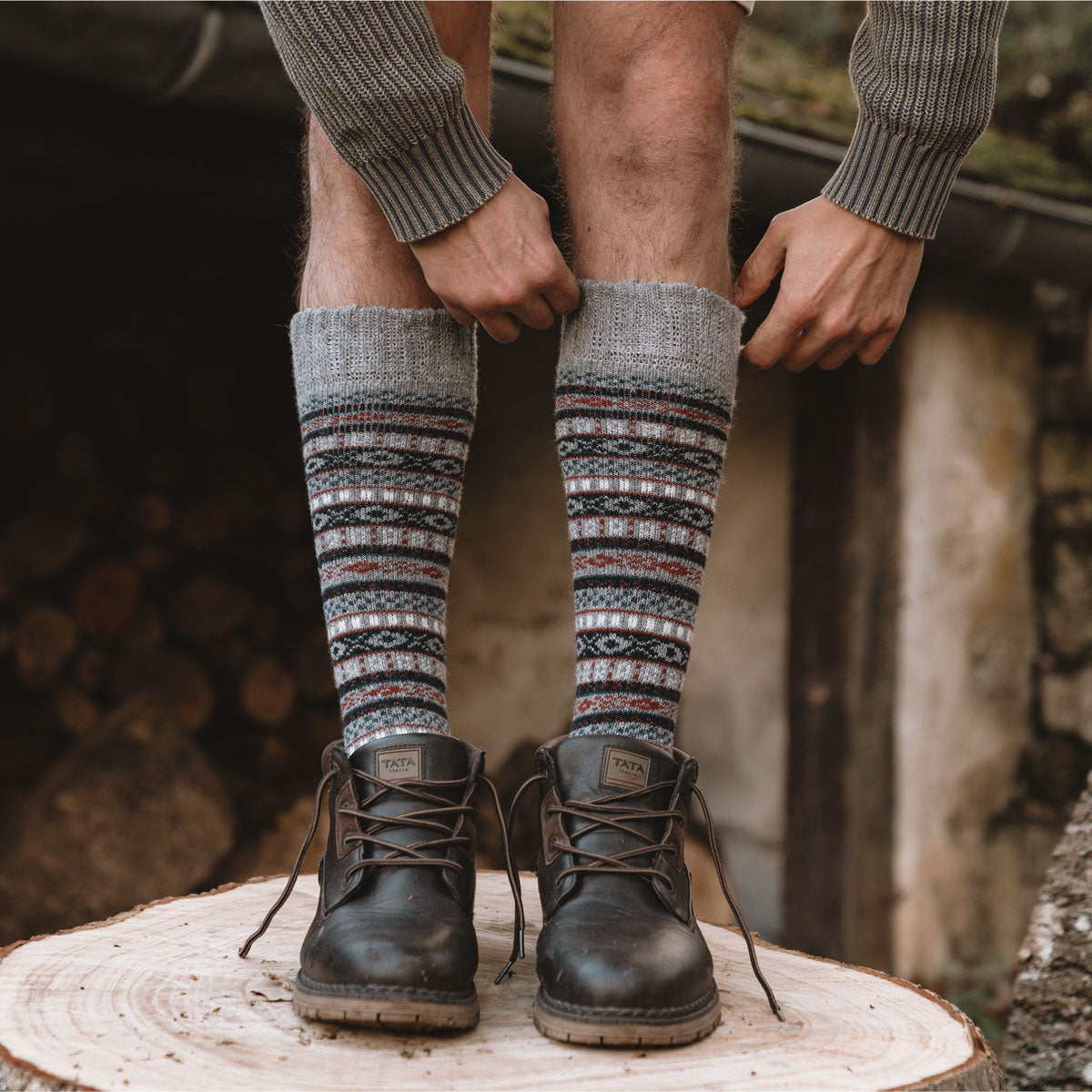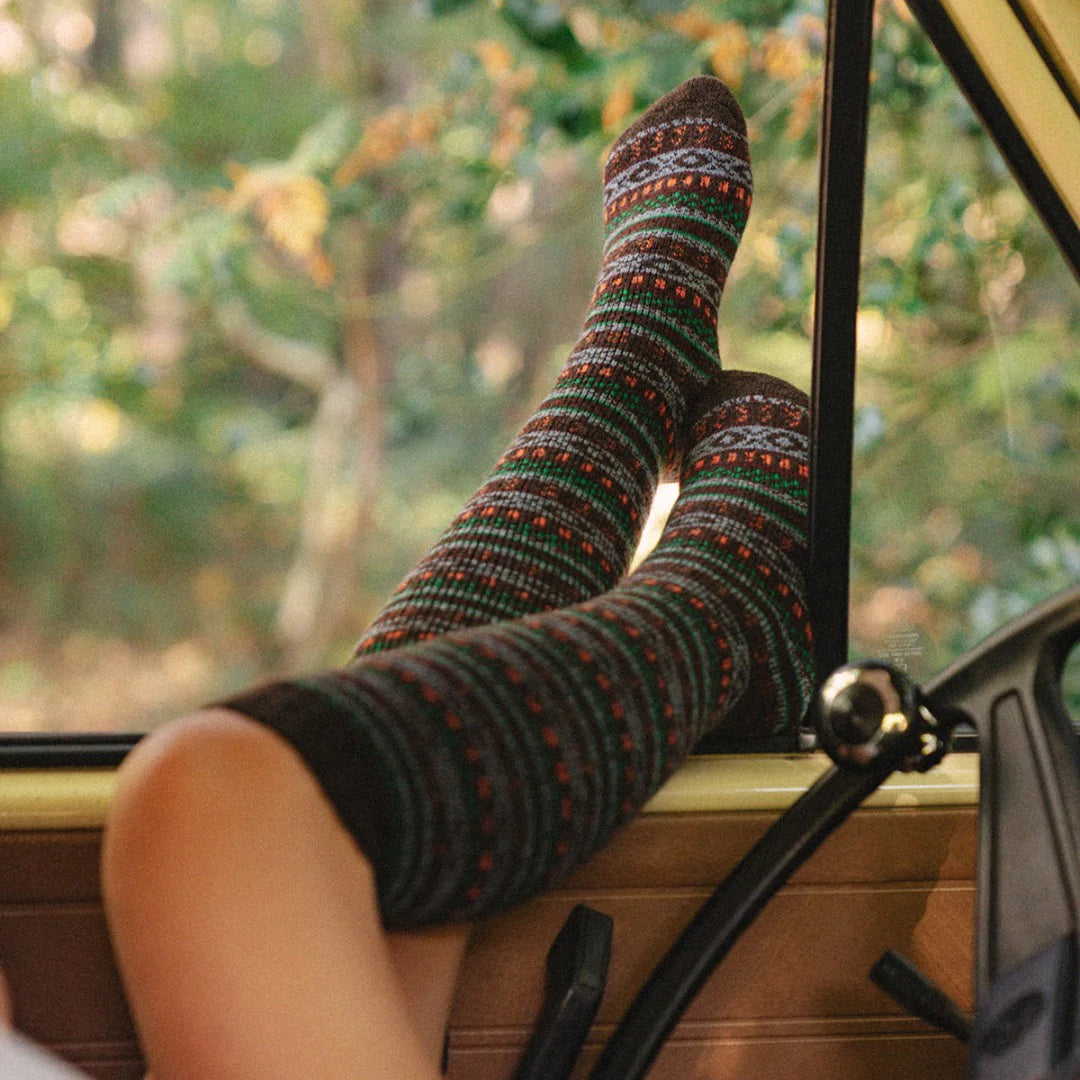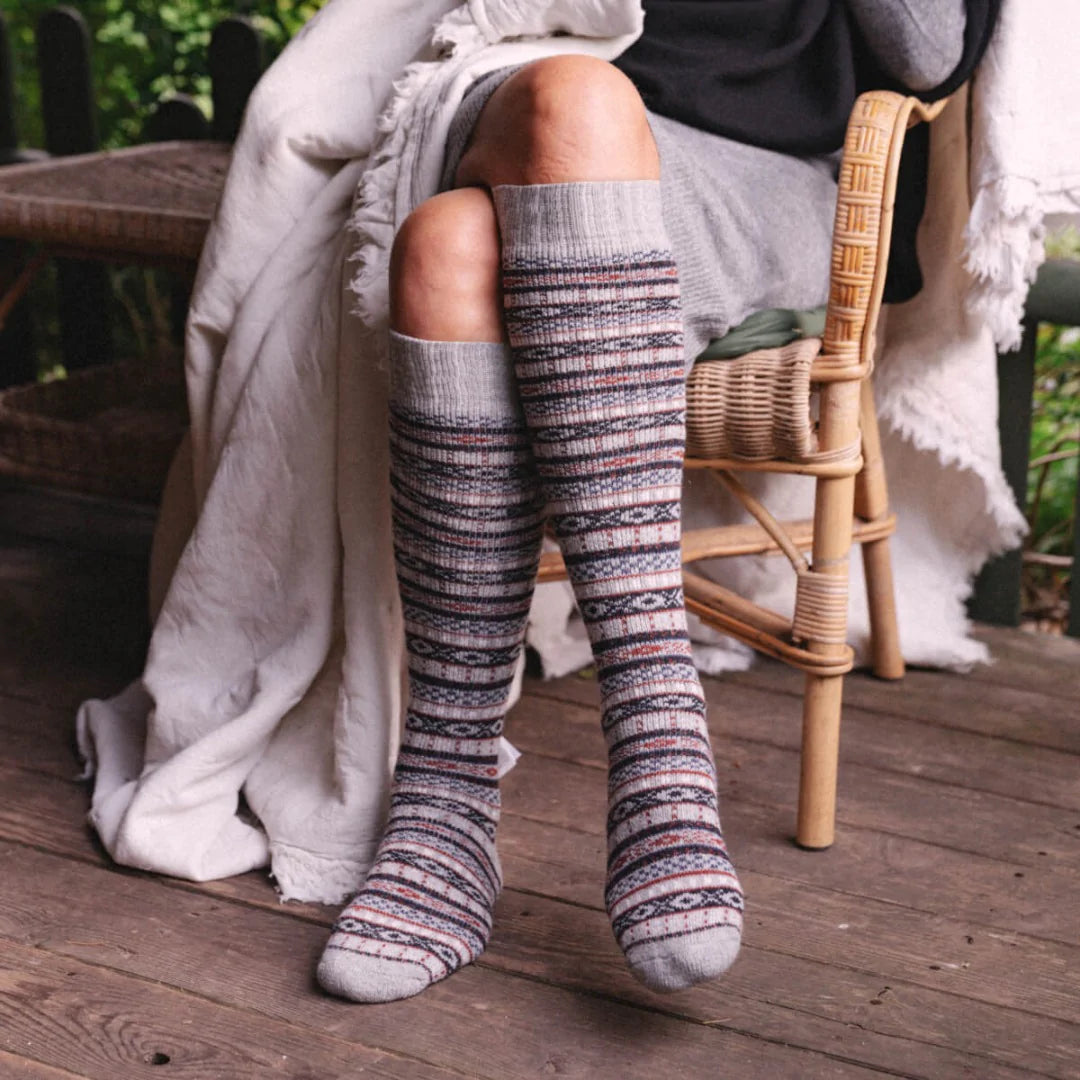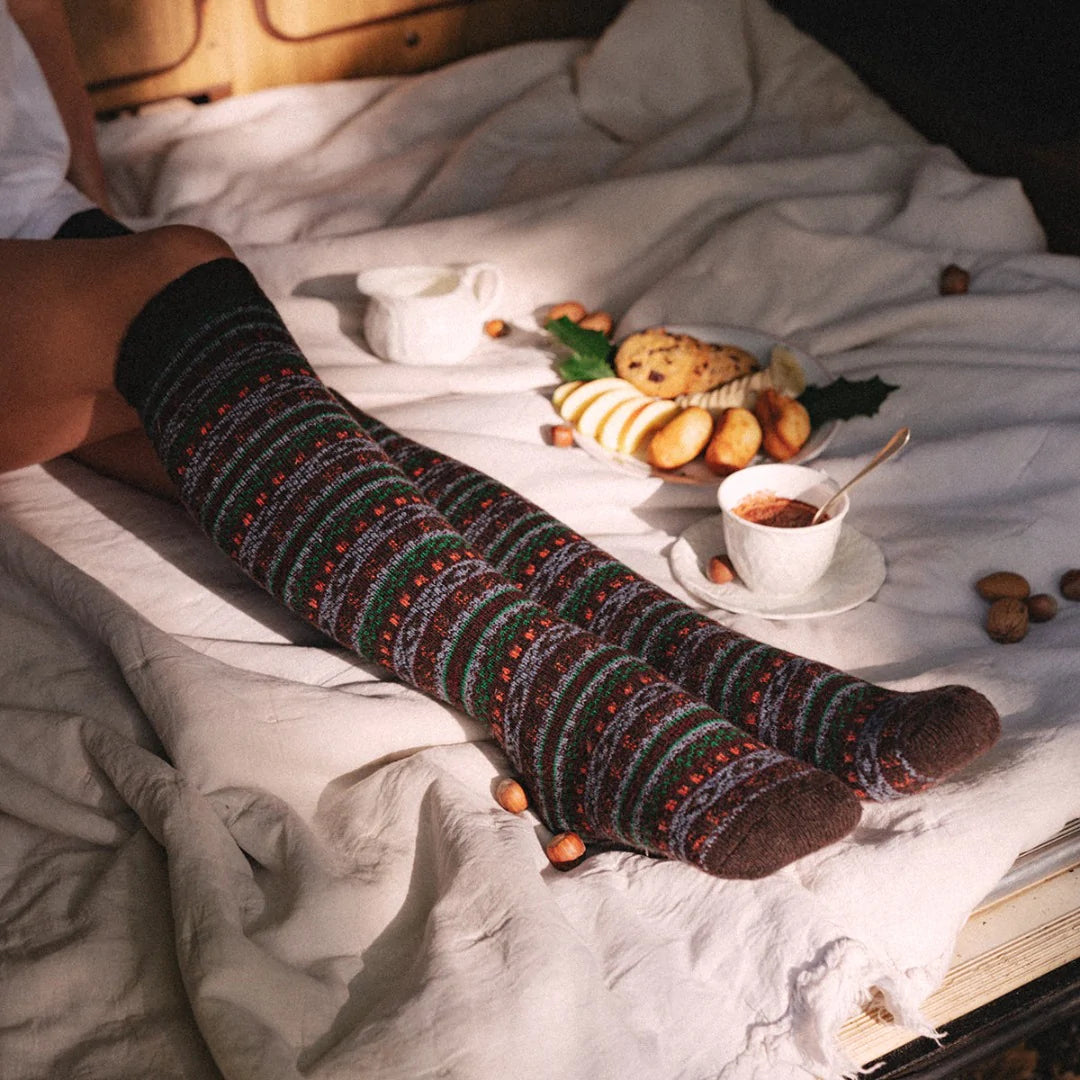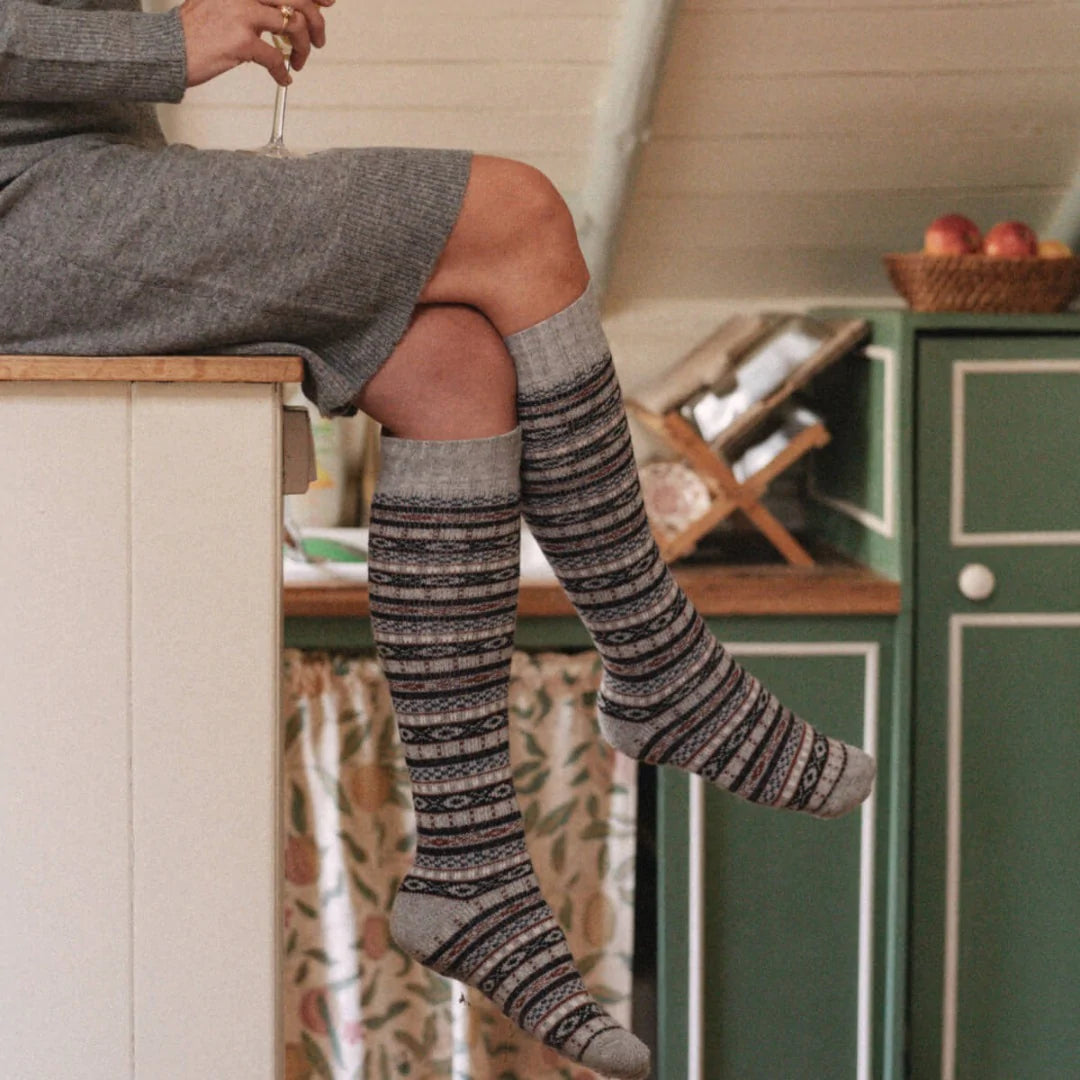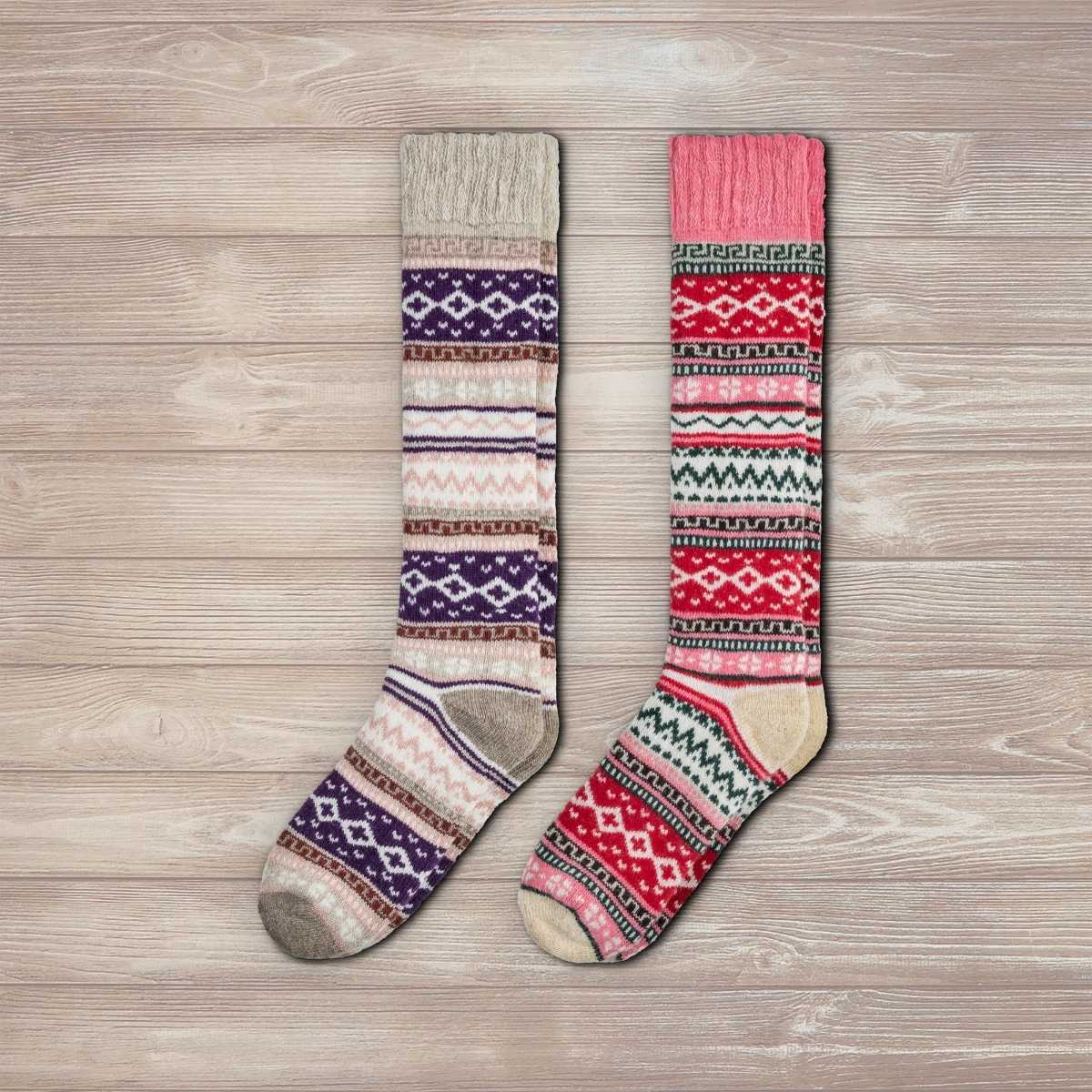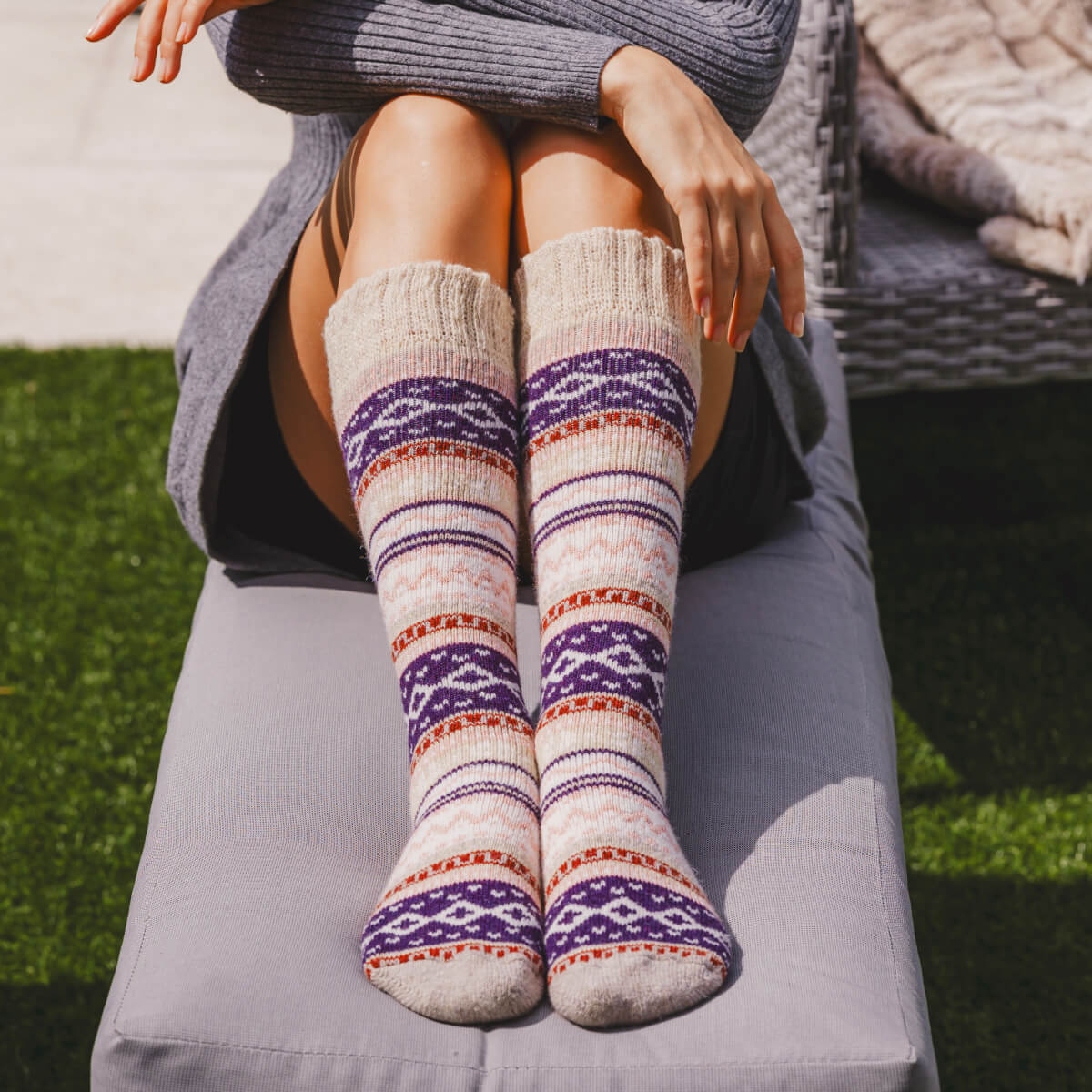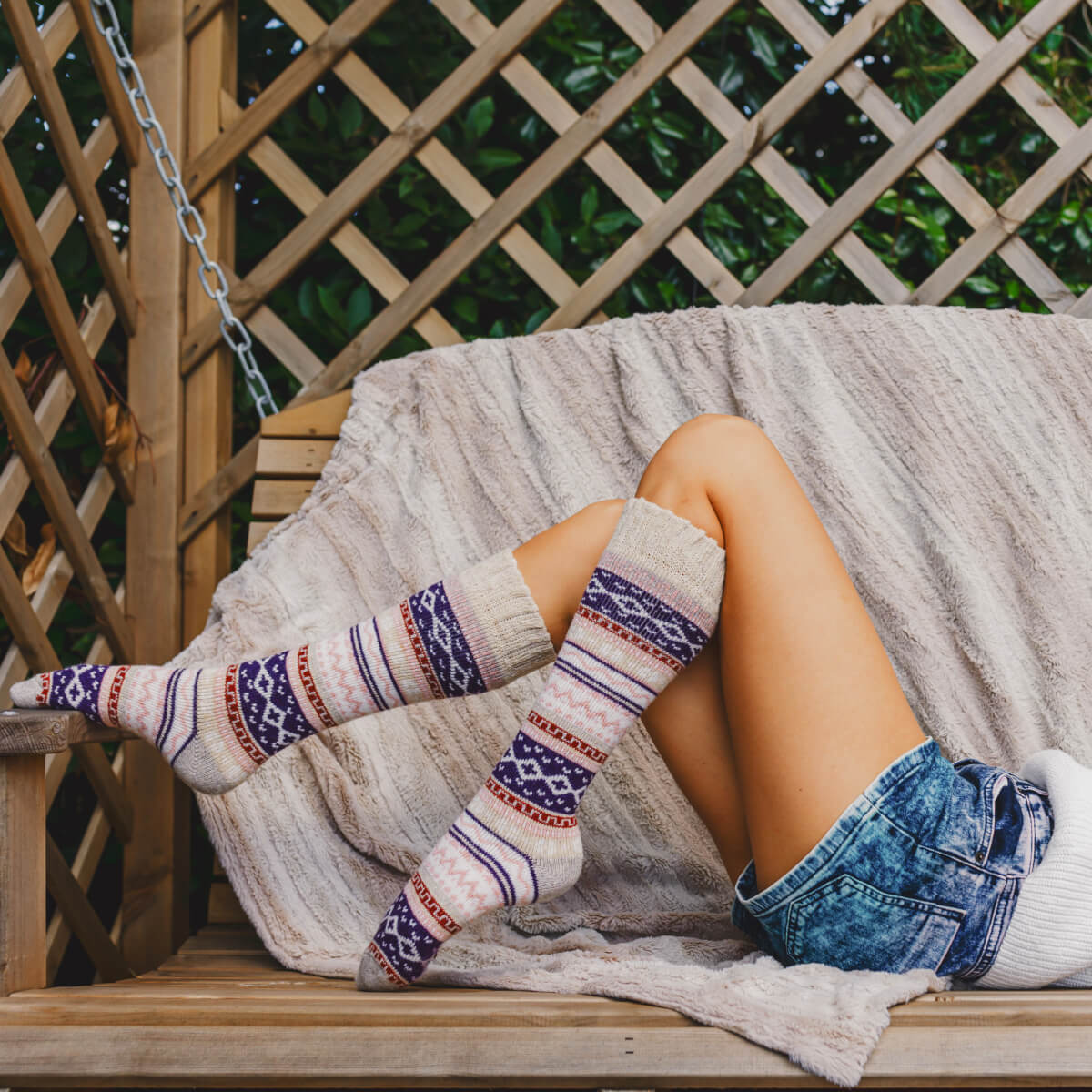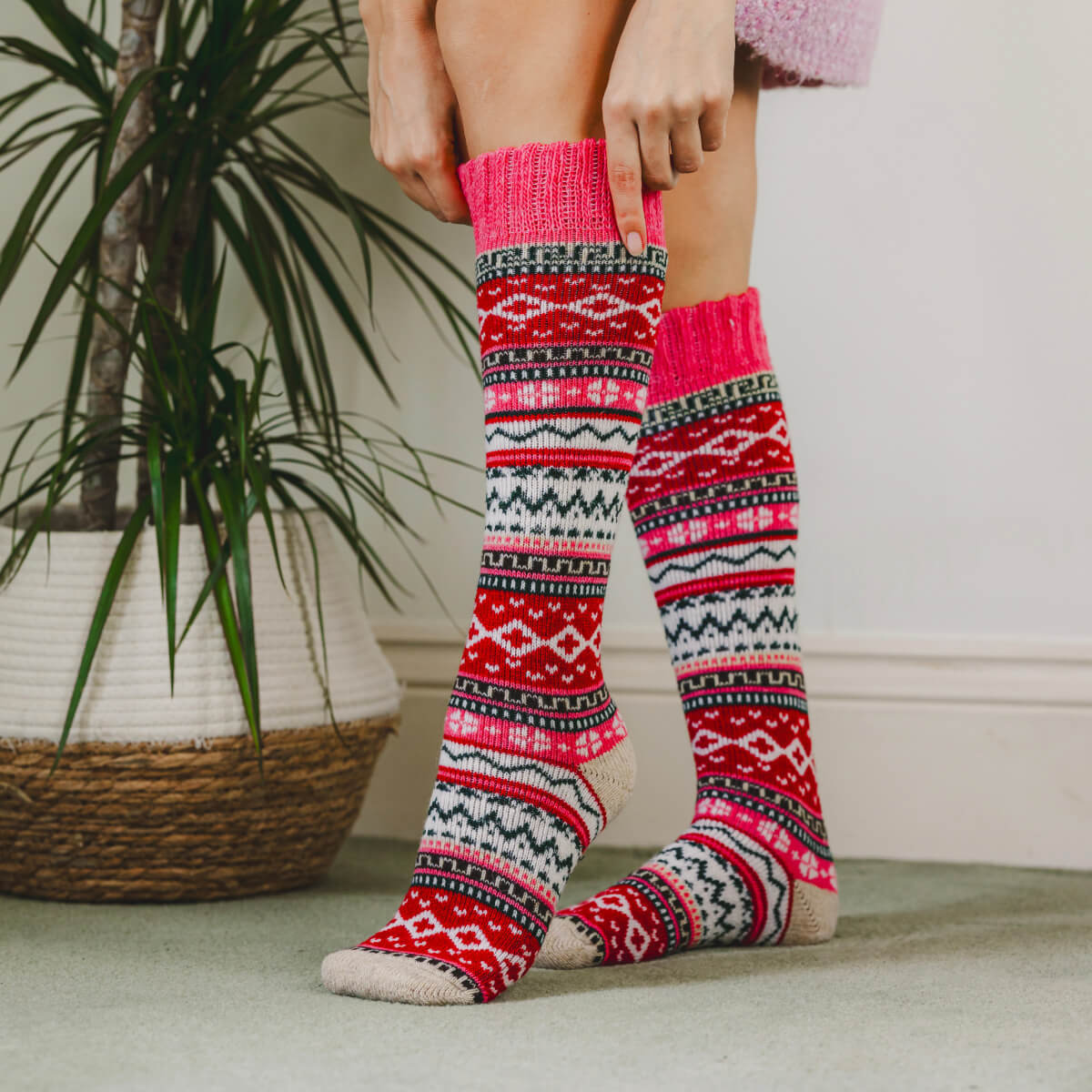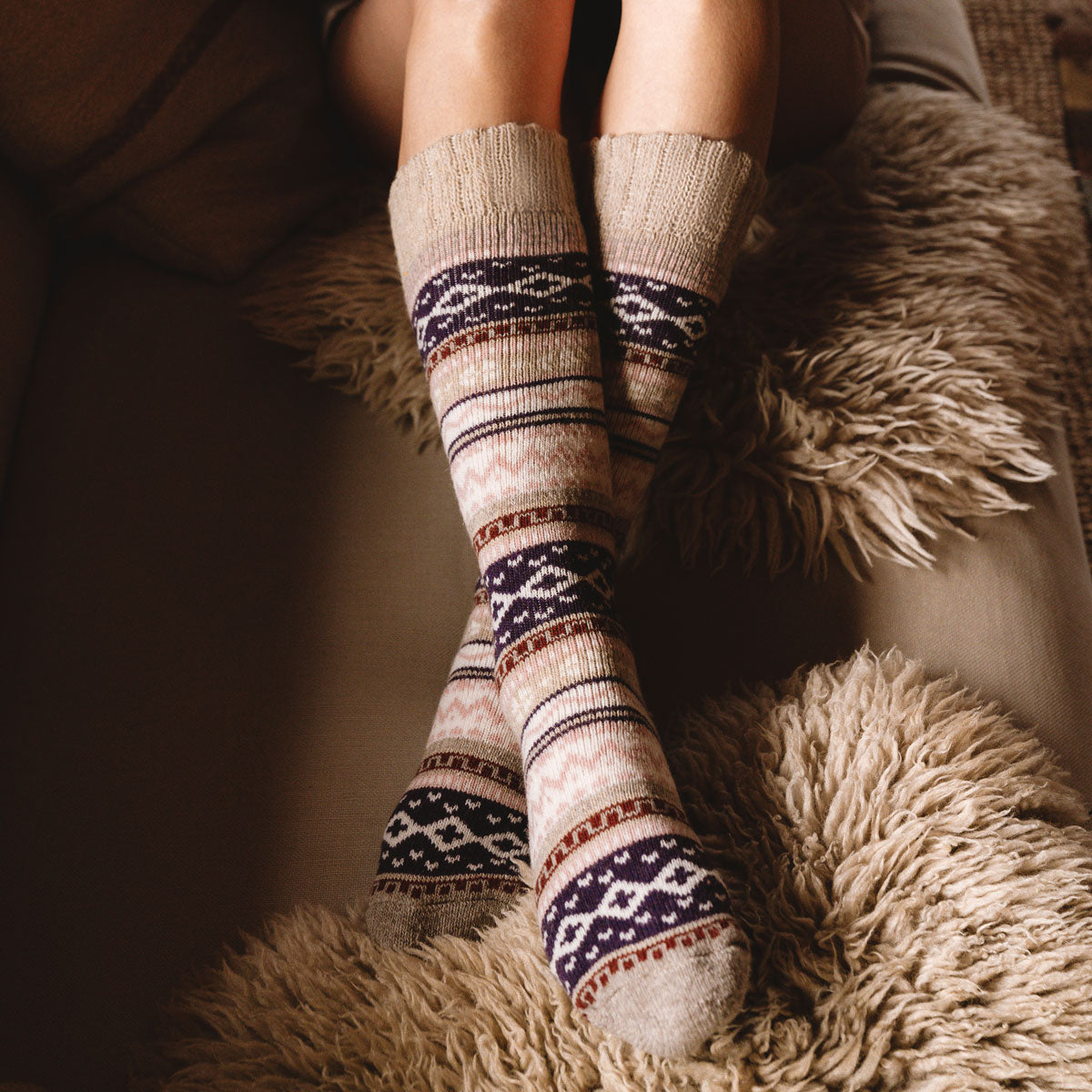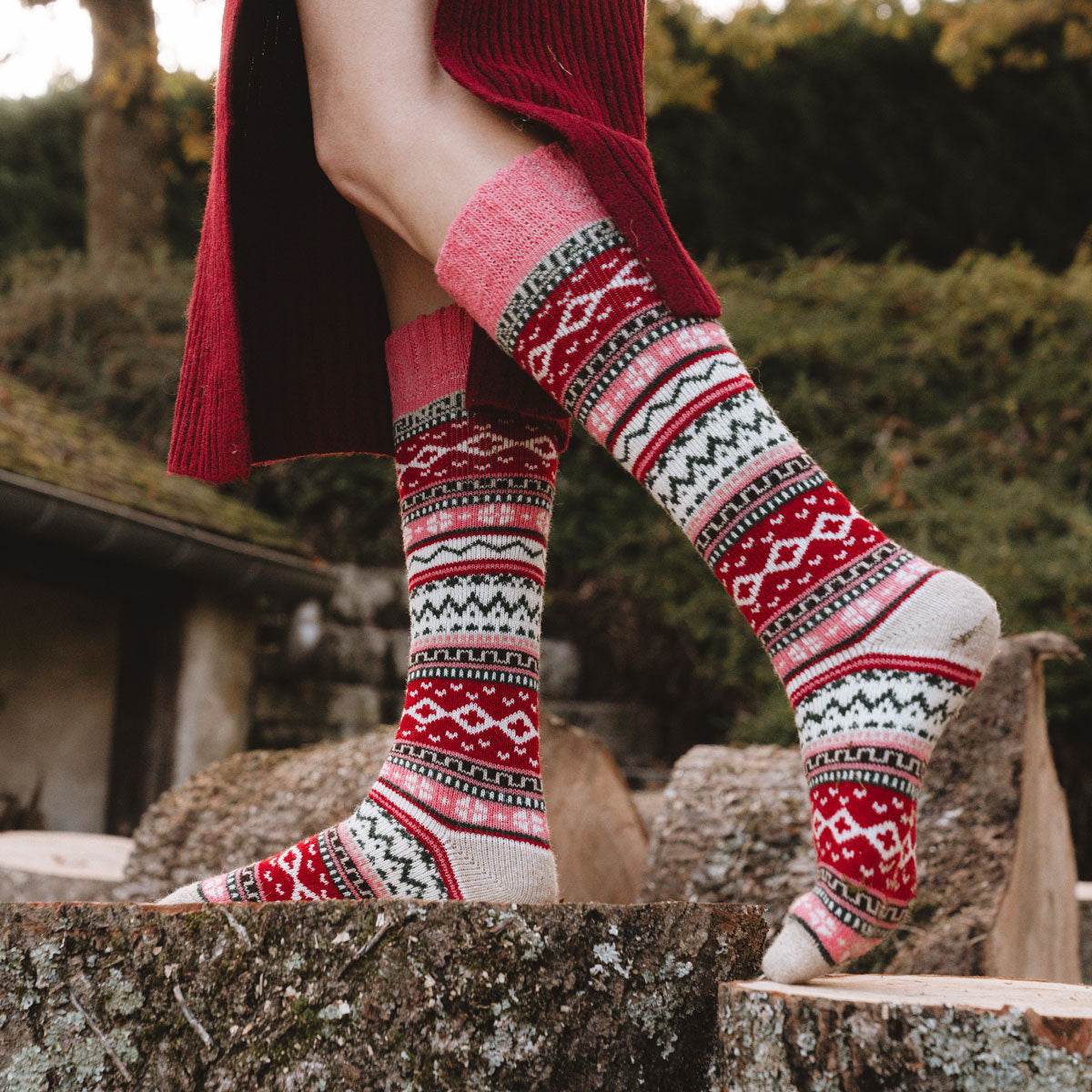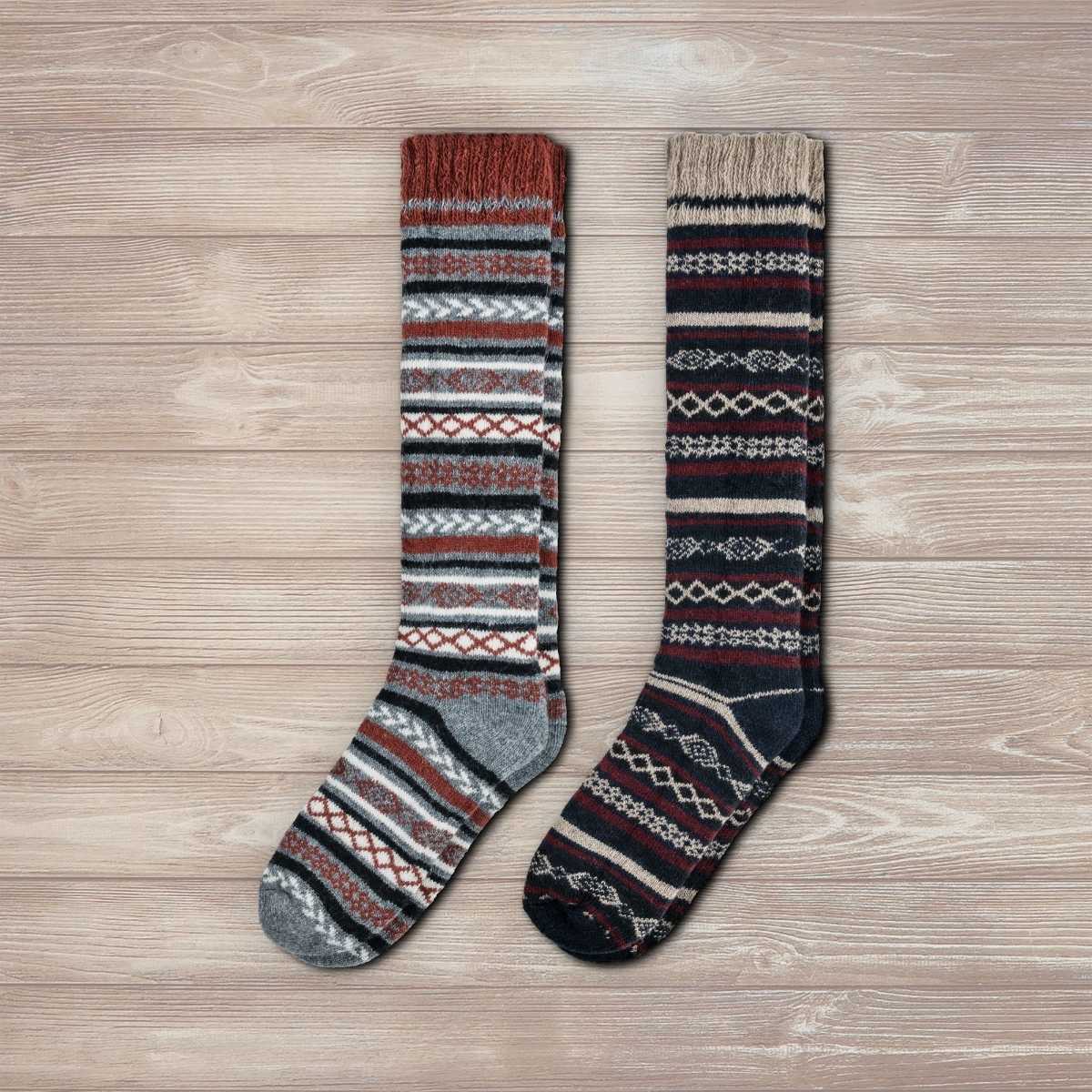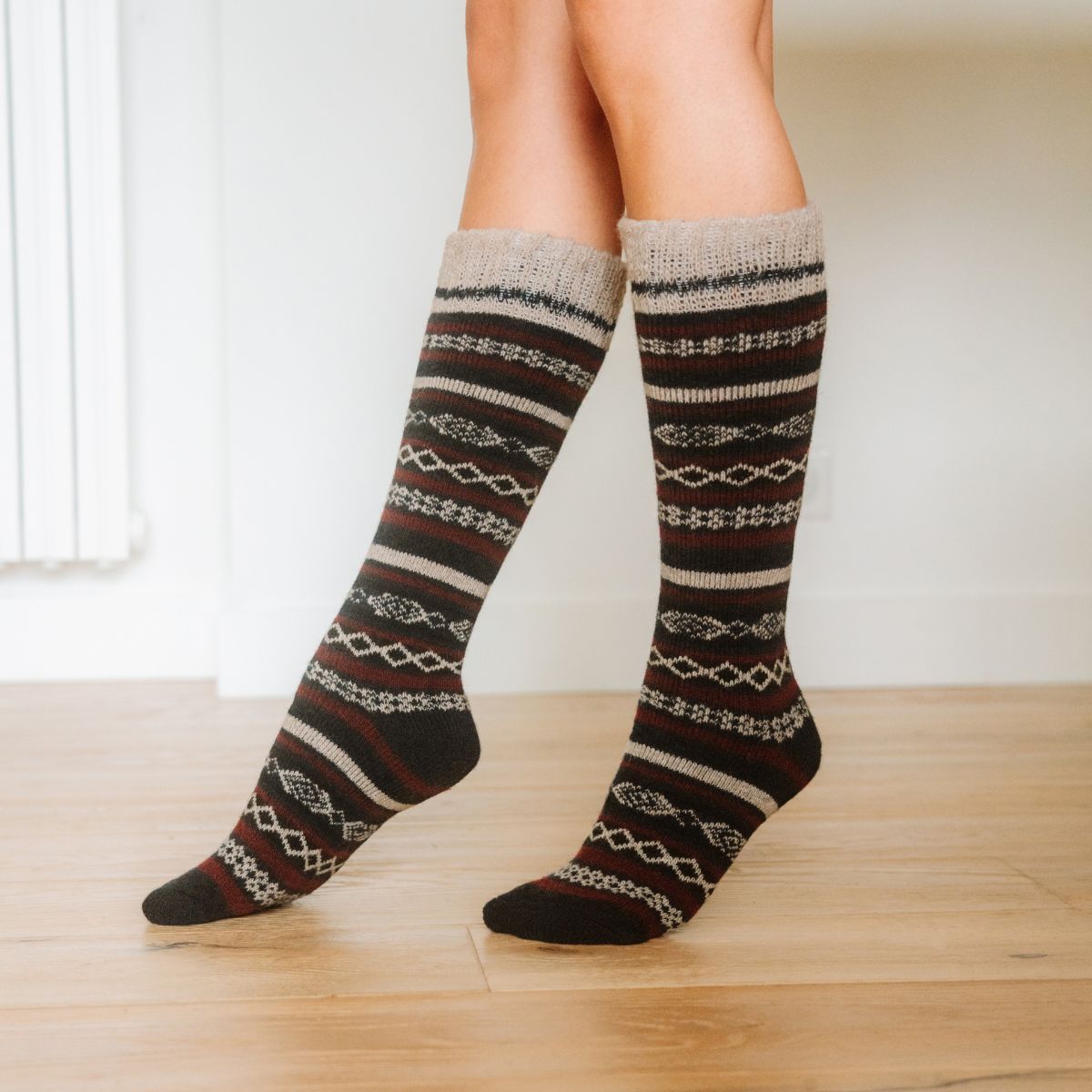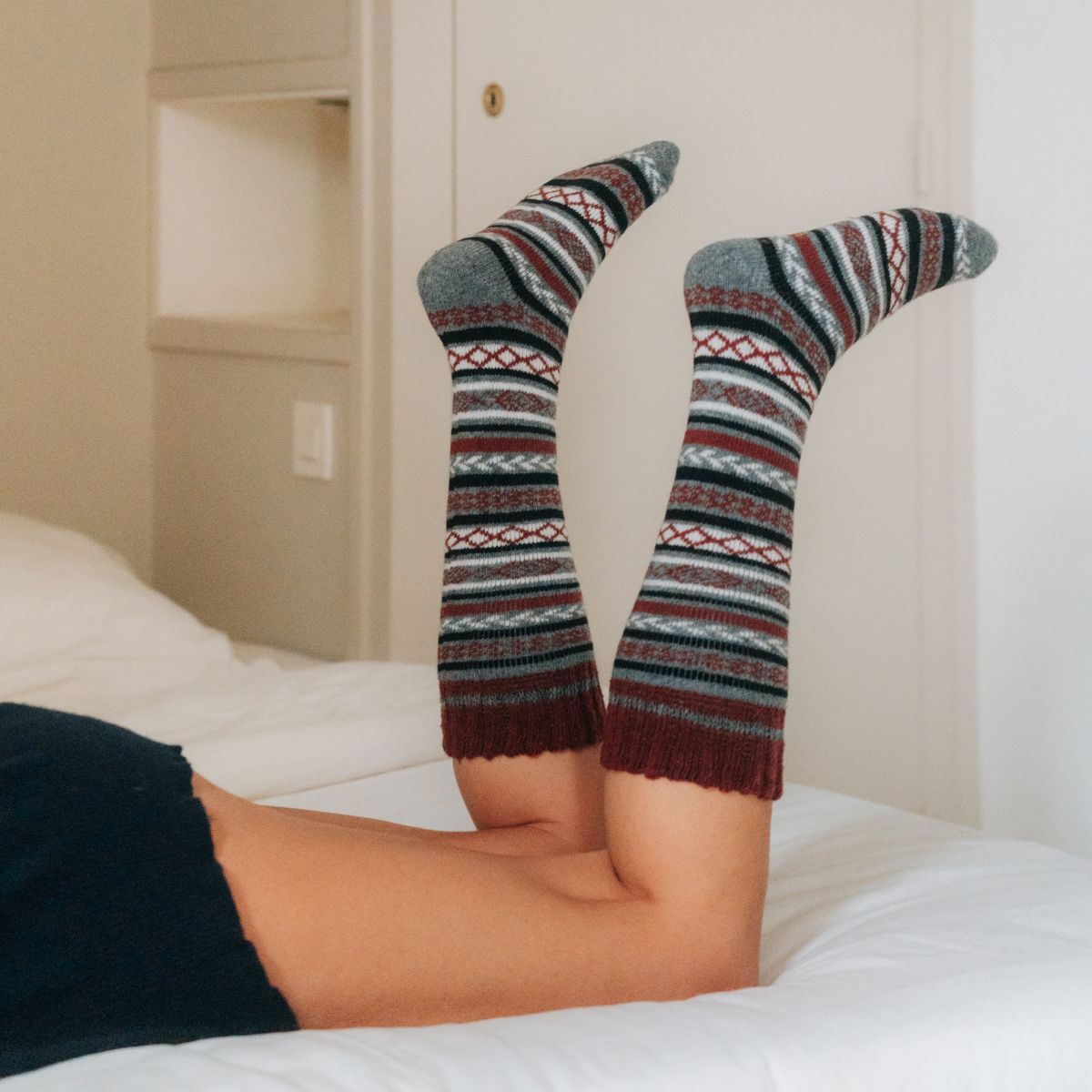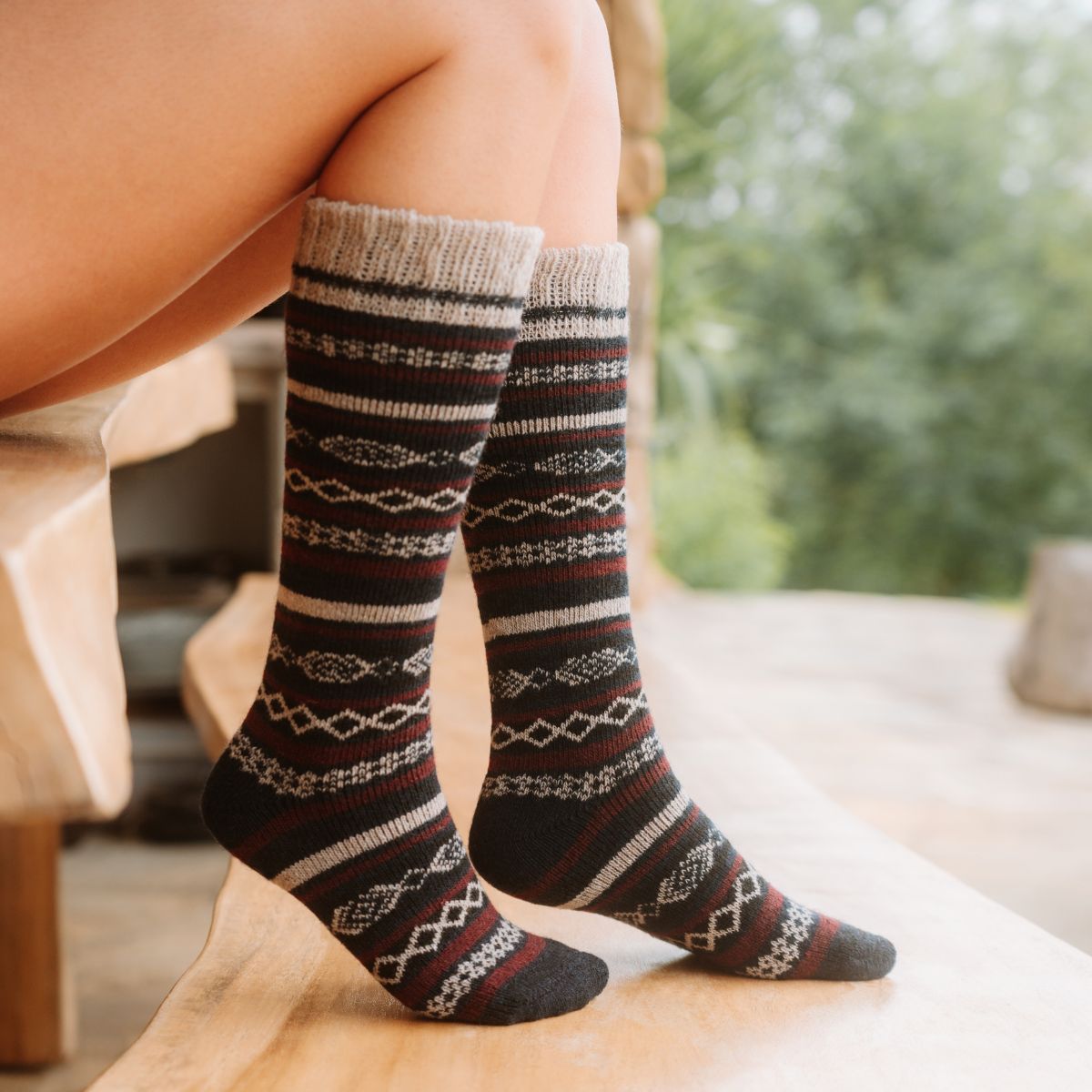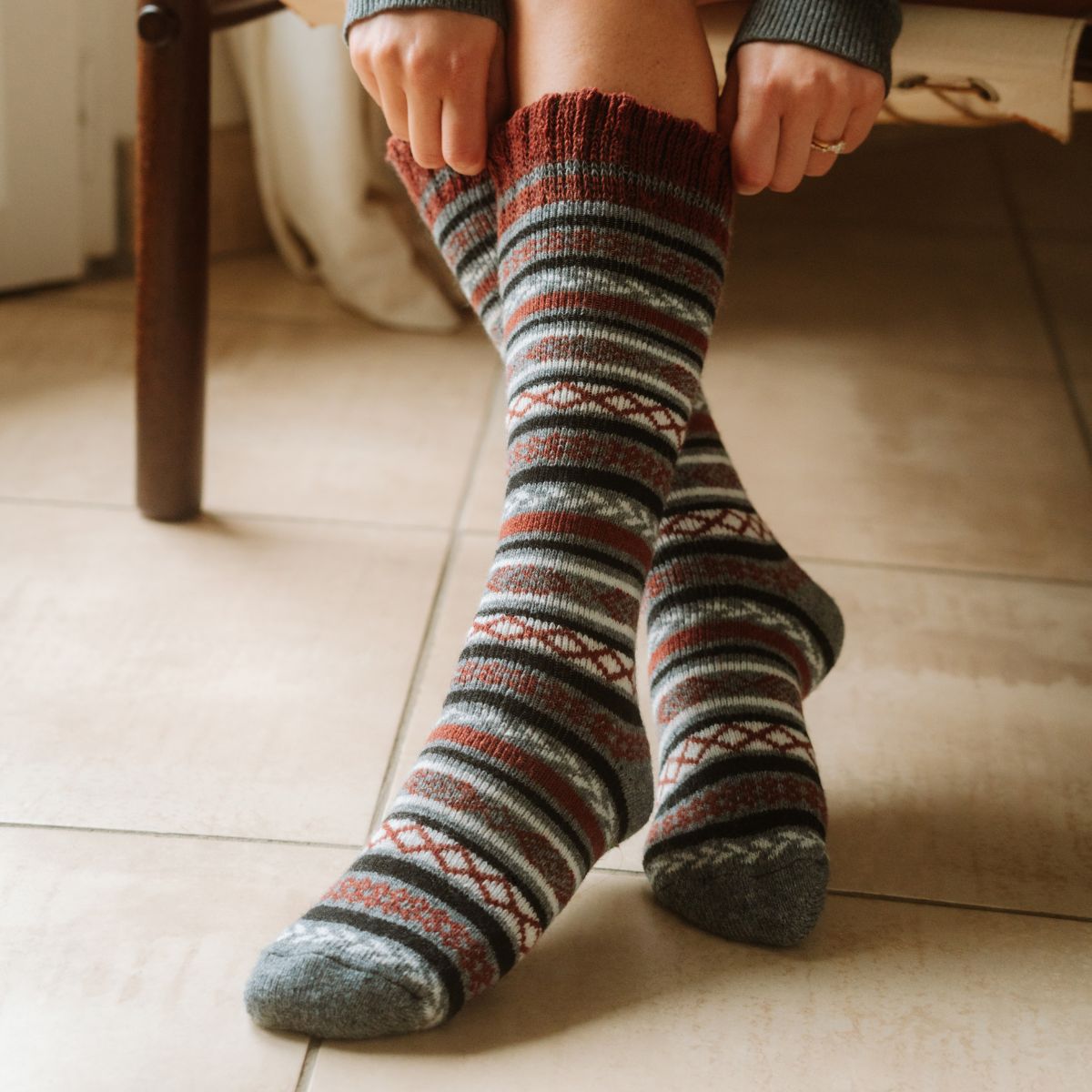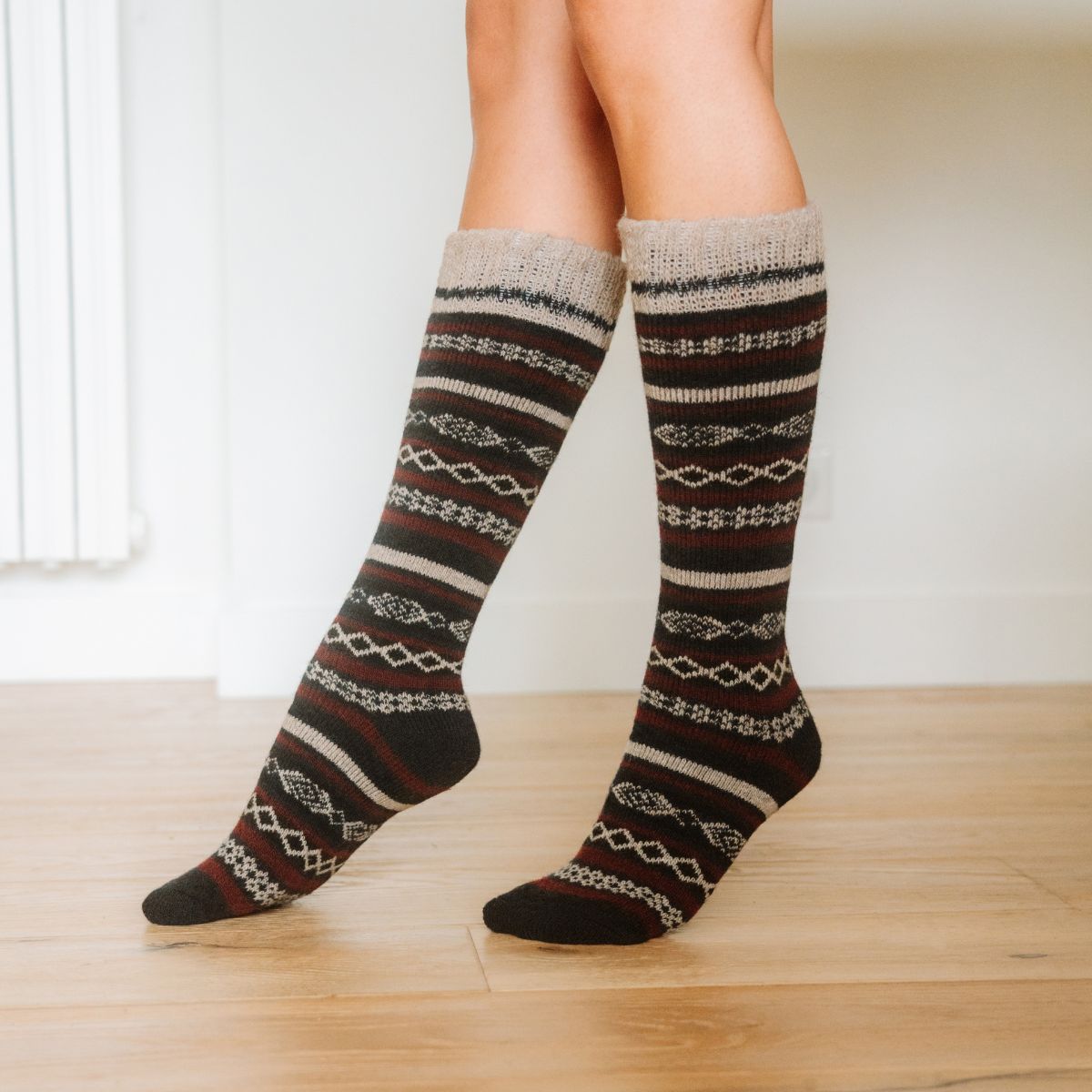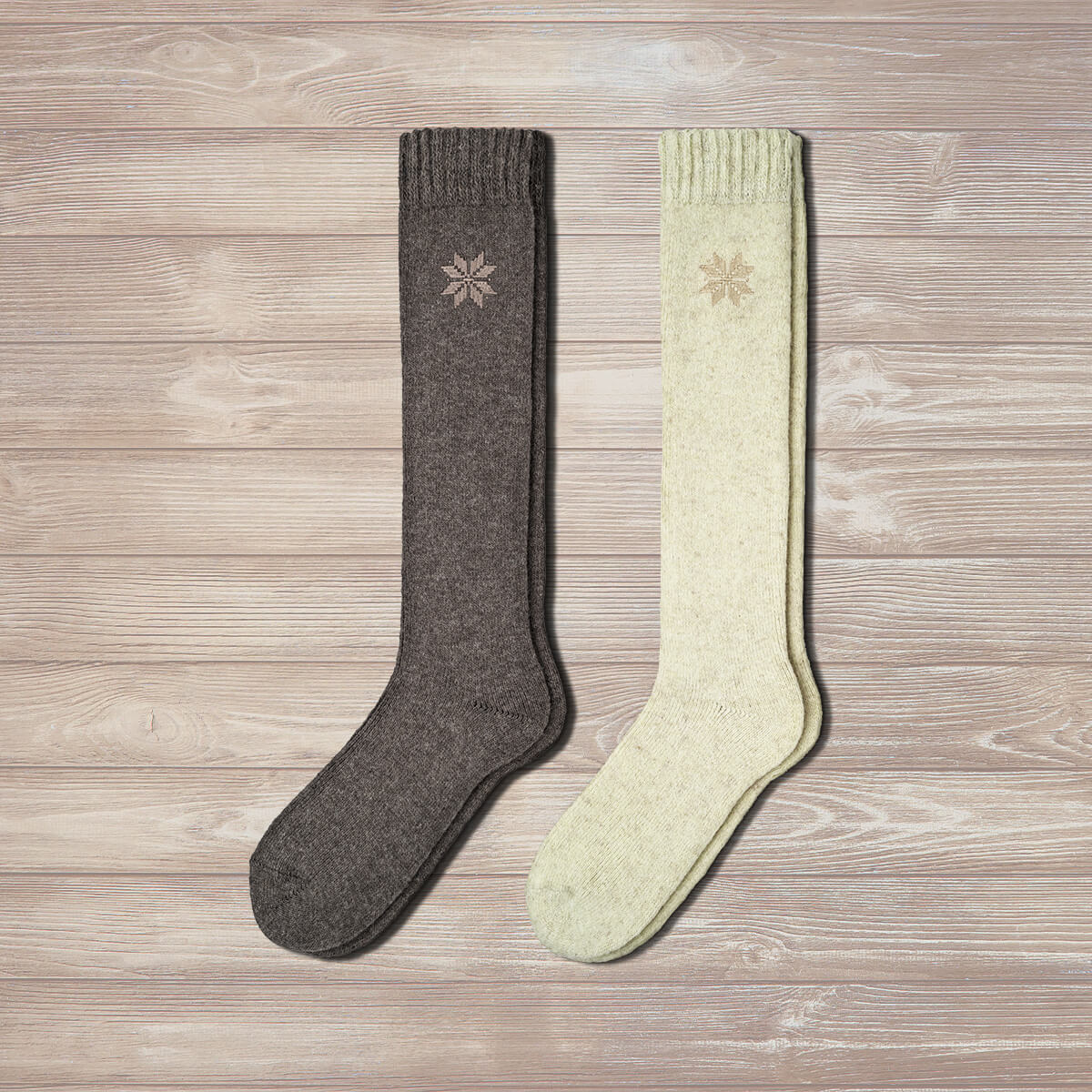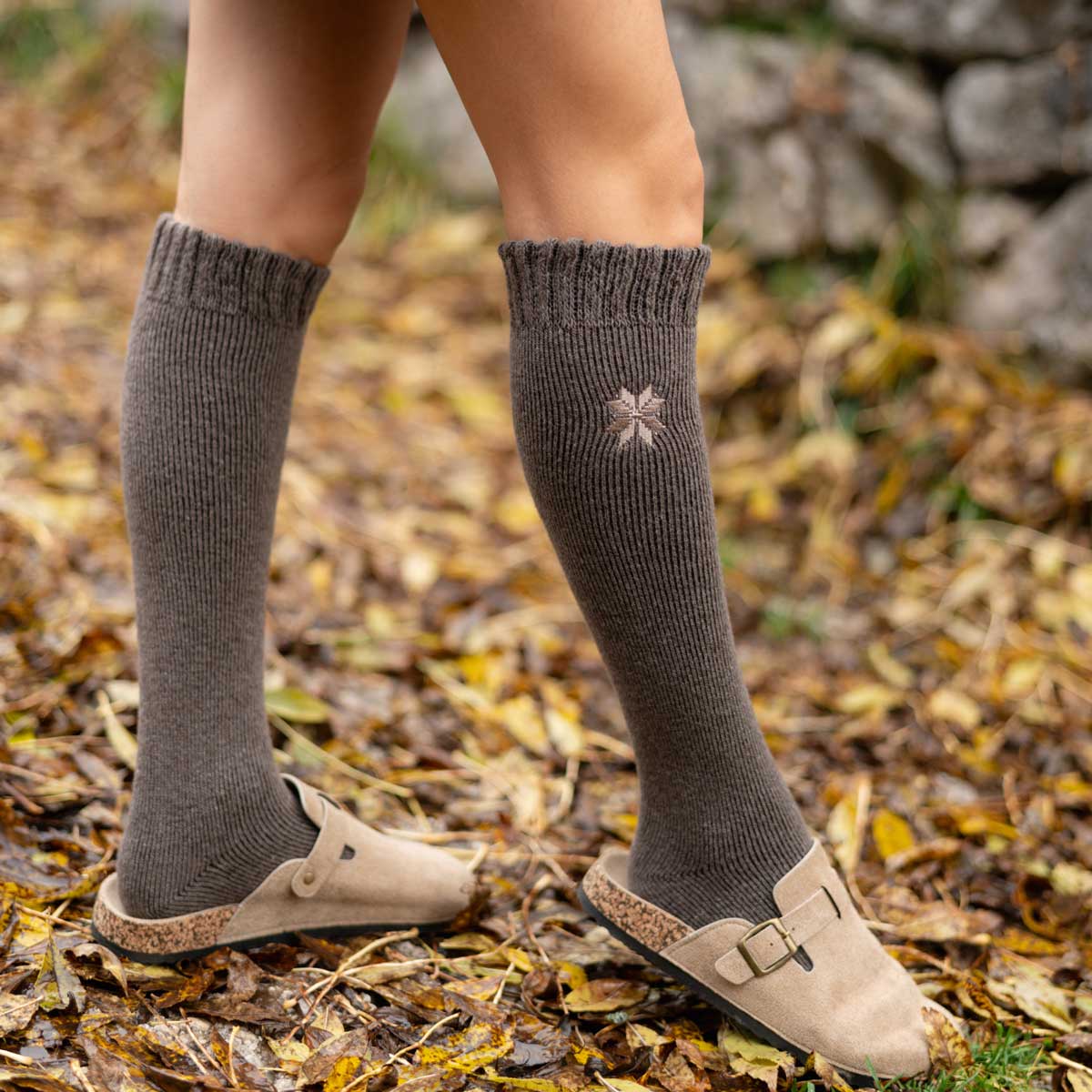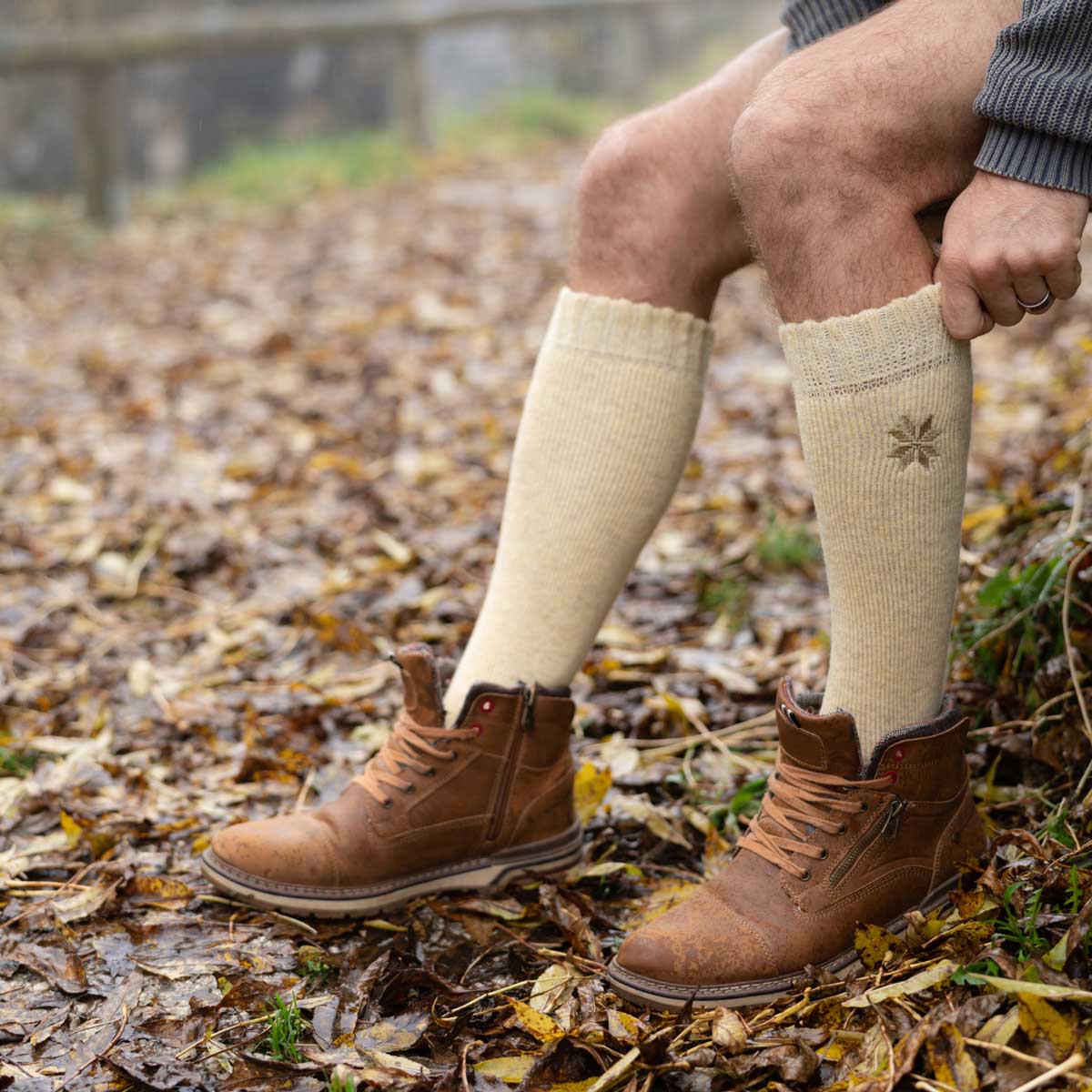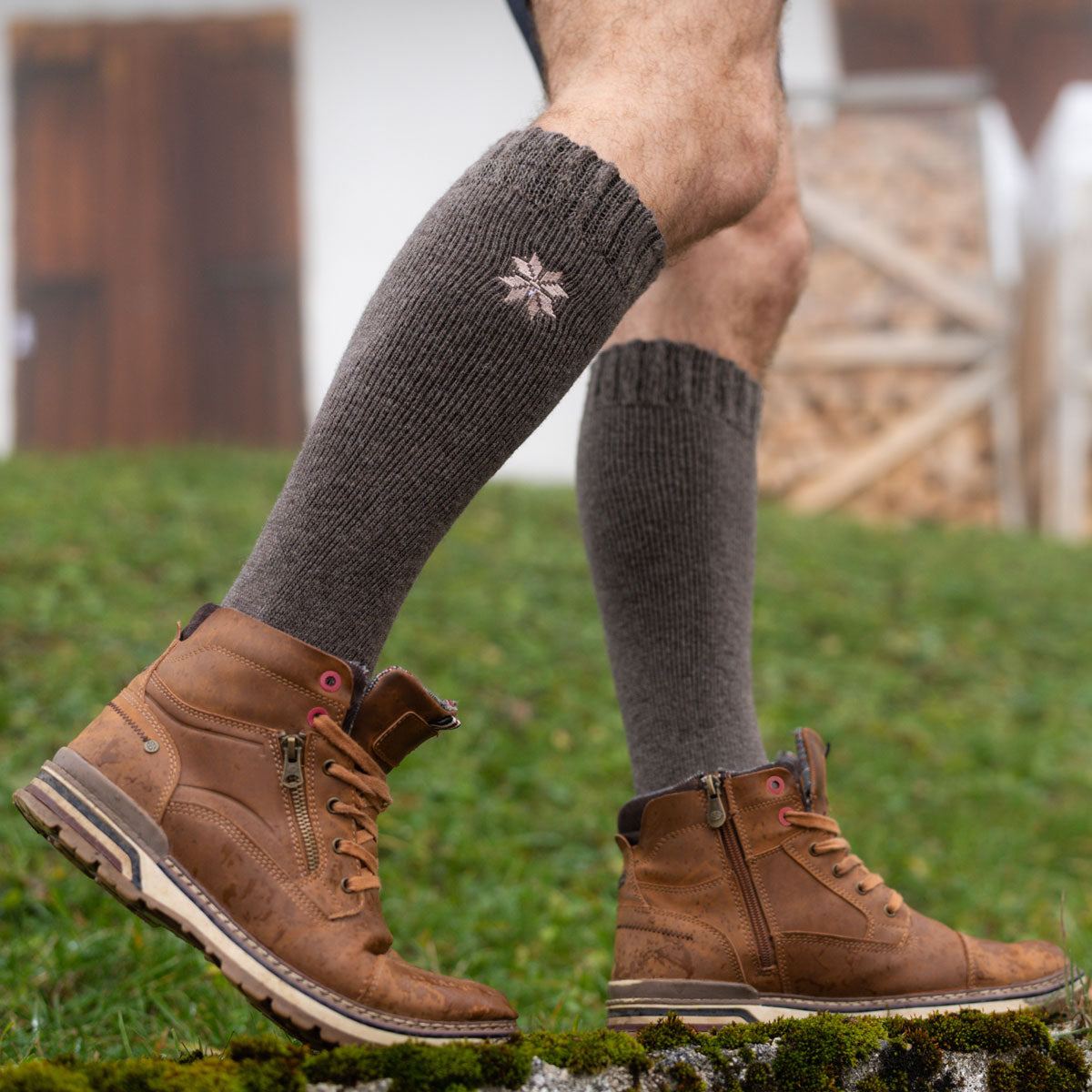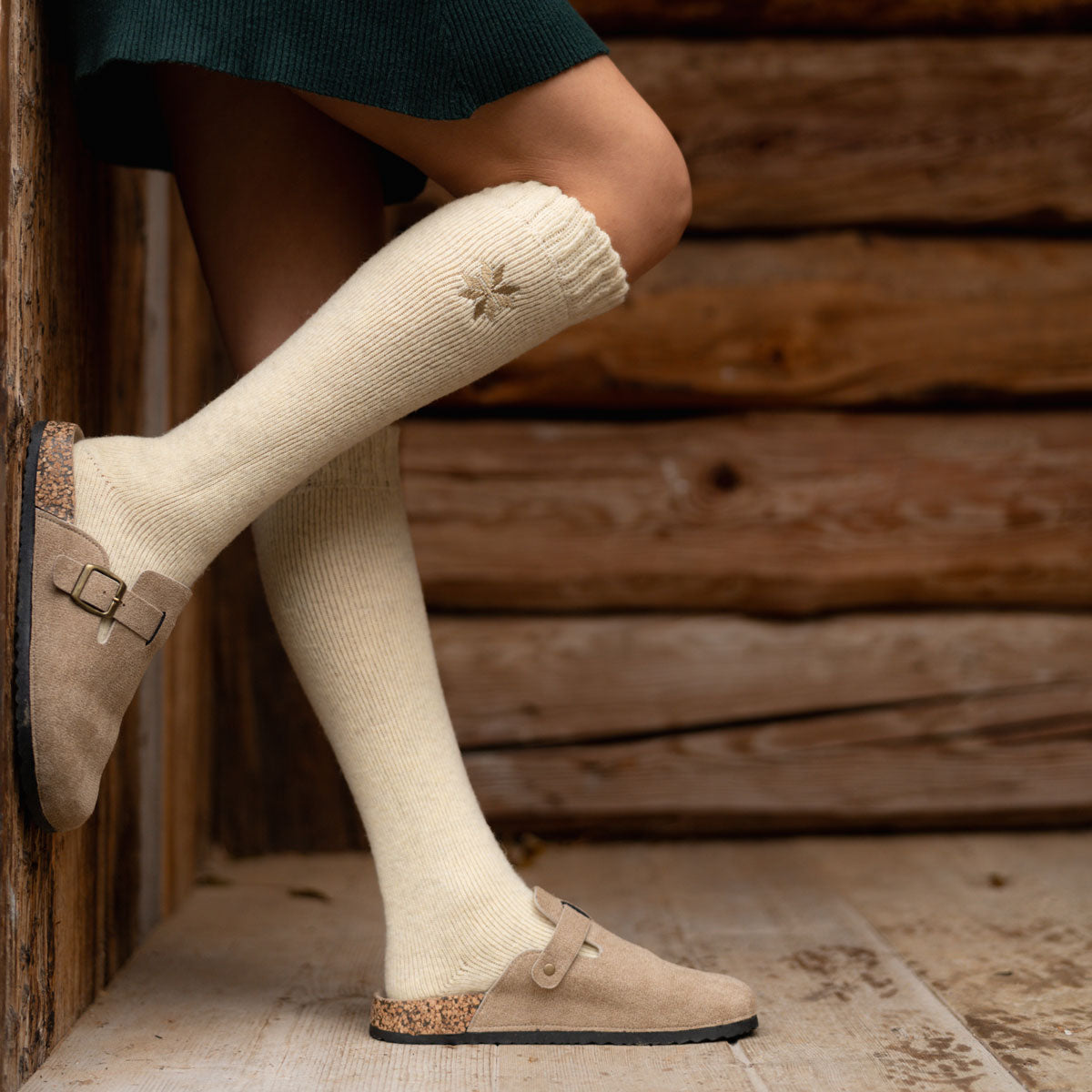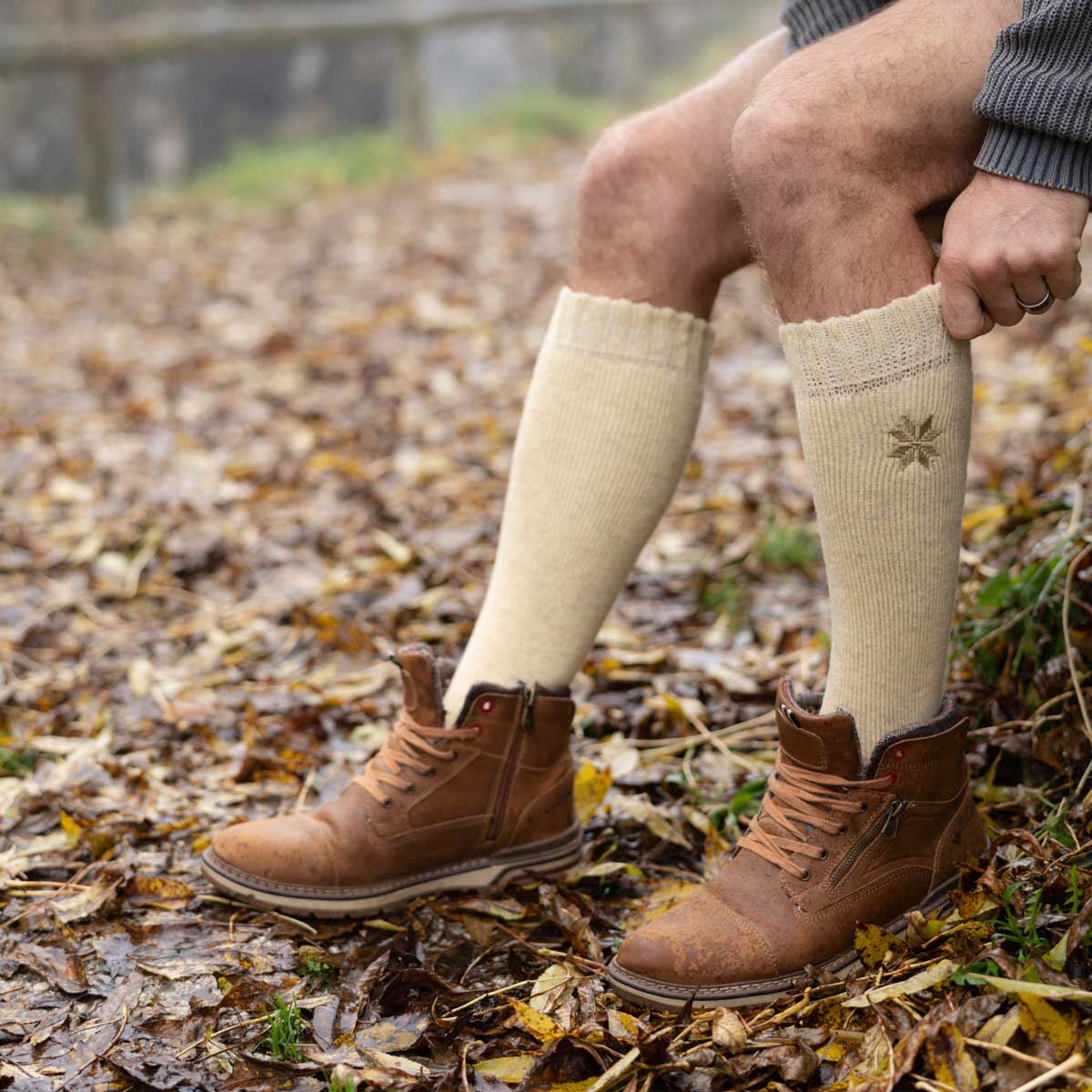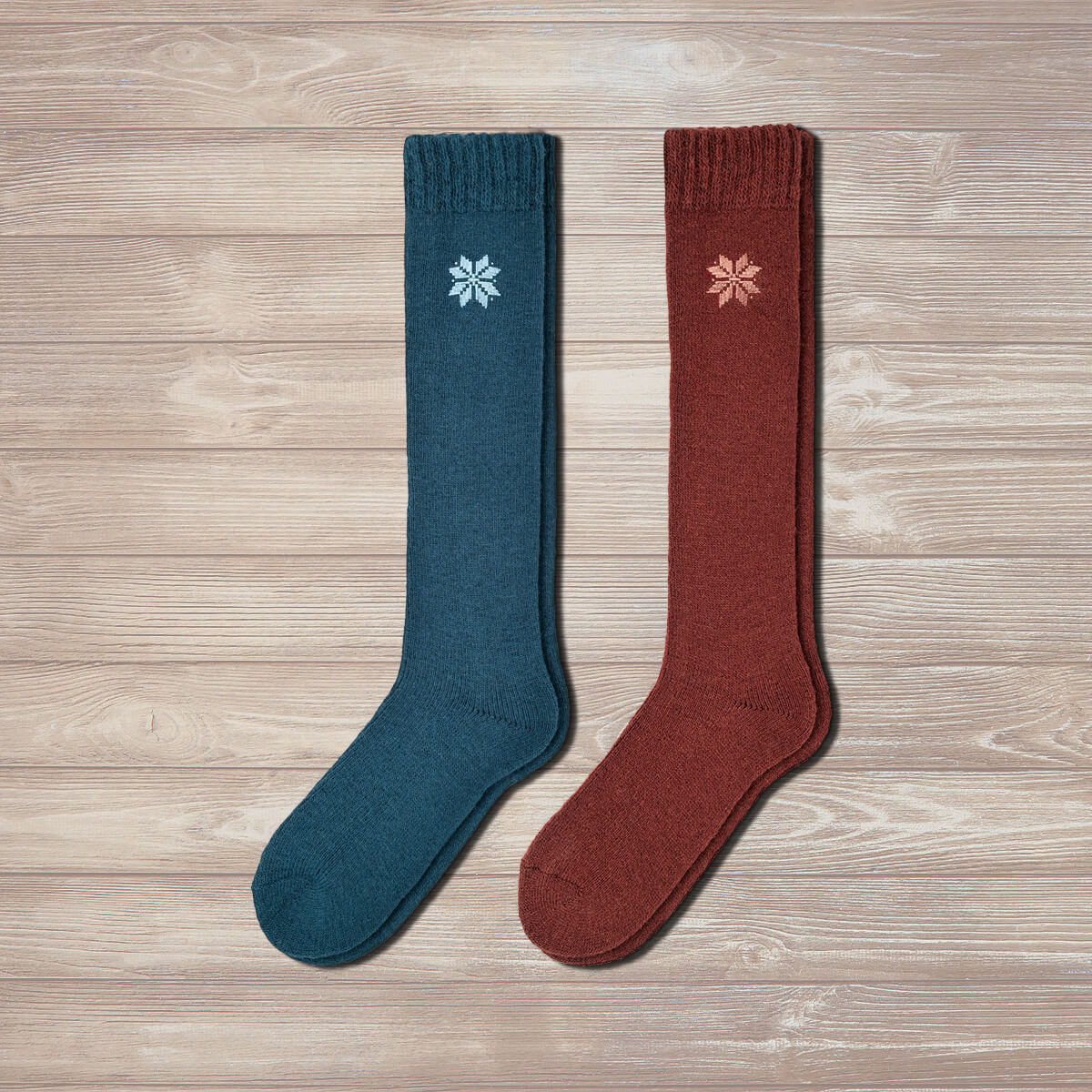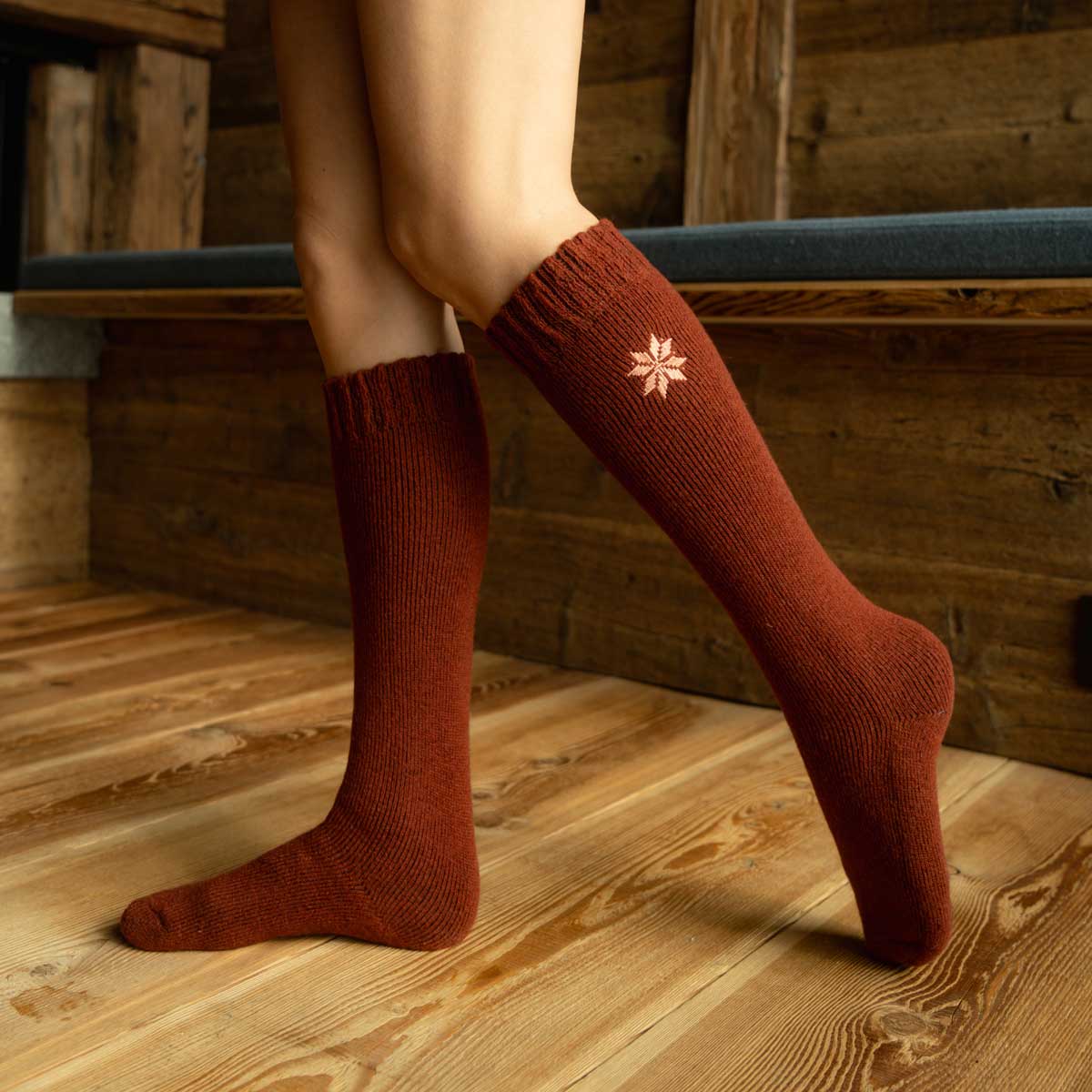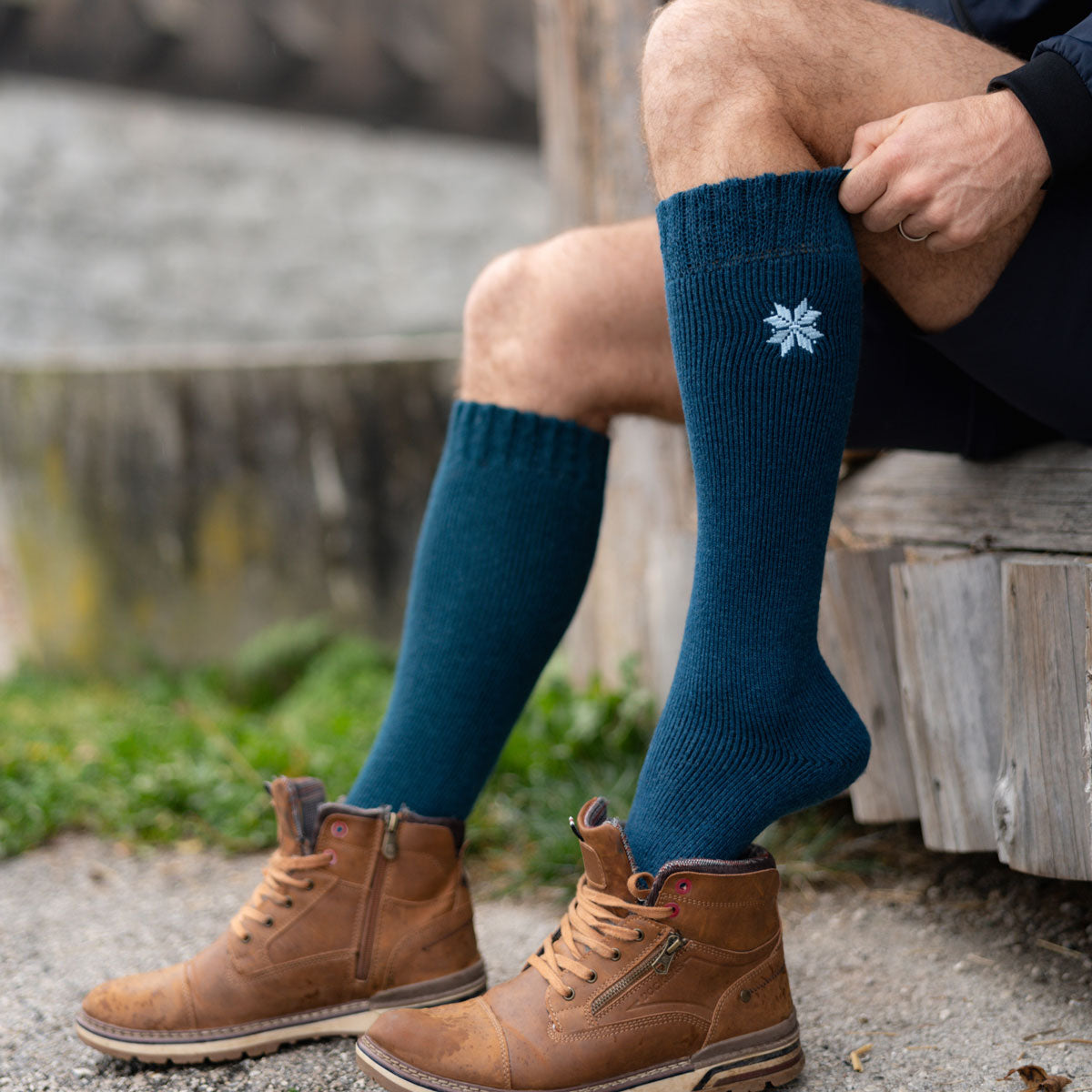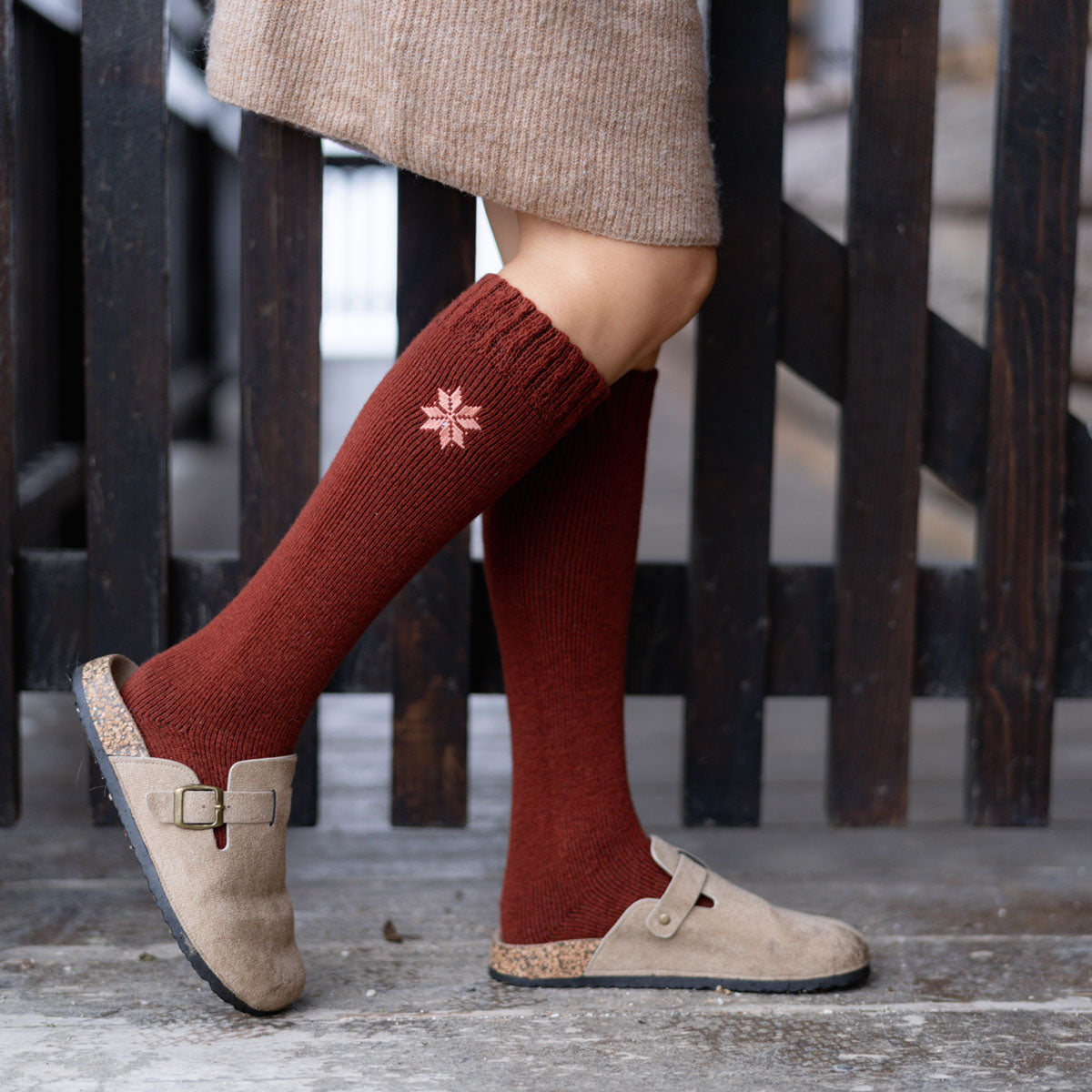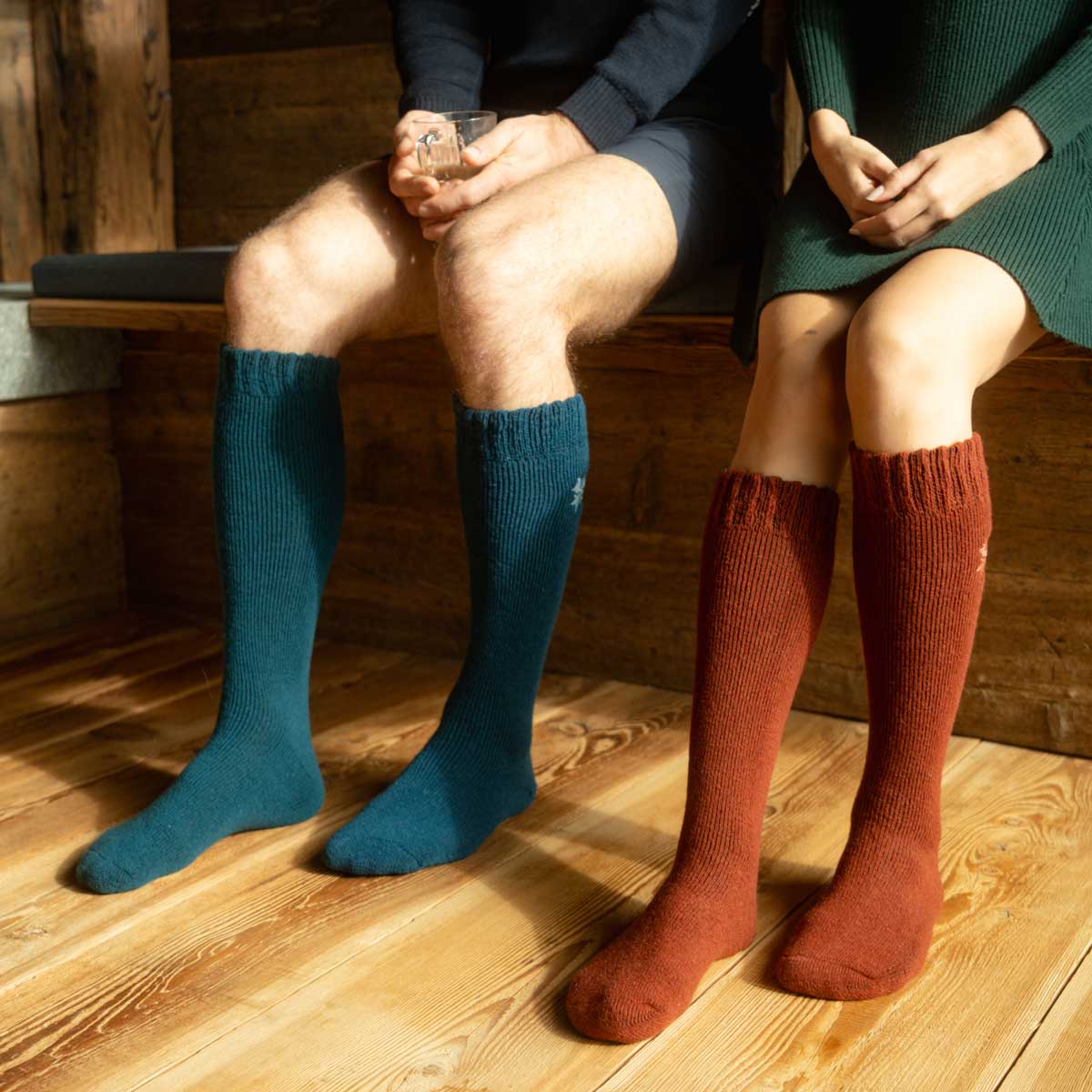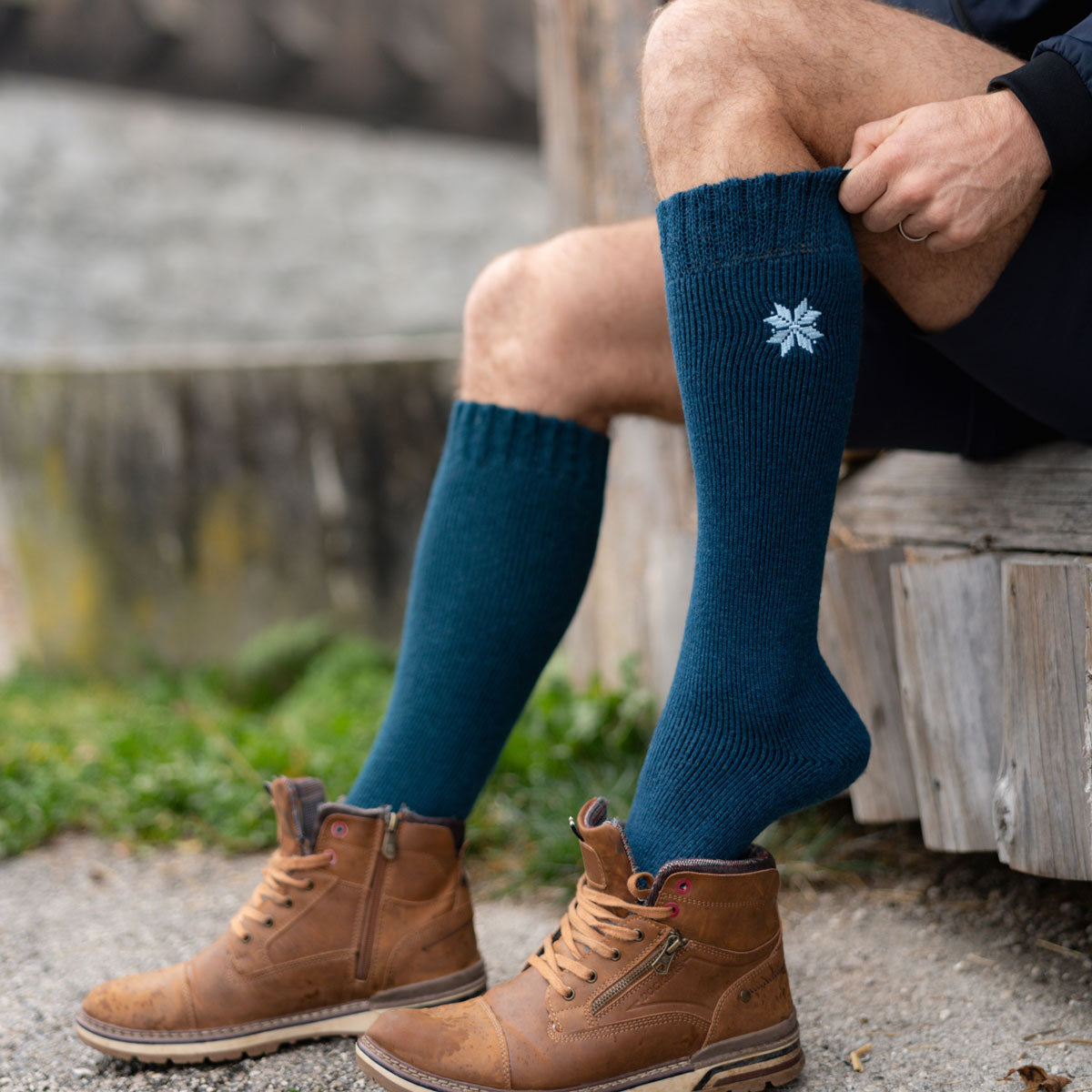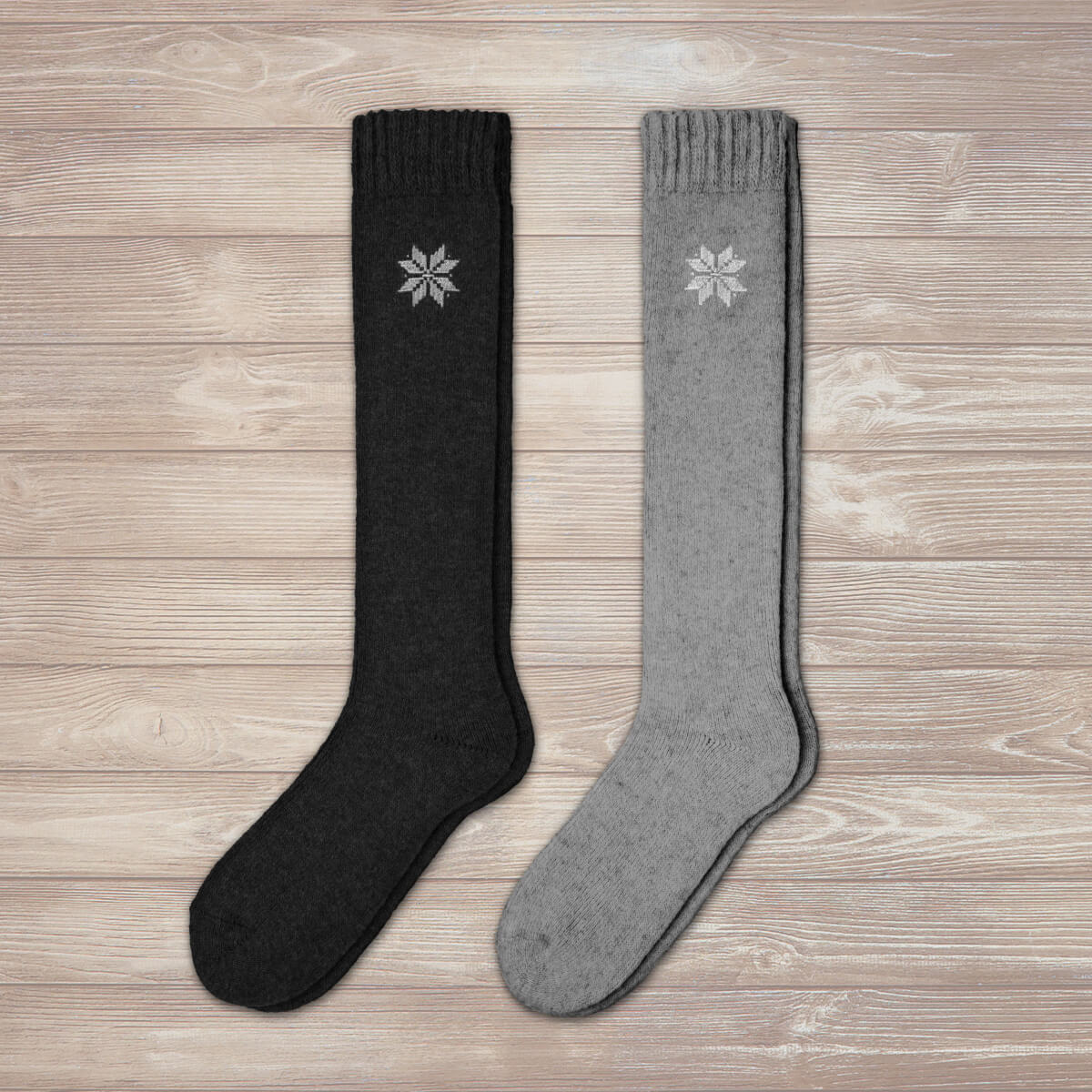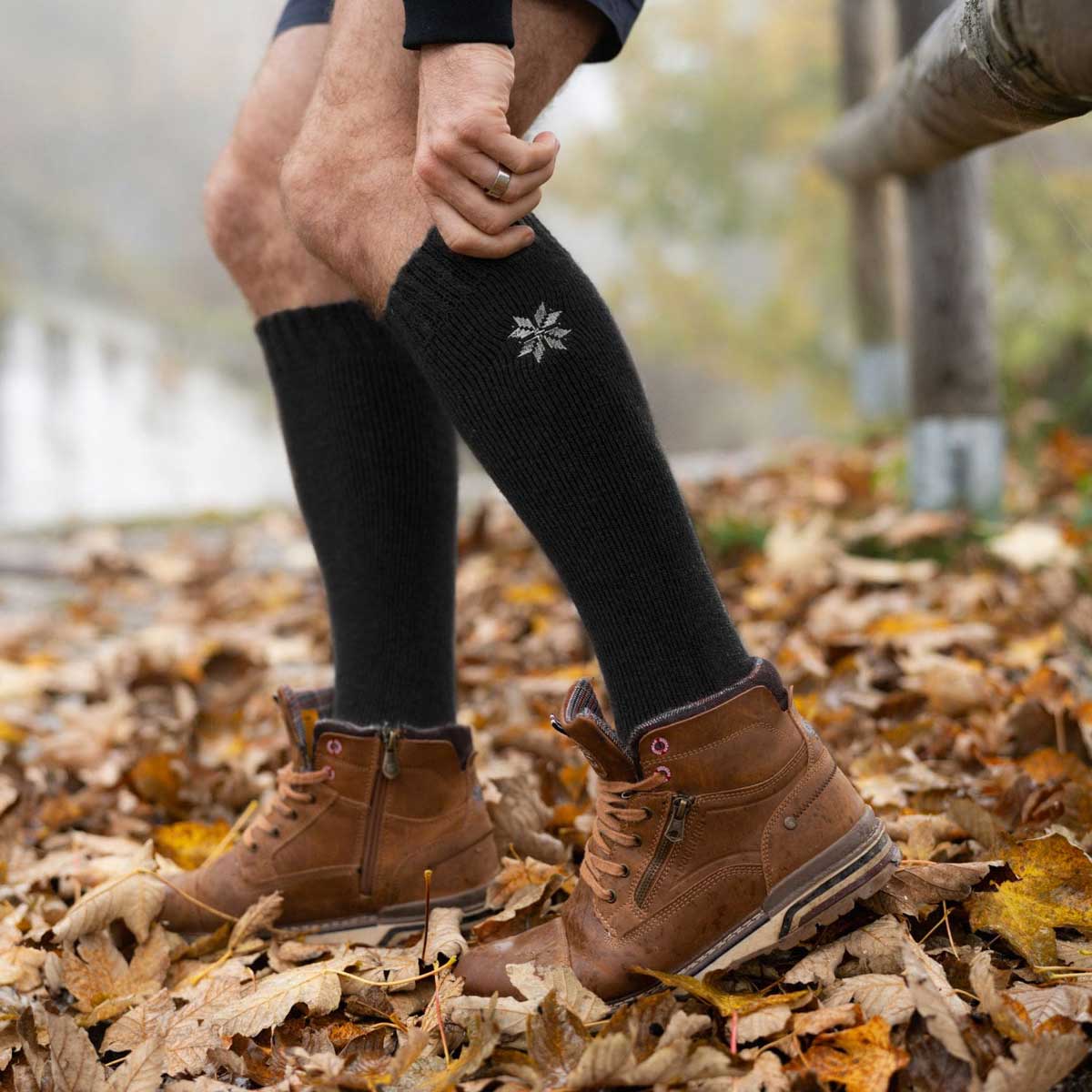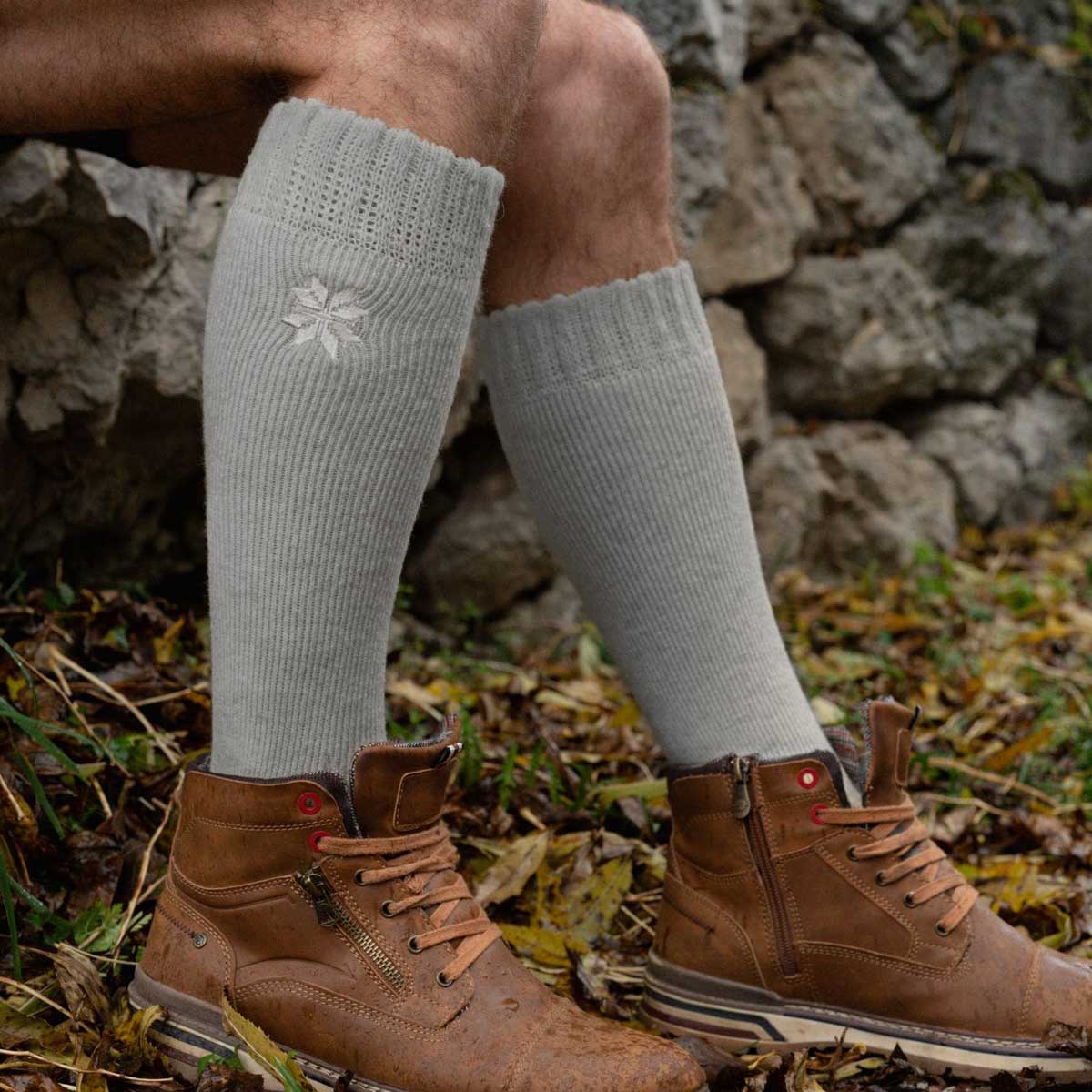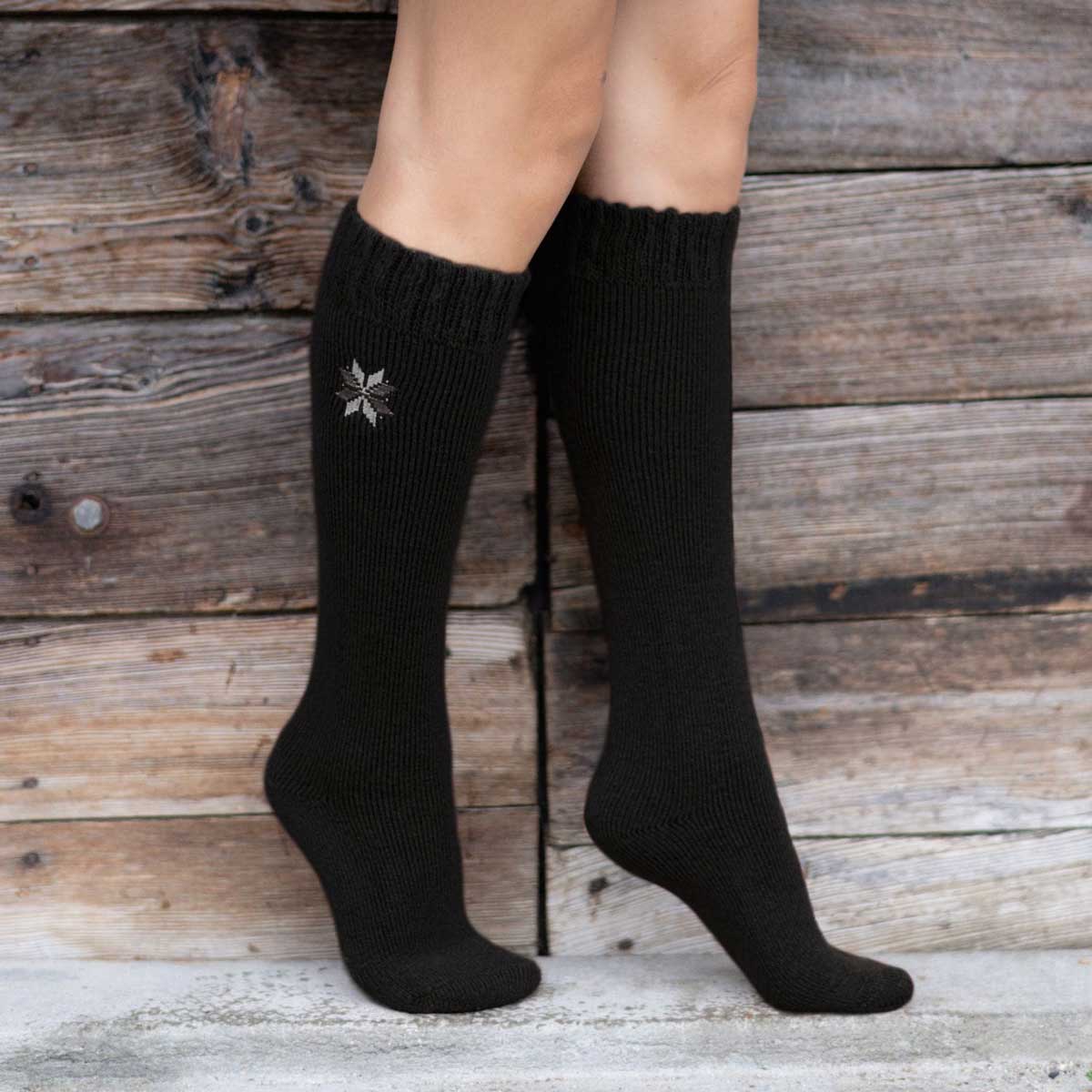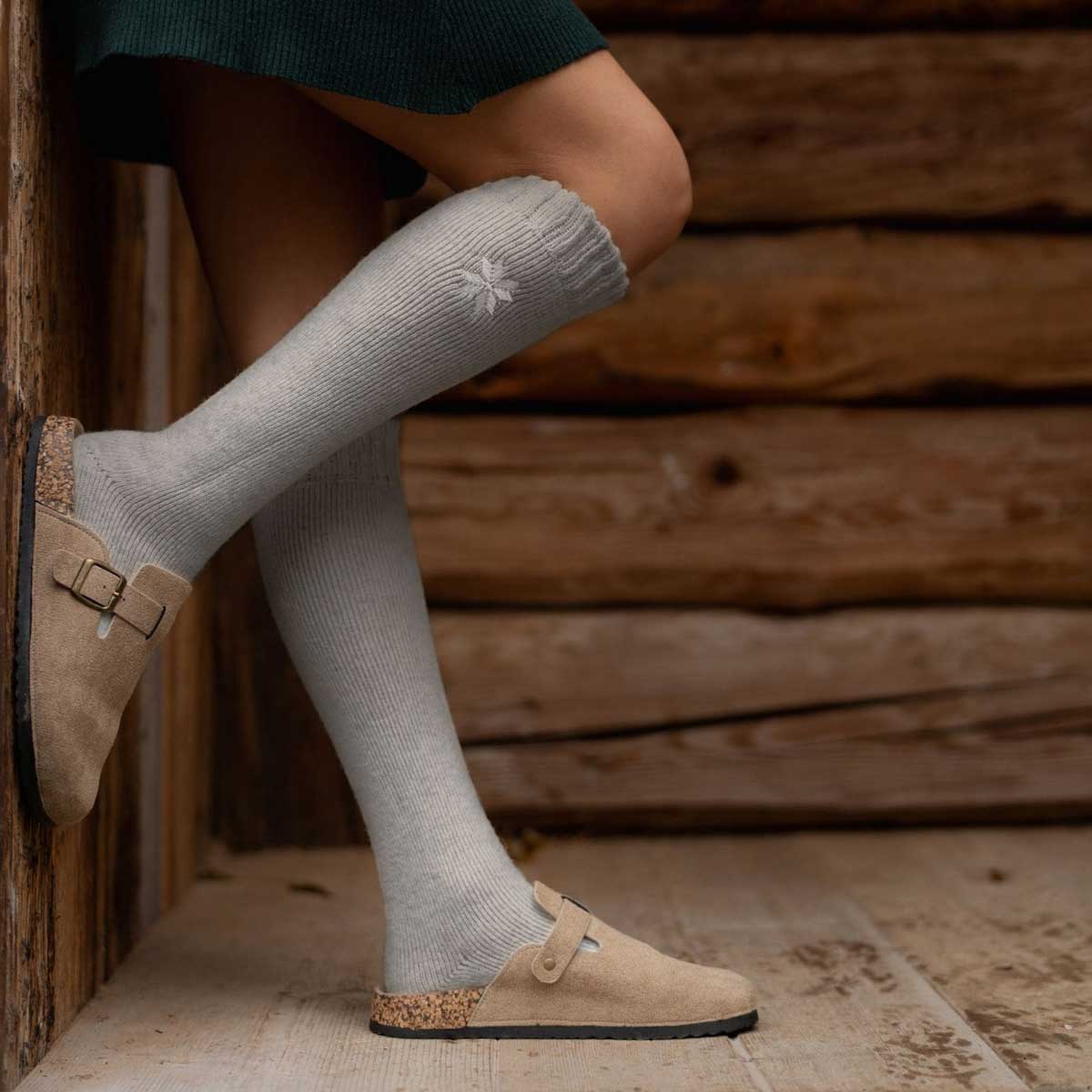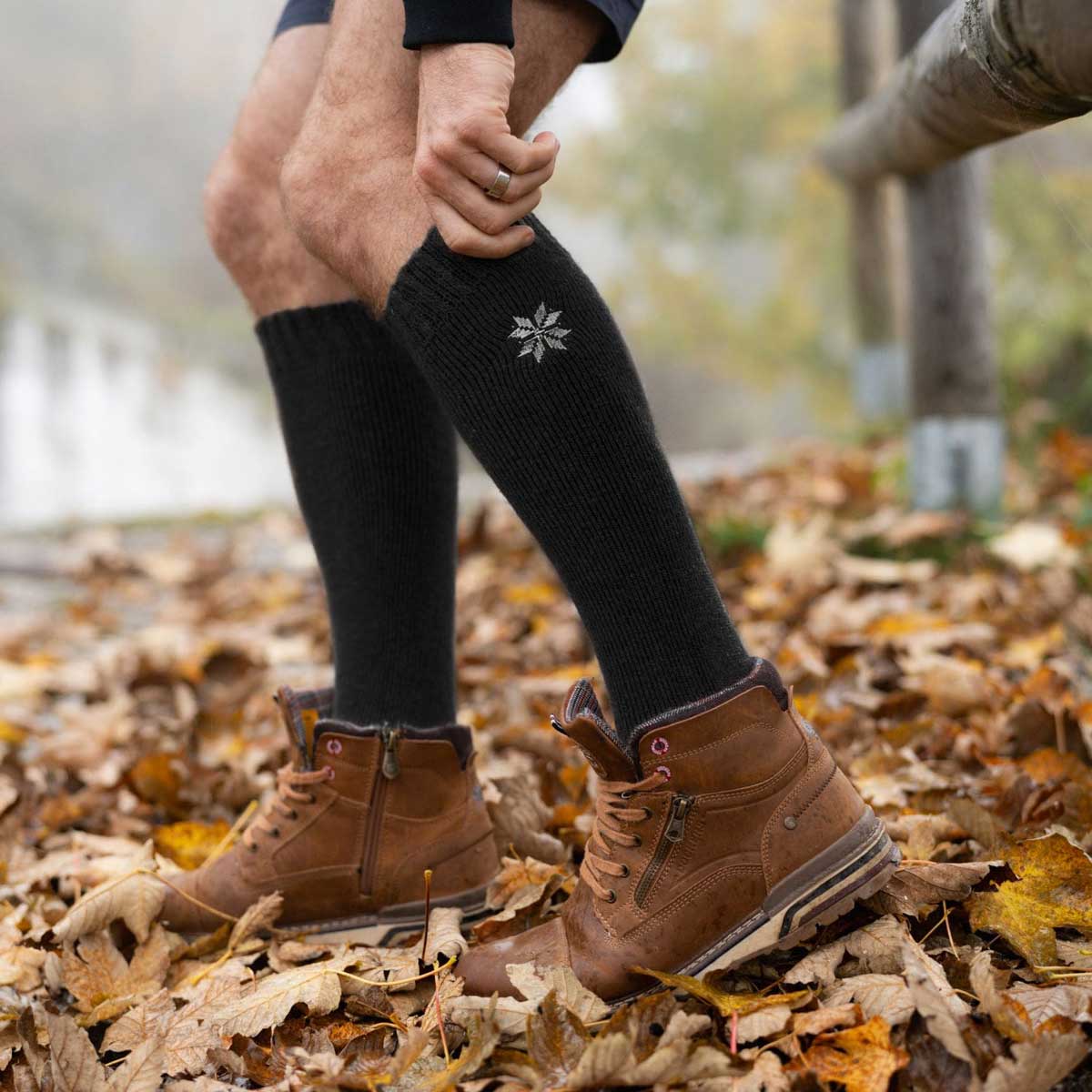Your Cart is Empty
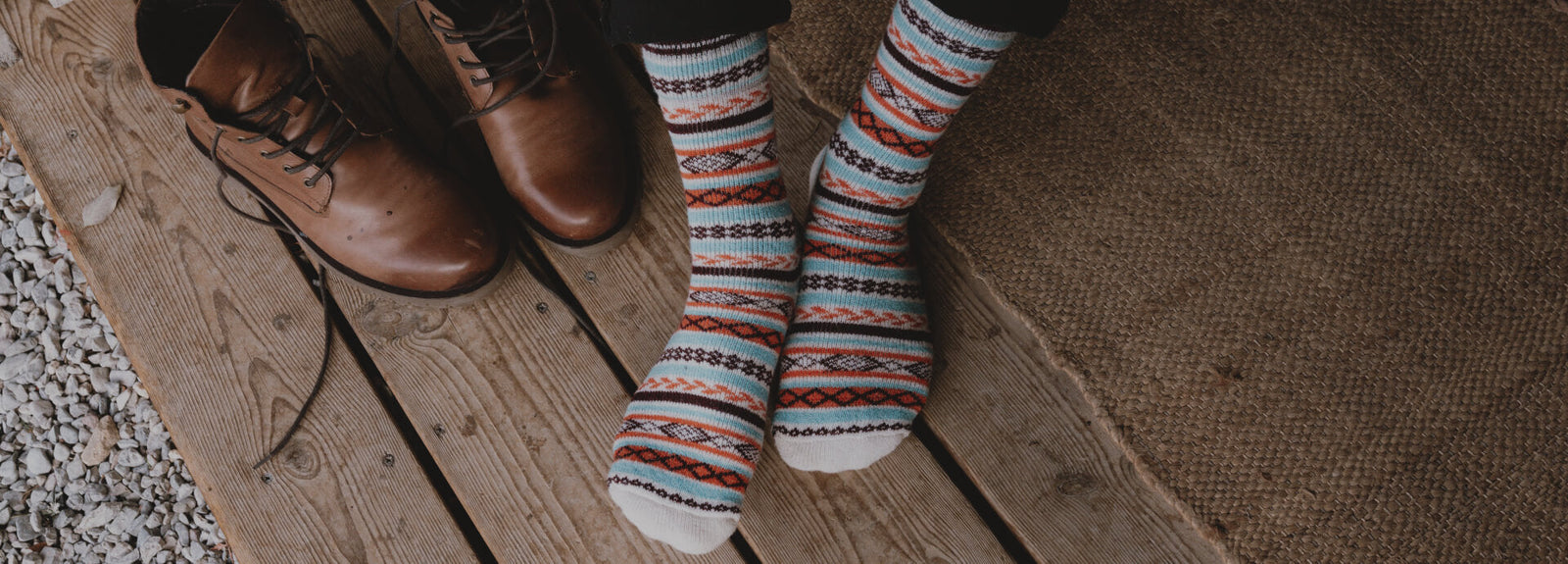
Guide to Keeping Your Feet Toasty: The Best Socks for Cold Weather
10 min read
The article emphasizes the importance of wearing warm socks in winter, particularly Merino wool socks, which are highly recommended for their moisture-wicking and insulation properties.
It’s getting cold, and you may be tempted to stay in bed wrapped in your blanket, layering yourself in your warmest clothes. But don’t forget about warm socks. Stay tuned to discover all the ways Merino wool socks will keep you snug as a bug in a rug this winter.
If you're searching for the best cold weather socks, look no further than Merino wool—trusted by winter lovers and outdoor adventurers alike.
Understanding the Importance of Warm Socks in Cold Weather
Why so much hassle for a pair of socks, you may ask?
It’s important to dress adequately for the weather. As temperatures decrease, you become more sensitive to health issues like the common cold or the flu. While these illnesses are not directly caused by the cold, your immune system takes a hit when temperatures drop.
Every piece of your outfit should be chosen with the cold in mind. However, your socks play a key role in keeping you insulated and cushioned from the elements. Your body’s extremities are more exposed than other parts. In addition to direct exposure, your hands, feet, and head get colder faster because your blood migrates to your core. Therefore, choosing a warm and insulating material can make all the difference in how you experience this winter—Merino wool socks might just be the answer.
They are especially recognized among the best socks for cold feet, thanks to their thermal regulating capabilities.

The Role of Insulation in Cold Weather
Your extremities need to stay protected when there are a few degrees outside and sometimes even inside the house. This is not well-known, with some neglecting to protect their hands and feet during cold weather properly.
It’s a myth that keeping your head warm will shield your entire body from low temperatures. It does help, of course, but your fingers and toes still suffer when the wind blows and temperatures drop. Protecting your feet is indeed necessary for good circulation and avoiding pain and injury caused by sub-zero temperatures. It’s even more important for people with circulatory issues, like Raynaud’s disease.
This syndrome is accompanied by a handful of unpleasant symptoms, including discoloration and numbness in areas where blood does not flow properly.
Moreover, women and older adults tend to have poorer circulation and an increased risk of anemia, which makes the cold more difficult to bear. A pair of warm Merino wool socks can make a world of difference for the most sensitive of us and for others as well. Warming up after exposure to cold is especially difficult for people with health conditions, so Merino wool socks provide a gentle way to stay comfortably warm, even in harsh conditions. These are the socks that keep your feet warm no matter how brutal winter gets.
Why Cushion Matters for Warmth and Comfort
Keeping your feet toasty in winter is no easy feat. Having warm socks is essential, but more is needed in a season where you deal with ice, blizzards, and heaps of snow.
Proper support and cushioning will carry you through the ordeals of everyday life and, if that’s your jam, winter sports. You can benefit from supportive features such as:
- adequately thick socks for warmth and protection
- seamless toes for enhanced comfort and reduced friction
- the renowned moisture-wicking properties of Merino wool to keep your feet dry
- a full terry design for extra softness and insulation
High-quality cold weather socks with cushioning ensure maximum warmth without sacrificing breathability.
What benefits do terry loops provide in warm socks?
Terry loops in socks refer to a specific knitting technique where loops of yarn are left uncut on the inside of the fabric. These loops create a soft, plush texture, similar to what you find in towels. Full terry socks are generally on the thicker side, serving as the ideal insulation against harsh elements. They will also cushion your step, even in the deepest of snow. Paired with the natural properties of Merino wool socks, there will be no temperature low enough to make you shiver.
However, you can pick thin wool socks that will also keep you safe and snug. And we’ve prepared a guide just for that.
How to Choose the Right Warm Socks for Cold Weather
The top warm socks for your needs may take a lot of work to find. Cold weather is a spectrum, after all. So, this is what you should consider.

Factors to Consider When Selecting a Pair of Warm Socks
Sock thickness is a primary aspect to consider. You should also think about length - do your boots reach your ankles? Your knees? Do they go over them? Each pair of Merino wool socks is fit for someone. In the next section, we'll break down the different types of warm socks by thickness and length to help you find the perfect match for your needs.
Thin wool socks are ideal for boots that do not give ample space for movement. They are best suited for mild, cool, and dry days but may not provide enough insulation for extremely cold or wet conditions. Thin wool socks are often referred to as lightweight socks.
Thick wool socks are top picks for snowy days and times when temperatures are seriously in the negative, providing extra insulation and cushioning. In sock terminology, these would be called midweight or heavyweight socks, depending on the thickness.
No-show socks (Invisible Socks) are best for hot and dry conditions where minimal coverage is needed. Often worn with low-cut shoes or sneakers to maintain a "barefoot" look while providing some protection and moisture-wicking.
Ankle Socks are commonly used in spring, summer, early fall, or mild to warm conditions where you need more coverage than no-show socks but still want breathability. Suitable for casual wear, light sports, and low-cut sneakers or running shoes.
Quarter Socks rise above the ankle but stop below the calf. They are helpful for cooler weather but not extreme cold. They are often worn for outdoor activities and sports where a little extra coverage is needed without full leg protection.
Crew Socks end at mid-calf. They are versatile for all seasons, particularly fall, winter, and spring. Crew socks offer extra protection and warmth and are great for casual wear, hiking, and outdoor activities.
Mid-calf socks reach the middle of the calf or slightly higher. They are excellent for cold weather. They are frequently used with boots or dress shoes for added coverage and warmth.
Knee-high socks rise to just below the knee. They're typically worn with knee-high boots or winter boots for full-leg protection and insulation. Also commonly used for sports like skiing, snowboarding, or soccer.
Over-the-knee socks extend over the knee and can cover part of the thigh. Offers extra warmth and leg coverage for outdoor activities or fashion purposes. Excellent for very cold or harsh winter conditions, offering maximum warmth and insulation.
Thigh-high socks reach up to the thigh. Worn with skirts, dresses, or shorts to keep the legs warm. They are best for cold seasons, mainly fall and winter, where maximum leg coverage is desired.
Over-the-calf socks rise just above the calf but below the knee. Best for cool to cold weather or for use with high-cut boots in wet or snowy conditions.
Benefits of Thick Socks to Keep Your Feet Warm
It's high time we highlighted thick Merino wool socks. They tend to be the safest pick when wintertime gets capricious.
You may be afraid of excess heat and sweating. Thankfully, Merino wool socks excel at wicking away excess moisture while keeping your feet at a comfortable temperature. The secret lies in its natural structure. Merino wool fibers have microscopic "kinks" or crimped patterns that create small pockets of air. These air pockets act as natural insulators, trapping warm air close to your skin when it's cold and helping regulate body temperature.
At the same time, the kinks in the fibers allow Merino wool to be incredibly breathable. When your body temperature rises, these air pockets help release heat, and the moisture-wicking properties of Merino wool pull sweat away from your skin. This dual ability to insulate and promote airflow means that Merino wool socks keep your feet dry and comfortable, preventing both overheating and chilling.
How to Look for Warm Socks That Keep Your Feet Cozy
The most important characteristics are the big three:
- material
- thickness
- length
As temperatures vary, you may find yourself more drawn to long socks or regular crew ones. And, of course, you'll need warm socks that can handle the coldest winter days and milder conditions.
Sock thickness and the proper material will ensure the utmost comfort even when the weather gets difficult to navigate.
Wool vs. Cotton Socks: Which is Better to Keep Your Feet Warm?

There are two natural materials that people love: wool and cotton. But can both of them withstand extreme cold?
The Warmth and Insulation Properties of Merino Wool
Wool is renowned for its warming properties. It's been used for thousands of years for this purpose, dating back to ancient civilizations. Some people worry that wool might cause overheating by being too warm, but as explained in the sections above, this fear is unfounded. Its breathable structure prevents overheating by allowing moisture and excess heat to escape.
Merino wool socks take the properties of woolen clothing and ramp them up to eleven. This fine material is gentler on your skin than other wools available on the market, thanks to its incredibly fine fibers, which measure 15-24 microns in diameter. These fine fibers make Merino wool softer and less itchy than coarser wools, such as traditional wool, which can measure up to 40 microns.
Additionally, Merino wool has a high warmth-to-weight ratio, meaning it provides significant insulation without being heavy or thick. This is a crucial advantage over other types of wool, which often need to be much bulkier to achieve the same level of warmth. As long as you wash Merino gently, it will be by your side for a long time, especially when mixed with other sturdy and stretchy materials, which increase its durability and shape retention.
Why Cotton Socks Might Not Be Ideal for Cold Feet
Cotton is a well-liked material, and it's easy to see why: it's durable, breathable, and can withstand significant physical wear and tear. However, there is one crucial thing it cannot do — insulate your feet in cold weather. Cotton is a much better choice when the snow has melted and the sun is back in full force.
Moreover, cotton socks does not wick moisture as effectively as wool, which creates a high risk of discomfort in cold, wet conditions. Your feet can get damp easily, creating a clammy feeling - worlds apart from the toasty feel of Merino wool socks.
So, our number one recommendation for cold weather is to choose the Merino wool socks.
Exploring the Warmest Socks for Cold Temperatures

Understanding the Socks Made for Extreme Cold
Extreme temperatures require extreme…ly warm socks. Merino wool socks fit the mold no matter the temperature, but thick and ultra-thick versions are the most adept at keeping sub-zero temperatures at bay. You can also select different lengths for your Merino wool socks based on the boots and wintertime clothes you wear.
When temperatures plummet, our top recommendation is the Nature Collection, where each pair boasts 70% Merino wool. This is the highest percentage of wool available in our blends.
The Nature Collection is also very versatile in terms of design. With a warm, yet subtle palette of colors inspired by the majestic Nordic landscapes, you can wear its Merino wool socks in virtually any combination, including dress shoes.
Regular socks are the best for those who prefer ankle booties, combat & tactical shoes, and skinny ⅞ trousers. A downside is that you may need some additional legwarmers on days with harsher weather.
Our Nordic knee-highs are ideal for those who want to stay stylish in skirts and dresses even when temperatures drop. Merino wool socks going up to your knee will also act as effective legwarmers. Another benefit is that they will prevent your calf chafing from longer boots.
How to Ensure Your Feet Stay Cozy in Winter Boots
Although you can start by waterproofing your boots and choosing resistant materials, footwear is only the first part of your journey. Fur-lined versions are increasingly popular, and they may be a good pick.
However, the risk of overheating is real. Even more so if you do not have the adequate warm socks. It's best to pair your winter boots with Merino wool socks, as their moisture-wicking capabilities will keep you simultaneously warm and fresh.
Tips to Keep Your Feet Dry and Comfortable in Colder Months

Dryness and comfort seem like an impossible mission during winter, but there are ways to achieve both. Our suggestion is to wear boots that are made from or treated with waterproof materials. Avoid suede, as it tends to absorb water. The best waterproof materials for footwear include leather, which can be treated for water resistance, gore-tex and rubber, which is naturally waterproof. For best results, use commercial waterproofing sprays or waxes specifically designed for your footwear materials.
Essential Socks for Winter to Make Your Feet Happy
At Nordic Socks, you can pick and choose from:
Nature Collection (70% Merino wool) – for that extra touch of warmth and softness.
Activity Collection (40% Merino wool) – perfect performance socks for staying active in any season.
Mountain Collection (40% Merino wool) – rugged and ready for those mountain hikes.
All the featured Merino wool socks are unisex. Moreover, there are kids socks available. You can choose warm socks for your child so their first snowy days will be easier to navigate.
Nordic Socks Thickness Levels
We know that one size doesn’t fit all, especially when it comes to sock thickness! So, we’ve designed five levels, from ultra-thin to ultra-thick, to match your every need. Here is a quick overview:
- Ultra-thin: Best suited for summer and late spring – light and breathable.
- Thin: A great choice for spring and early autumn.
- Medium: A reliable option for crisp autumn days.
- Thick: Excellent for ice sports or enduring winter chills.
- Ultra-thick: Built for when temperatures drop to freezing.
Find out more about our sock thickness levels [here].
Whether you're looking for the best socks to keep feet warm during hikes or daily commutes, Merino wool outperforms all others. Our Nordic designs rank among the best socks for winter, blending fashion with full-scale foot protection.
Trust in our selection when shopping for socks to keep feet warm on your next alpine adventure or city stroll.
FREQUENTLY ASKED QUESTIONS
How do I stop my feet from sweating in cold weather?
To stop your feet from sweating in cold weather, start by choosing moisture-wicking socks made from Merino wool blends, which keep your feet dry and warm. Avoid cotton socks, as they trap moisture, leaving your feet cold and damp. Using foot antiperspirant can also help reduce sweat, and wearing breathable, insulated shoes will allow moisture to escape. If you're outdoors for long periods, change into a fresh pair of socks to prevent dampness. Foot powders like talcum or cornstarch can further absorb excess moisture. Always make sure your boots are completely dry before wearing them again, and stay hydrated to regulate your body temperature and reduce sweating.
Can I wear a single layer of socks for hiking in winter?
Yes, you can wear a single layer of socks for hiking in winter, but it's important to choose the right type of socks. However, if you're hiking in extremely cold or wet environments, a double-layer system may offer better protection. Wearing a thinner, moisture-wicking sock underneath a thicker, insulating sock can help manage sweat and provide added warmth. In moderate winter conditions, a single layer of well-insulated, moisture-wicking socks should suffice, as long as your boots are also properly insulated and waterproof. The decision depends on the weather, terrain, and your comfort level, but a single layer of the right socks is often enough for winter hiking.
Get Exclusive offers
Join our email list and get exclusive offers and 10% off on first order.
Recent Articles
-
 What Are the Warmest Wool Socks for Outdoor Work October 21, 2025
What Are the Warmest Wool Socks for Outdoor Work October 21, 2025 -
 Why Are Merino Wool Socks Considered the Best Choice? September 23, 2025
Why Are Merino Wool Socks Considered the Best Choice? September 23, 2025 -
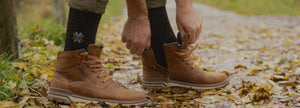 Warm Socks to Wear with Boots September 23, 2025
Warm Socks to Wear with Boots September 23, 2025 -
 Why it’s worth investing in high-quality, durable socks for kids August 16, 2025
Why it’s worth investing in high-quality, durable socks for kids August 16, 2025 -
 WHY COTTON SOCKS ARE THE BEST CHOICE August 12, 2025
WHY COTTON SOCKS ARE THE BEST CHOICE August 12, 2025
Related Products
Enjoying this content?
Sign up to get notification about new articles, special offers and new products.
Knee High Socks
NEWS & UPDATES
Get the newsletter to receive direct information about offers and new products.
Where are we shipping to?
Purchase from your country’s website.
It’s the fastest way to pamper your feet with comfy socks.
other countries
English






